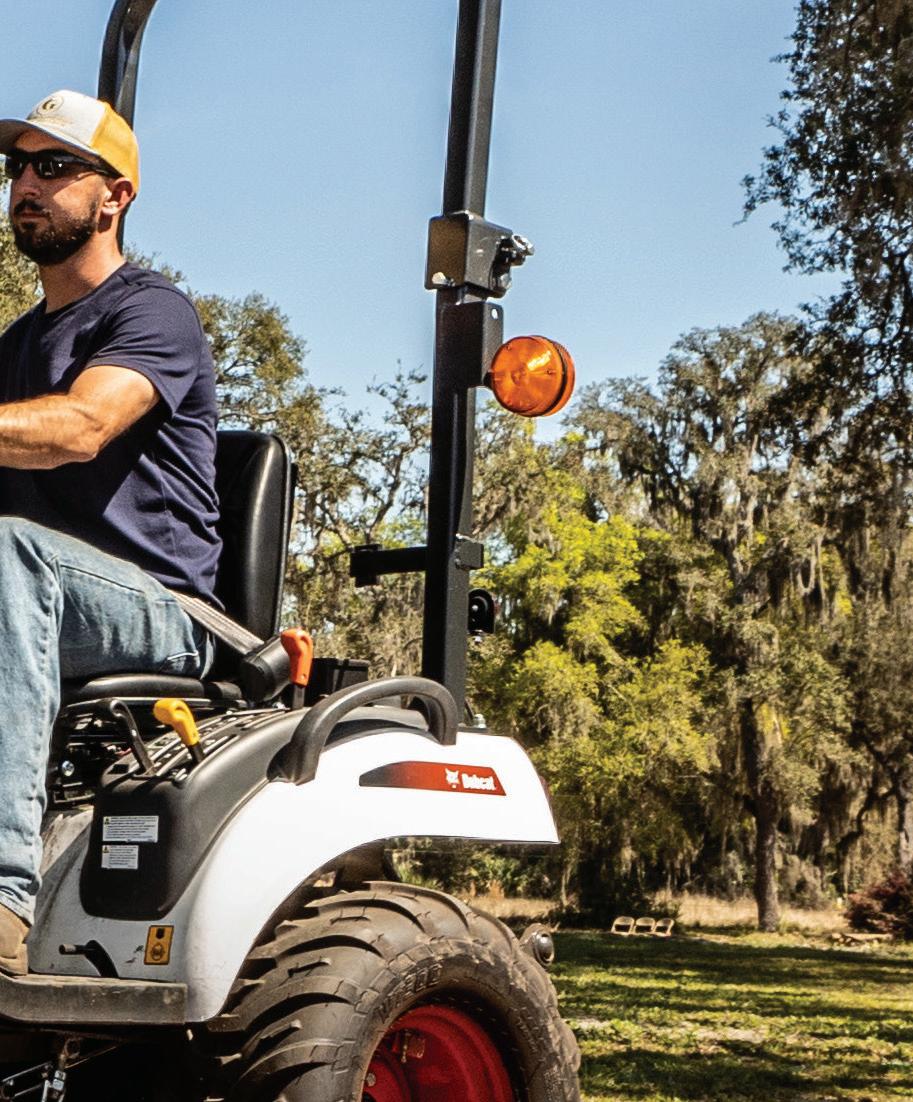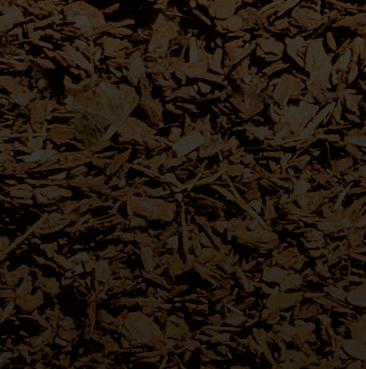
























































Pest prevention wasn’t much of a problem in Nevada.
Our biggest hazard was black widows. Carelessness meant painful bites and possibly antivenin. They crept in dark corners and under cabinets — essentially, anywhere we didn’t sweep often. Black widows also populated my hoop house and lived between my bale gardens. If they took up residence in my house, I removed them to protect my family and pets. But in my garden, I just watched where I placed my hands. All my spiders had names and jobs, especially during fly season.
Garden pests included squash bugs, earwigs, and tomato hornworms. Good soil meant rolypolies, which also ate my melons and cucumbers if I allowed those plants to lie on the ground. (Pro tip: Place a paper plate under those fruits, or let them grow within an organza bag to keep the pests out.) All of those pests were easy to deal with organically, and they didn’t cause much damage if I remained vigilant.
The pests for pets occasionally included mosquitoes and ticks, depending on whether we lived near woody areas or standing water. (I went 15 years without a single mosquito bite.) The air was too dry for fleas. And while we had to be wary of West Nile virus and Q fever, other tick-borne and mosquito-borne diseases weren’t prevalent in the area. I never had to worry about fowl pox in my chickens nor orf in my goats. Flies were the worst vector in my area of the desert, thanks to all the agriculture, so I kept medicine on hand in case my goats got pink eye. And I’ve never had to deworm any of my livestock unless I’d purchased them in California.
Then, we moved to Kansas.
The dogs are on medication for heartworm prevention. We’ve already removed
a few ticks the dogs found just from lying in the backyard, and I’ve already had my first itchy experience with chiggers. All kinds of pests munch on my garden, and I’m still learning just what those are. But — and this surprised me — they don’t include rabbits. In Nevada, we had so little nutritious wild forage that not fencing your garden meant all the wildlife considered it a buffet and it could disappear overnight. Here in Kansas, the deer and rabbits have enough forage that they don’t touch my vegetables.
So while natural pest prevention is important, what’s needed and what works clearly differs depending on where you live. In this issue of
we’re happy to share advice from Jennifer VanBenschoten, an herbal guru who offers safe and effective flea and tick control for pets (see Page 26), no matter your location. She also provides crucial advice regarding which products are toxic to pets. I’ll be mixing up some powdered neem and diatomaceous earth for my dogs as an added defense against all those parasites that could make them miserable. I’ve seen how well neem worked against those few Nevada pests, so I’m optimistic for its use in Kansas.

What tips and home remedies can you offer regarding pest prevention — whether livestock parasites, pet pests, garden invaders, or dangers to your families? Write to me at MAmes@ MotherEarthNews.com so I can try your recommendations and share them with other readers.
May your pests be manageable,
CLASSIFIED
Classifieds@MotherEarthNews.com



CUSTOMER CARE 800-234-3368; CustomerService@OgdenPubs.com
Publisher B U
Director of Circulation & Marketing C O
Director of Newsstand & Production B C
Director of Sales B L

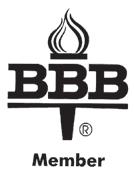
Director of Information Technology T S


Director of Finance & Accounting R H
Founders J J S
M E N (ISSN -) August/September 2023, Issue No. 319.
M E N is published bimonthly by Ogden Publications, Inc., 1503 SW 42nd St., Topeka, KS 66609-1265. Periodicals Postage Paid at Topeka, KS and additional mailing offices. POSTMASTER: Send address changes to Ogden Publications, Inc., 1503 SW 42nd St., Topeka, KS 66609-1265. For subscription inquiries call 800-234-3368. Outside the U.S. and Canada, call 785-274-4365; fax 785-274-4305.

Subscribers: If the Post Office alerts us that your magazine is undeliverable, we have no further obligation unless we receive a corrected address within two years.
© 2023 Ogden Publications Inc. Printed in the U.S.A.
In accordance with standard industry practice, we may rent, exchange, or sell to third parties mailing address information you provide us when ordering a subscription to our print publication. If you would like to opt out of any data exchange, rental, or sale, you may do so by contacting us via email at CustomerService@OgdenPubs.com. You may also call 800-234-3368 and ask to speak to a customer service operator.
16 Preserve Nutrition
Learn what factors reduce nutrients in home-canned food.
1 News from Mother
What’s Pestering You?
4 Dear Mother
Reader letters of inspiration, community, and more.
8 Green Gazette
Updates on Indigenous gardening, rabbit hemorrhagic disease, coastal marshes, “rewilding,” and more.

12 Firsthand Reports: Off-Grid
Living in Western Oregon
A four-decade solar veteran offers tips on voltage and reducing usage.
22 Elderberries: A Wondrous and Wild Fruit

A healthy, flavorful addition to your pantry and medicine cabinet.
28 Food Versus Fuel
Could new biofuels ease an energy crisis?
32 Find Your Way to the Fair A reader’s journey from magazine pages to Fairs across the country.
34 Cloth Diapering in the Modern Era Navigate the new diaper options.
37 Black Foodways: Nourishing the Community, Sharing Knowledge African culture and culinary practices enrich neighborhoods.
40 Unique Infused Vinegars Infuse vinegars with local flavors.
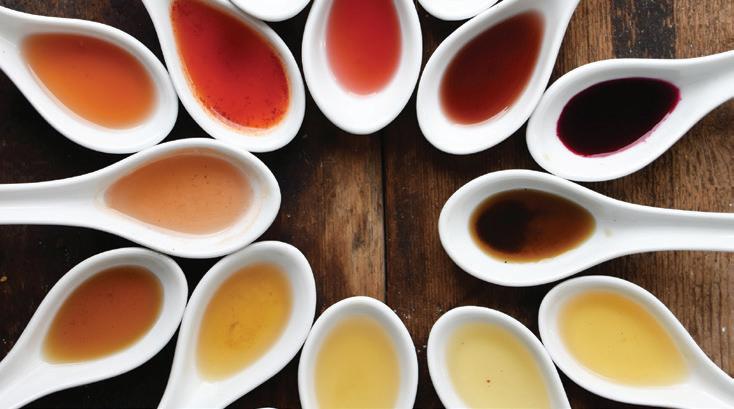
46 The No-Land Homestead: Get Started on Sustainability Self-sufficiency without acreage.

51 What Drives Us: Electric, Hybrid, or Gasoline?
How one homestead uses all three types of power.
26 Herbal Flea & Tick Remedies
Protect your pets from parasites with these herbal repellants.
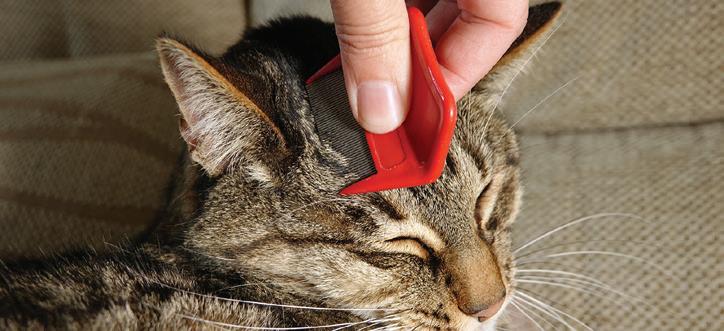
58 Craft Your Own Botanical Watercolors
Upcycle deadheaded blossoms into beautiful and natural paints.
54 Comparing Types of Canning Lids
Disposable or reusable: which topper is on top?
62 Mother Tested: Smarter Gardening Tips for safe and healthy growing.

64 Gone Off-Grid
Hoss Boyd and Kerena Reese answer questions about energy systems.
66 Country Lore
Reader tips for using old cream, repurposing chest freezers, longer apple storage, and more.
72 Ask Our Experts
Expert advice on laying hens, safely dehydrating mushrooms, and toxins in comfrey.
96 Photos from the Field Reader-submitted photos.
40


PROVEN NATURAL NUTRITION















STRONG IMMUNE SYSTEM

STRONG MUSCLES INCLUDING A HEALTHY HEART


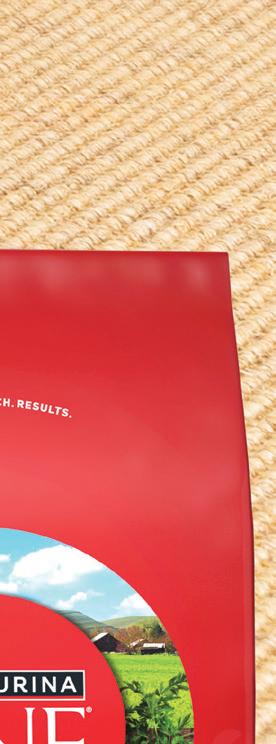

A Di erence From Day ONE
 Purina trademarks are owned by Société des Produits Nestlé
Purina trademarks are owned by Société des Produits Nestlé


I just finished reading “Planning the Plan” by James A. “Hoss” Boyd and Karena Reese (April/May 2023). I’m looking forward to the next article in this series. Even though I’m too old to think about starting a homestead, I still like to read about how to do it and pick up a tip or two to use in my simple urban life with backyard raised beds. I so want to come see the MOTHER EARTH NEWS Sustainable Homestead Project property when it gets under construction. It’ll be very interesting to follow the progress. I’d really enjoy a website so I can access updates on the progress of the Homestead Project. Just a thought.
I’ve been a MOTHER EARTH NEWS subscriber since 1980. The subscription was originally given to me as a Christmas gift by a good friend. I thoroughly enjoy the articles and information in each issue. Many articles, more than I can mention, have helped me with my gardening, cooking, canning, lawn work, projects, and much more.

I was born in middle Georgia on a small farm. I was raised there with my grandfather, grandmother, mother, and three brothers. It’s where I learned to be a selfsufficient, organic gardener. It would be much later in my life that being self-sufficient and gardening organically would become such a “thing” and “the best way


to go.” My grandfather taught me early on that “if you take care of the soil, the soil will take care of you.” Gardening and the outdoors have become the most pleasurable therapy in my life.
Today, I’d like to thank MOTHER EARTH NEWS for printing several articles highlighting Black farmers and gardeners, and acknowledging the contributions they’ve








(CONTINUED ON PAGE 80)

“My grandfather taught me early on that ‘if you take care of the soil, the soil will take care of you.’ Gardening and the outdoors have become the most pleasurable therapy in my life.”Nebraska Dave Nebraska













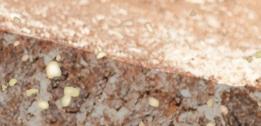












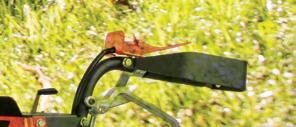
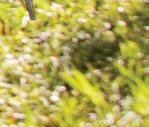
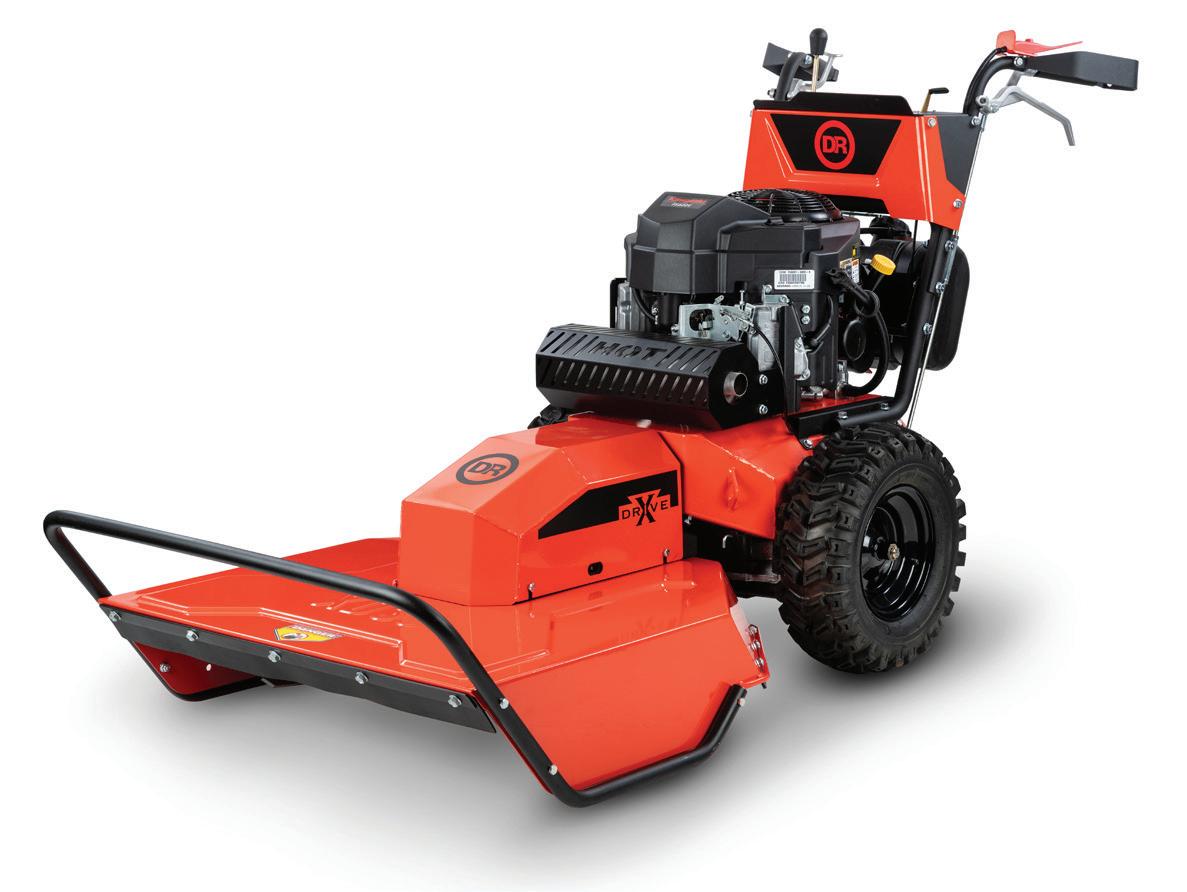







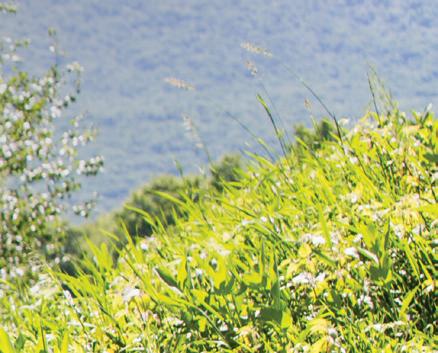


























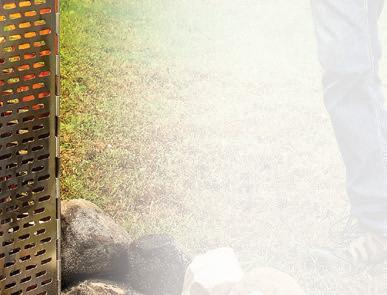












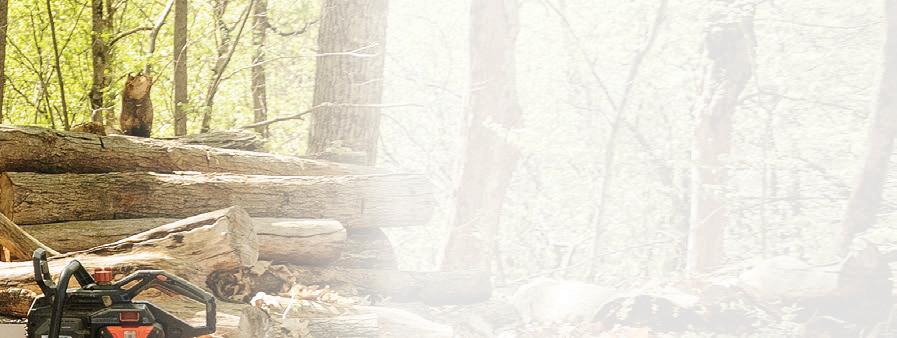



• 5X the power of a handheld trimmer

• TRIM precisely without arm fatigue

• MOW where a bladed mower can’t

• TOUGHEST trimmer cord available









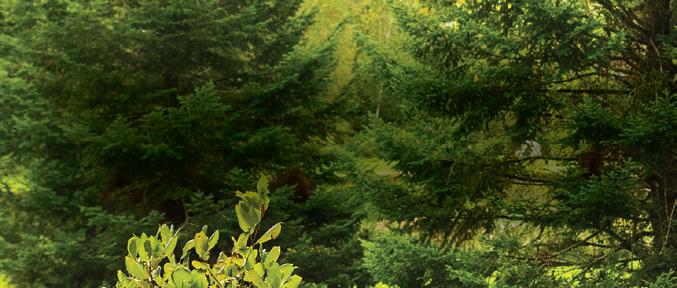
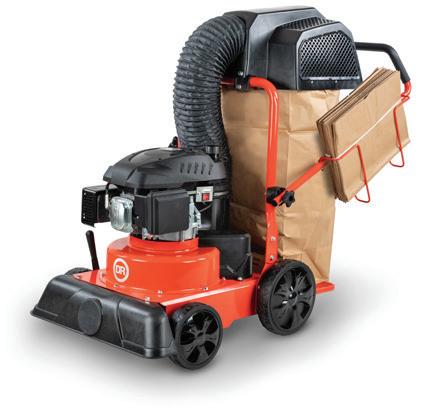

Haul
• Self-propelled hauler
• Powers up hills with ease

• Powered dumping
• Converts to a atbed



Tow-Behind
• #1 in vacuum power and capacity
• NEW PRO MAX model holds up to 450 gallons









• All models newly redesigned with up to 20% more capacity


Walk-Behind
• NEW PILOT XT models ll paper leaf bags for curbside pickup
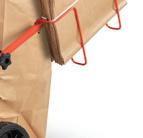
• Collects & mulches up to 50 lbs of leaves
• Includes onboard caddy for extra bags
at 800-456-0516


In a land of high winds and extreme temperatures, dedicated Indigenous groups are working to provide food for their people all year long. On the Pine Ridge Reservation in South Dakota, the Oglala Lakota Cultural and Economic Revitalization Initiative (OLCERI) has been teaching permaculture design courses and building underground greenhouses, or “walipinis,” to increase food sovereignty and build their capacity to provide healthy food for their community.
About 10 years ago, Bryan Deans, head of OLCERI, helped build the first walipini on the Pine Ridge Reservation after years of tornadoes and high winds destroyed large parts of the area. After stumbling upon Earthship technology, Deans had an epiphany: “We live on the poorest county in the nation. How do you create self-sustainability with that? You focus on the things that you do have.” And what the people who live on the reservation do have is abundant sunlight and the capacity to build underground. Since then, Deans has been working on
constructing walipinis that are highly durable and aren’t too labor-intensive to build, using polycarbonate materials for the tops of the greenhouses and upcycled tires to stabilize the walls.
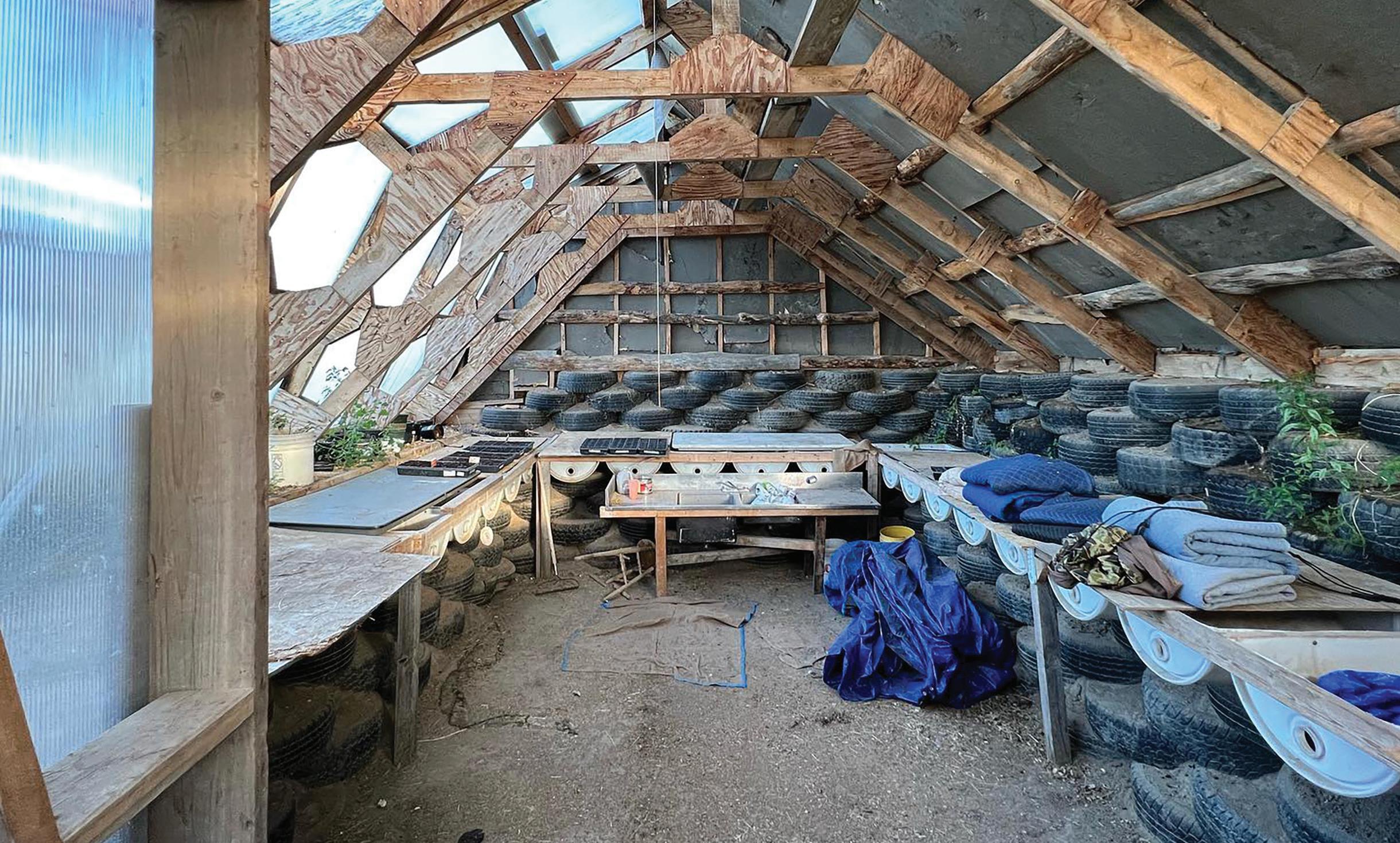
So far, at least eight of these underground greenhouses have been built around Pine Ridge. The OLCERI walipinis sit 8 feet belowground and measure either 3,000 or 1,280 square feet. The larger walipinis can each hold approximately 75,000 plant starts, while the smaller ones can each hold 21,000 starts and typically support about three families on the food grown within. Currently, plants grown inside these greenhouses include tomatoes, squash, hot and sweet peppers, and a wide variety of herbs. The structures are also robust, able to withstand high winds and harsh weather. And because of the greenhouses’ protective nature, Deans says they’re able to extend the growing season to 10 months. This makes the walipini a means of providing affordable, reliable, and nutritious food to the community.
Greenhouses aren’t the only structures Deans has built in the walipini style. He’s also constructed chicken coops; the temperatures stay consistent enough for the animals to lay eggs year-round without any additional light or heat. Other projects of note OLCERI has developed to increase sovereignty include
root cellars built with tires, geothermal batteries, and wind power.

“We’re looking for old solutions to modern problems, [and] we’re looking for new solutions and technology that we can add to these things,” Deans says. “We’re always experimenting. When we read about something cool, we try it out ourselves and add our own flavor of improvements to it.”
Historically, OLCERI has been able to generate funding for projects through donations and crowd-funding. This year, it has an added focus on applying for grants, such as becoming a sub-grantee for The Environmental Justice Thriving Communities Grantmaking Program. Having this kind of funding can help Pine Ridge restore its lands and, according to OLCERI co-founder Bob Rich, even surpass its former capacity. By establishing
solid fencing, bringing back the buffalo, and reestablishing harvestable woodlands, the goal is to make the Pine Ridge Reservation a self-sustaining carbon sink.

“When I look at Pine Ridge, I look at it like a country. Any country that cannot feed its own people is impoverished by definition,” Rich says. And, according to him, bringing back the buffalo is at least part of the answer. “This is … the herbivore for climate change,” he continues. “It’s exactly the way it was before; it hasn’t been changed by breeding, it’s tough as nails, it’s excellent food, and it’s exactly the thing we need to … capture all the carbon back into the soil.”
To learn more about OLCERI and how you can support this initiative, including ways to donate, collaborate, and volunteer, visit www.OLCERI.org.
In March of 2023, the Biden administration approved the Willow project, a massive oil-drilling project set to take place on Alaska’s North Slope. Over the course of its 30-year lifetime, the project is estimated to extract more than 600 million barrels of oil, making it the largest oil development on U.S. public lands. According to supporters of the project, including the Alaska Federation of Natives and the Voice of the Arctic Iñupiat, it’ll generate economic stability in the region and more than $1 billion in tax revenue to fund local education and other services. The Alaska State House voted unanimously in favor of the Willow project.
However, many other groups, such as Sovereign Iñupiat for a Living Arctic (SILA), have voiced their concerns over the project’s disruption to local communities, ecosystems, and Indigenous subsistence patterns. The city of Nuiqsut is only 30 miles from the approved project area, and residents worry about chemical
spills, light pollution, and infrastructure construction that could impact caribou migrations. Nuiqsut community recommendations to mitigate project impacts haven’t been heeded thus far. Some suggestions the Nuiqsut community has proposed include working seasonally to avoid disrupting caribou, and transporting construction materials over land instead of on barges to prevent impacts to whales and other aquatic life. According to a joint letter to the U.S. Interior by Nuiqsut Mayor Rosemary Ahtuangaruak, Vice Mayor Carl Brower, and president of the Native Village of Nuiqsut Eunice Brower, the Bureau of Land Management “does not look at the harm this project would cause from the perspective of how to let us be us how to ensure that we can maintain our culture, traditions, and our ability to keep going out on the land and the waters.” SILA says it plans to continue opposing the Willow project and pressuring the Biden administration for change.
In March of 2020, a rabbit-specific virus began to spread throughout the United States. Rabbit Hemorrhagic Disease Virus Type 2 (RHDV2) has spread to nearly half the states in the country and has been observed in both wild and domestic rabbits. The virus can be difficult to detect, and the U.S. Department of Agriculture reports the only signs are often sudden death or a bloody nose due to internal bleeding. Highly contagious, the disease spreads to rabbits through contact with an infected rabbit or by coming into contact with materials an infected rabbit has been exposed to.

Emergency-use authorization has been granted for the import
Coastal marshes are disappearing at an alarming rate because of climate change and human coastal development. Manmade levees and dams block the sediment needed to rebuild these marshes, and rising sea levels threaten to drown them out completely. Coastal towns give little room for retreating and regenerating. So, scientists have been working on solutions, one of which may be the humble mussel. Small blue-black shellfish, mussels are filter feeders that capture bits of sediment while feeding and put them together in mucus-infused clumps that sink to the ground. These clumps and mussels’ nutrient-rich waste create new habitat for plants, spurring the formation of a new ecosystem. In a 2023 study published in Nature Communications, researchers found the mussels’ real-life effect on marsh generation was five times more than expected from computer-generated models. These findings may help scientists and policymakers decide which marshlands should be prioritized and how best to protect and regenerate them.
and manufacturing of a vaccine that can significantly improve a rabbit’s chances of overcoming the virus. RHDV2 is the first disease veterinarians are actively working to vaccinate pet rabbits against in the U.S. The vaccine is currently administered in two doses, the second 21 days after the first. Other biosecurity measures rabbit owners can take include washing your hands before and after holding rabbits, keeping rabbits off the ground outdoors, taking your shoes off at the door, and preventing other pets from coming into contact with outdoor rabbits. RHDV2 poses no known threat to humans or other animals. To learn more, visit www.Rabbit.org/Resources/RHDV.
Louisiana’s only glass-recycling facility, New Orleans-based company Glass Half Full, works to produce sand for disaster relief and coastal restoration by recycling about 150,000 pounds of glass per month into sand. The company aims to provide a sustainable alternative to extractive techniques, such as mining and dredging, to source sand locally and at less cost to the environment. Recycled-glass sand can also provide restoration and building materials at a much lower price point than traditional extractive methods. A research project at Tulane University received funding to collaborate with Glass Half Full to identify new markets for recycled-glass products and identify where coastal land loss can be safely mitigated with the use of the recycled-glass sand. Learn more about the projects at www.GlassHalfFull.co
With much of Earth’s full ecological functions degraded by human activity in recent centuries, rewilding — the process of returning human-disturbed lands to intact ecosystems — could have many benefits. According to new research published in Nature Climate Change, increased biomass of both plants and animals holds more carbon and can act like a carbonstorage facility, without all the expensive and speculative technology often hailed as a solution to climate change. A study headed by Kansas State University showed that reintroducing bison to North American prairies increased biodiversity and resiliency in those ecosystems. While reintroducing animals to degraded landscapes can lead to many benefits, rewilding may also require a change in our relationship with nature. Activist and author Vandana Shiva has said, “Rewilding means becoming conscious that humans are part of nature, not separate from her.” Even small steps, such as adding a pollinator garden instead of a lawn, could have meaningful benefits.

On the “MOTHER EARTH NEWS and Friends” podcast, we’re so excited to share our conversation with Summer Rayne Oakes, a science communicator, conservation activist, and entrepreneur. We’ll be discussing sustainability with Summer Rayne, including flowers, food, and fashion. Listen at www.MotherEarthNews.com/Podcast/Summer-Rayne-Oakes LISTEN UP!

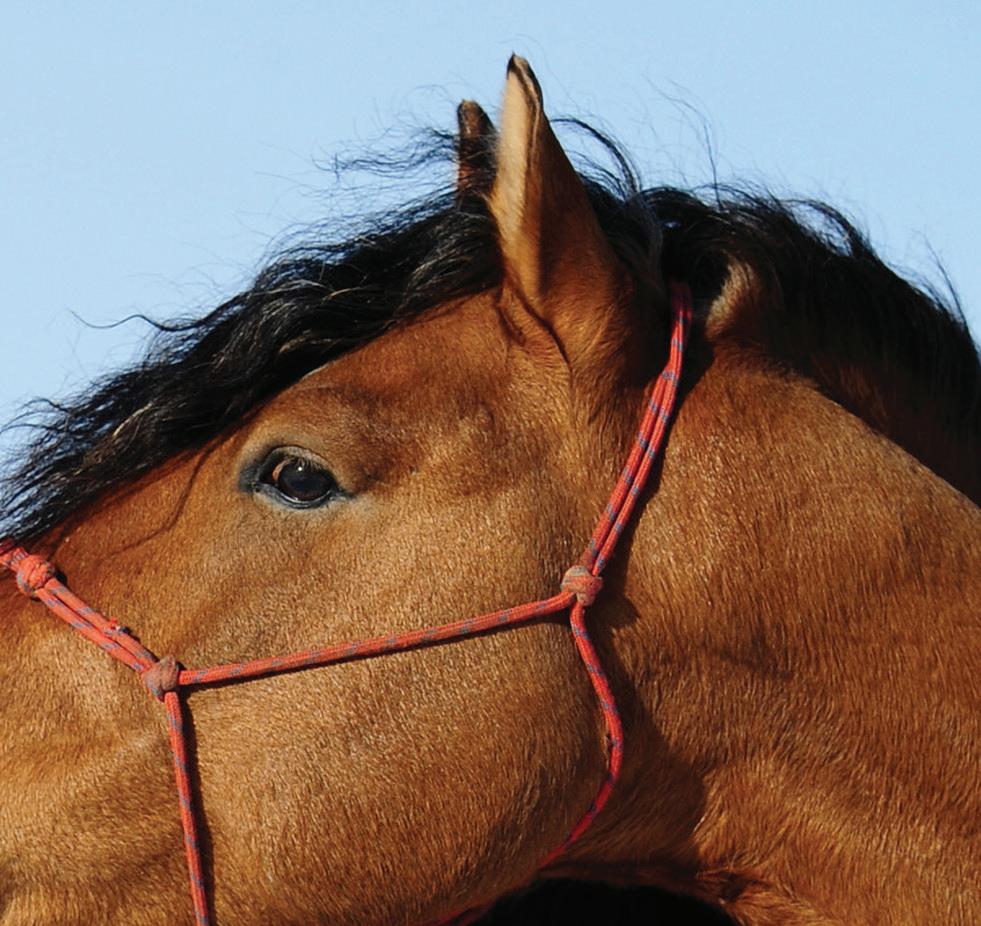



















who’s contemplating off-grid living, I can help with the learning curve.
 By Mark S. McNutt
By Mark S. McNutt
Imust be setting a record for longevity and determination. I’m now celebrating my 40th year of living off-grid in western Oregon.

I didn’t grow up this way. While I’m related to generations of homesteaders, I grew up in the New Jersey suburbs less than 10 miles from New York City. My father, a professional journalist, built our large cinder block and stucco home while working full-time in the city.
Growing up mixing concrete and building things imbued me with a sense of cando and a problem-solving mindset. I’m an ethereal rather than a practical person; I have a successful business as an astrological consultant, serving clients nationally and beyond. But I live off-grid on solar power in a house I co-built over many years that, circa 2000, also had the first residential permit for straw bale in our county near Eugene, Oregon. The 2,000-squarefoot two-story octagon has post-andbeam logs from our land that frame straw bale infill walls and insulation. Almost all the dimensional wood was grown, sustainably harvested, and milled here, costing about 10% of commercial wood at a much better quality and also saving a 60-mile delivery. Our ceiling insulation is R-38 from recycled blue jeans, about as thick as pink fiberglass but much less toxic, especially to install overhead.
Living off-grid on solar is particularly extreme near the central Oregon coast, where we’re blessed with more than 100 inches of rain per year. It rains a lot in the darker months and hardly at all in summer. We’re in a narrow valley far up the watershed, with a creek running through the middle that we’re not allowed to pump water from or put a dam or spillway in, as it’s a major undammed salmon-spawning creek. There’s little wind, except when there’s a lot; wind generators aren’t an option, nor is hydropower.
So how did we do it? In our case, with time, cleverness, and effort. For anyone
For starters, if you’re going solar, make a large investment and get everything at once if you can, because your solar panels should match in wattage, voltage, amperage, and how that energy is accumulated and transferred. Solar panels are dropping in price, and so is most of the other hardware. My initial investment of about $3,000 in 1990 would be about $1,000 today, even with inflation.
I’m not enthusiastic about grid interties, though if you’re already on-grid, it’s harder to go off-grid and save money that way. But where I live, the grid still goes down several times a year from downed trees in winter storms, and when the grid goes down, interties are useless. If you’re starting anew, and especially if you’re removed from the grid, then designing and living with an off-grid system may be the way to go. Your system will improve with time, knowledge, and adaptability.
We originally lived uphill of our present location, and going on-grid wasn’t an option because of distance. We lived without electricity for about six years before investing in a remote home package in 1990. Years later, circa 2001, when we got permits for our permanent home, the electric company wanted $4,000 to run a line less than 100 feet from the road. They’d then bill us every month, including the months when the power typically goes down locally for a few days. So we invested another $4,000 on our solar system instead.
We invested in several 185-watt panels to start large at the time, but not now. I wish we’d made a bigger investment right away. Panels tend to
After decades of living on solar power, this author offers off-grid guidance on understanding voltage and reducing usage.
last 30-plus years, and that’s where much of the savings lies. I recently retired some 40-year panels after line loss finally took its toll.
I’m sure we’ve saved thousands of dollars by now, even after investing in numerous upgrades. Last year, I invested another $1,000 in more panels and batteries, and my systems went from 1,160 watts to 1,990 watts, plus more storage. With these, we nearly got through a whole winter for the first time except during those nine “atmospheric rivers” that California got to the south, when we endured a time of unprecedented dark weather for a few weeks. Usually, if we get one clear day every four or so days in winter, we can recharge, but a week with no sun is too much.
We have separate solar systems for each building: house, shop, and two cabins. This means we can avoid running wires everywhere or, worse, converting all of it to 110 volts alternating current (VAC), which would have an adverse effect on my electromagnetic field (EMF) sensitivity. Also, different

but matching configurations allow us to use different sizes of panels, including the older littler ones, and each panel or matching group requires its own charge controller. (That’s the brain of the setup.)
I also have multiple systems so that if one is drained, it doesn’t affect the others. This is essential, as our guests tend to waste resources because of unconscious patterns habituated through on-grid consumption. So I get through winter by switching batteries from the unused cabins to the house, which is in fulltime use.
Most of our systems use lights and outlets designed for RVs and boats, since these are direct current (DC) rather than alternating current (AC), and they’re becoming more prevalent and affordable than a few decades ago. Plus, DC is much lower consumption than AC, with a lower EMF field. I’m just starting to switch to lithium ion batteries, which are lighter and longer-lasting than the sealed RV batteries we’ve used for the past 30-plus years. We use up-to-date LED lights, replacing 60-to-75-watt VAC bulbs with 7-watt bulbs that use 12 or 24 volts of direct current (VDC). The price has come down a lot on these and other fixtures.

To determine the size of your system’s needs, surrender to the joy of math. Most modern houses are designed around more daily kilowatt usage than you need, unless you use appliances with a heating or cooling unit. Dryers, microwaves, and older refrigerators and freezers use a lot of electricity. All devices have a little place, often on back, where they name the amount of power used, such as “600W 117VAC.” Eliminate the need for 220VAC if you can. For alternative drying, we use a rack above our woodstove and a good old-fashioned clothesline. Instead of a large freezer, we have a “cool box,” which involves circulating cold groundwater and has a vent at the bottom and the top, augmented in our case by ice packs, which we freeze in our small freezer and swap out daily. We purchased a low-power fridge and washer designed for RVs and marine uses a few years ago.
We use almost entirely 12VDC appliances, such as car stereos, but we use 24VDC for lighting, because we have a large house; DC has greater line loss over distance, but the higher the voltage, the less resistance in the wire. We also have an upto-code 117VAC house wiring that we were required to install, including outlets every 12 feet, per code, but we hardly use it. We’ve even modified our internet router for 12VDC. Many items, including computers, cellphones, and internet routers, are really DC, not AC, but they have a little box on the power cord that converts. You can convert to DC by eliminating the inefficiency of that box. We use propane and wood for cooking and heating water. Because our home is straw bale, the insulation in our walls is triple the legal minimum, so a mediumsized woodstove heats the entire house and about half of our cooking and cleaning water. We use about 6 cords of wood a year for all of our buildings combined. We also have a solar shower for summertime, and we have a forest full of firewood from dead trees and winter blow-downs. So the cost of our heat is some propane,
the chainsaw and its fuel, plus wheelbarrow transportation, which keeps me healthier and fit.

Batteries are key to retaining enough power for your needs. They don’t call it a “battery bank” for nothing. Compare an off-grid system to a debit card, while an on-grid system is similar to a credit card. On-grid, you can waste as much power as you want; it just means your bill will be higher. Multiply the waste times the homes involved, and this adds up environmentally. Off-grid, there’s a certain amount in the (battery) bank that’s renewed through your charging system, and you can’t overspend your budget. If you use too much, you can’t just pay ex-
tra for overuse. If you drain the battery bank, it becomes harder to recover.
For example, if you drain a 12VDC battery below 12, you won’t be able to charge anything, and your lights will dim. Worse yet, recharging to full power will take much longer. It’s like overspending your bank account and paying extra fees for your carelessness, except these fees are the amount of time and energy spent in rebuilding your power bank’s charge to full. Draining to, say, 12.4VDC will yield a quick recovery, while rebuilding power after going down to 11.8VDC will seem to take forever.
Batteries have a life span based on charging cycles, not on months or years (regardless of how they’re described). For example, a laptop battery lasts a long time if you keep your unit plugged in and charged. When you discharge over and over, these are the charging cycles. Keeping everything at full charge is the best way to ensure a long battery life and potency no matter what that battery is used for.
Don’t be afraid to go off-grid. Your gadgets will teach you power management, which is key to your own personal success, but more important, it’s a drop in the bucket of society’s use, and every drop counts. So take the plunge if you can, and learn to live within our collective means. Having more money to waste doesn’t validate the waste. We can’t “afford” to waste.
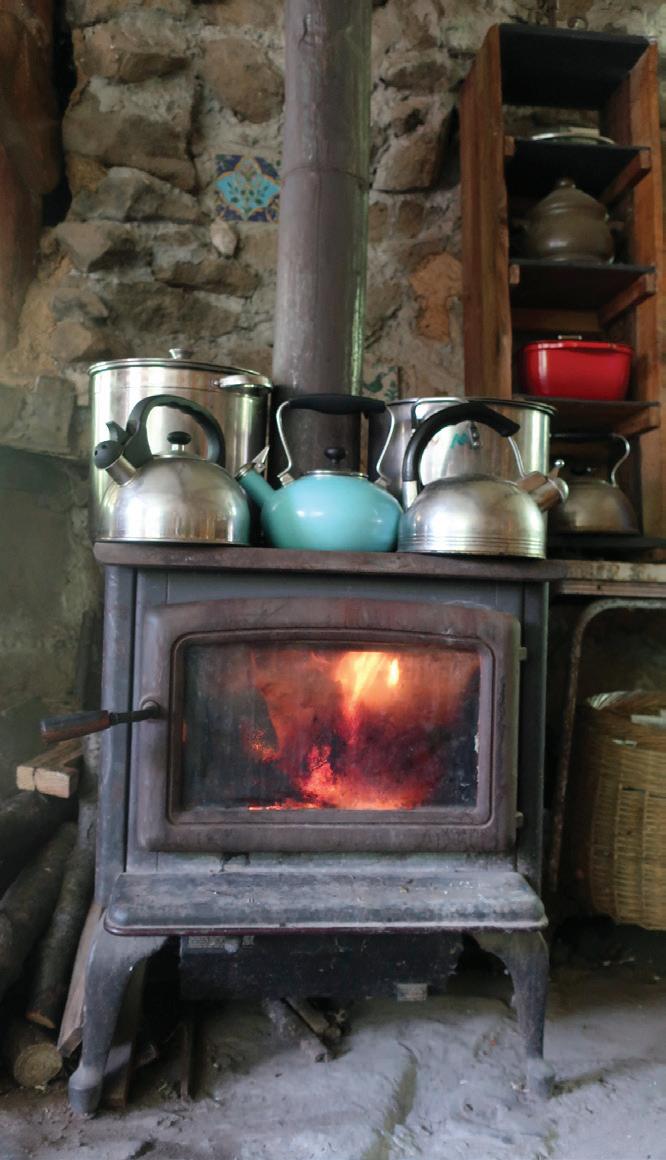
Being in charge of your own consumption is a form of liberation. Rebel into the future!
Mark S. McNutt is an astrologer and metaphysician who’s also a longtime homesteader and land steward at LivingWell Nature Spirit Sanxuary, an off-grid eco-retreat center in the central Oregon Coast Range, where he lives, builds, and gardens with his longtime partner, Mary. They can be reached at AERIOUSNews@Gmail.com and AERIOUSNews@YouTube.com.


You asked, we answered! Last canning season, a reader reached out and expressed frustration that he couldn’t find information on how the canning process affects food’s nutrition. So, we assigned Rebecca to the task! If you have article requests, send them to Letters@MotherEarthNews.com.
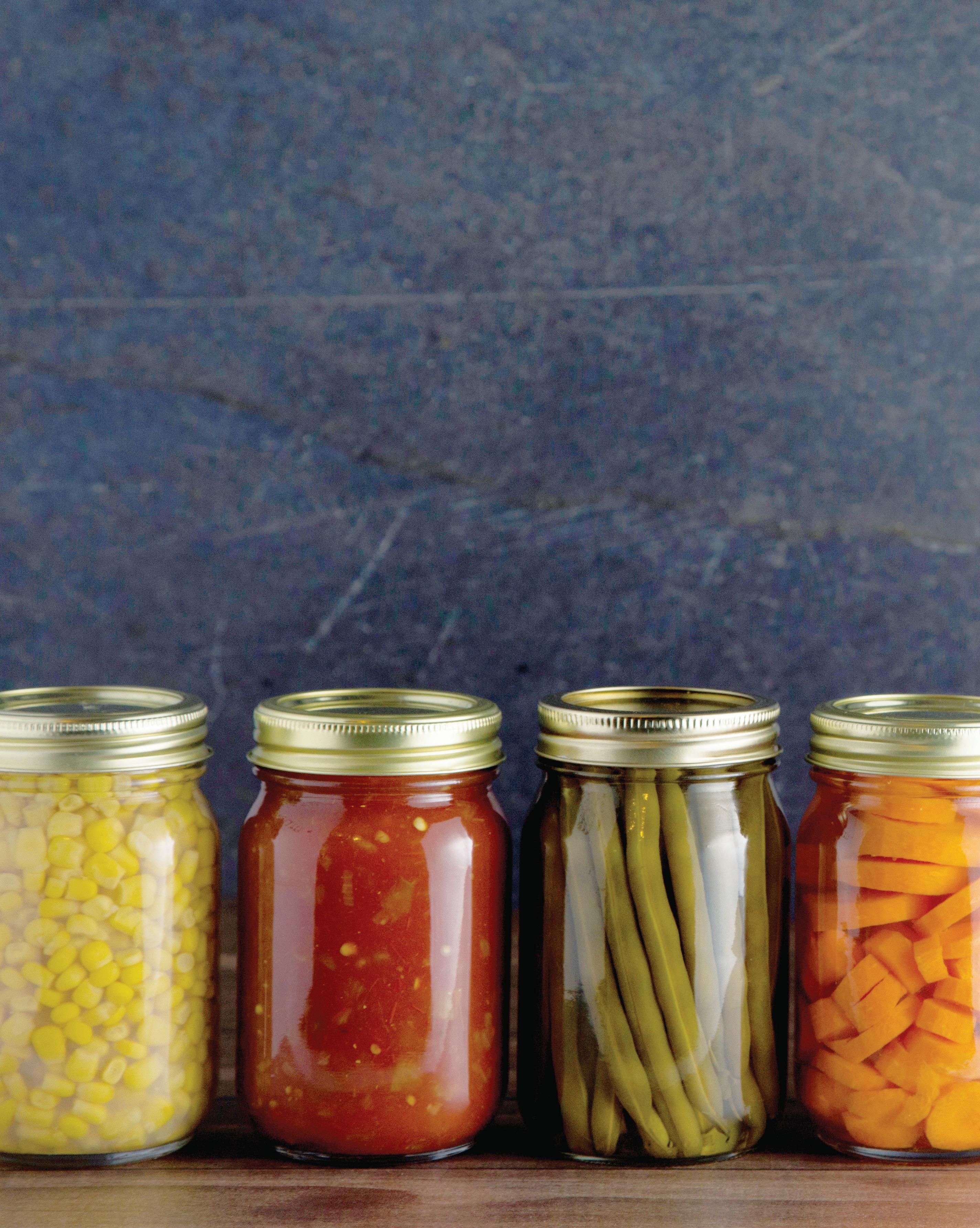 Mother
Mother
People grow gardens for a multitude of reasons. Some do it to connect with nature and unwind. Others garden to save money on produce costs or to reduce their trips to the store. I enjoy walking into the backyard and picking veggies for dinner based on what’s ripe and ready to eat, rather than having to plan meals ahead for an entire week. My husband helps in the garden because fresh, sun-ripened produce just tastes better. Health-conscious people grow gardens to optimize the nutritional quality of the produce they eat by harvesting at peak ripeness.
All these benefits last only a few months of the year unless you preserve what you harvest. But how does putting up produce affect that food’s nutritional value?
First, let’s consider the nutritional quality of fresh, unprocessed food, which possesses both macronutrients and micronutrients. Macronutrients are proteins, carbohydrates, and lipids or fats. These are chemically and structurally determined and incredibly difficult to change. The primary ways they can be altered is through the breaking down of starches or denaturing of proteins in high heat.
These factors will reduce the nutrients delivered by your home-canned food.
Here, I’ll primarily focus on micronutrients minerals, vitamins, and phytochemicals. Minerals are inorganic and typically pure elements, such as calcium, iron, and magnesium. Plants get minerals from the soil in which they’re grown, absorbing them as they take up water. Healthy soil produces nutritious plants.
Vitamins, on the other hand, are organic substances we need but cannot make ourselves. Plants are able to synthesize many vitamins that our bodies can, in turn, use after we eat the plants.
Phytochemicals are another micronutrient, although not as well-researched as vitamins and minerals because of their complexity. Phytochemicals are plant chemicals with potential health benefits to humans. Research is continually being done to identify phytochemicals and their roles. Phytochemicals may serve as antioxidants, enhance immunity, intensify cellular communication, detoxify carcinogens, cause cell death in
tumor cells, and repair damaged DNA. Made by the plants themselves, they typically protect the plant from sun damage, insects, drought, and microorganisms. Phytochemicals are also responsible for
tent. Vitamin E, which is a collection of eight fat-soluble compounds that work the same in the human body, is especially high at peak ripeness. In peppers, researchers found that vitamin E content increased as chlorophyll degraded, allowing the color of the peppers to show.
much of the flavor and color of the produce we eat.

Fully ripe but not overripe produce holds the highest nutritional con-
Luckily, it’s not all bad news when we examine how processing affects nutrition. Some nutrients are made more bioavailable that is, able to be used by the human body when the food is cooked or processed. This is especially true of phytochemicals, because the heat from processing breaks up their cellular matrix, making it easier for our bodies to digest and absorb the nutrients. Some foods that become more bioavailable after cooking include spinach, carrots, and sweet potatoes. Besides some phytochemicals, iron, calcium, and potassium are made more easily digestible when the vegetable containing them is cooked.

On the other hand, water-soluble vitamins are quite sensitive and can degrade easily. High heat through cooking or processing tends to damage these vitamins, lowering the amount present in the food. These include vitamin C and the B vitamins, such as thiamin, riboflavin, B6, and folate. (Vitamin B12 is synthesized by certain bacteria and therefore doesn’t occur in most plant products.) High heat can lower a food’s vitamin C content by 50% or more. Some studies suggest that canning can reduce vitamin C by up to 90% in some vegetables. Studies also suggest heat can destroy at least 10% to 30%, and up to 70%, of the B vitamins in produce. But more is typically leached into the aqueous solution in which the food is stored (see “Leached Away” at right). Regarding root vegetables, canning heat causes the loss of approximately 10% to 20% of available phosphorous, thiamin, beta-carotene, beta-cryptoxanthin, lycopene, and lucein and zeaxanthin. Folate and vitamin C were reduced 20% to 25%. The losses of vitamin C, thiamin, and folate in other vegetables fell in the range of 10% to 15%.
Tomatoes experience much lower nutrient loss due to heat, partly because they’re usually processed in a hot water bath (which their high acidity allows)
rather than pressure canned. They lose mostly folate (70%) and choline (10%). Raw tomatoes are considered a good source of vitamin C, potassium, folate, and vitamin K.
Some nutrients that are more stable in heat are niacin, pantothenic acid, and biotin. Minerals such as calcium, magnesium, iron, sodium, zinc, and copper aren’t affected by heat, so their content in food doesn’t change with heat processing. Any mineral loss in canned food is likely due to minor leaching by the water in which the food is processed.
Because low-acid foods must reach temperatures of 240 to 250 degrees Fahrenheit during pressure canning to kill Clostridium botulinum spores, vitamin loss is unavoidable because of high heat.

Water-soluble vitamins tend to dissolve into the canning medium; that is, the liquid in which the produce is canned and stored.

Root vegetables are typically high in potassium, folate, manganese, vitamin C, beta-carotene, and many B vitamins. In addition to the nutrients lost through the heat of processing, root vegetables lose an additional 10% to 15% of vitamin C, thiamine, and folate, as well as a few minerals, into the canning medium. Other vegetables lose an additional 10% of vitamin C, thiamin, and niacin. Folate is decreased by an additional 20%. Betacarotene, lycopene, lutein and zeaxanthin, and riboflavin are only marginally reduced by the canning medium.
Legumes are considered a good source of B vitamins, iron, copper, magnesium, manganese, zinc, and phosphorous. Legumes are unique because their nutrition is different from other vegetables. They leach 10% to 20% of their inherent calcium, zinc, phosphorous, sodium, beta-carotene, beta-cryptoxanthin, lycopene, and lutein and zeaxanthin into the canning medium. They lose 25% to 35% of iron, magnesium, potassium, riboflavin, and vitamin C, and significant amounts of copper (45%), B6 (50%), thiamin (60%), and folate (70%).
Vitamin loss is unavoidable in pressure-canned food because of the high heat required to kill botulism spores.Fruits are quite varied, but they generally lose 10% to 20% of potassium, copper, thiamin, riboflavin, niacin, and vitamin B6. They lose 25% of beta-carotene, betacryptoxanthin, lycopene, and lutein and zeaxanthin. Folate and vitamin C decrease by about 50%.
Vitamin C degrades drastically over time, as do many phytochemicals. Anthocyanin, an antioxidant that often gives berries and other produce their deep blue, purple, or red coloring, was found to be particularly susceptible to time as well as heat. Phytochemicals change over time. Some degrade after produce is harvested, while some increase for several months during storage of the processed food. Hundreds of phytochemicals have been identified, with more being discovered and researched each year. The study of phytochemicals is still a relatively new subject in food nutrition and not well-understood. Beta-carotene, beta-cryptoxanthin, lyco-
What can you do with your garden harvest? Consider canning and pickling!


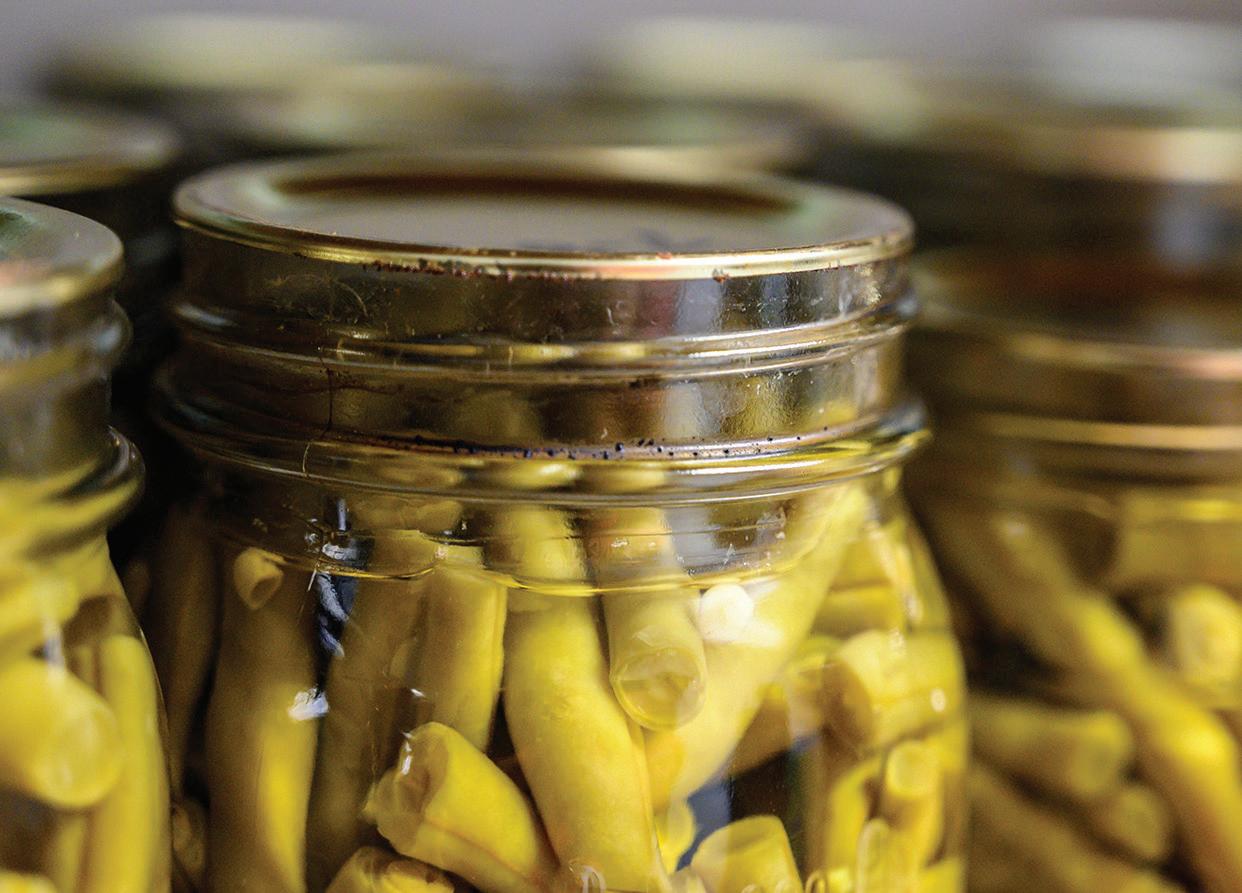
In “Mother earth News and Friends: Gardening for Food Preservation,” we discuss what to plant in your garden while considering food preservation. Our guests are Ira Wallace, manager of Southern Exposure Seed Exchange, and Lisa Mason Ziegler, owner of The Gardener’s Workshop.
Listen to this podcast episode at www. MotherEarthNews.com/Podcast/GardenFood-Preservation
pene, lutein and zeaxanthin, and other carotenoids tend to be more bioavailable after cooking or processing. Isoflavones are fairly heat-resistant, as are the stilbenes found in some berries, such as blueberry. Many fruits, vegetables, and grains have some isoflavones, and soy and legumes are particularly rich in these compounds. Another heat-resistant phytochemical is the lignans found in nuts and legumes, and some flavonoids in apples, berries, and cherries actually increase with heat.
Subcategories of phytochemicals can contain both heat-resistant and heatsensitive species. These include the proanthocyanidins found in fruits and some vegetables and the isothiocyanates in cruciferous vegetables. The sterols found in some plant oils aren’t heat-resistant and tend to oxidize in high temperatures.
The temperature at which you store your home-canned food matters. In one study, certain nutrients in black cur-
rant jam were monitored after a storage time of 13 months. The jam stored at 46 degrees retained vitamin C and anthocyanins better than jam stored at room temperature. Jams stored at 99 degrees didn’t retain any vitamin C at all.

Light, heat, oxygen, and moisture content are the factors that most affect how nutrients hold up over time in storage. Little oxygen remains in jars following the canning process, so this is less of a factor in nutrient oxidation. Moisture content is also set and unchangeable. Focus on the factors you can control: harvest and storage. Harvest produce at peak ripeness and process it immediately. Store home-canned foods out of direct light and in consistently cool temperatures.
Unless all the food you consume has just been harvested, you’ll be losing its nutrients. Allowing it to sit on the counter for several days without processing will significantly reduce produce’s inherent nutrients. While this may feel discouraging, you’re probably still getting plenty of nutrients by eating any fruits and vegetables, whether processed or fresh. Definitely don’t skimp on safe canning practices in an attempt to preserve vitamins. Losing a little vitamin C is much better than suffering botulism poisoning!
Rebecca Sanderson grew up in a small town with a backyard full of animals. Her background in health and nutrition gives her a unique perspective on animal husbandry and her own gardening and food preservation.
SEPTEMBER 16-17
WASHINGTON COUNTY FAIR PARK & CONFERENCE CENTER Wisconsin

WITH SPECIAL GUEST
Dr. Jan Pol
Start living a more independent, self-sufficient lifestyle and stop overpaying for basic necessities – it’s easier than you think, and we’ll show you how!



Learn a Variety of Money-Saving Skill Sets from Experienced Pros




You’ll Find Gardening Tools, Energy-Savers, Natural Body Care, Handmade Goods, You Name It!










Free Admission for Kids 17 and Under! In-Person Demos, Food Trucks, PopUp Marketplace, Community, and ...
... LIVESTOCK!
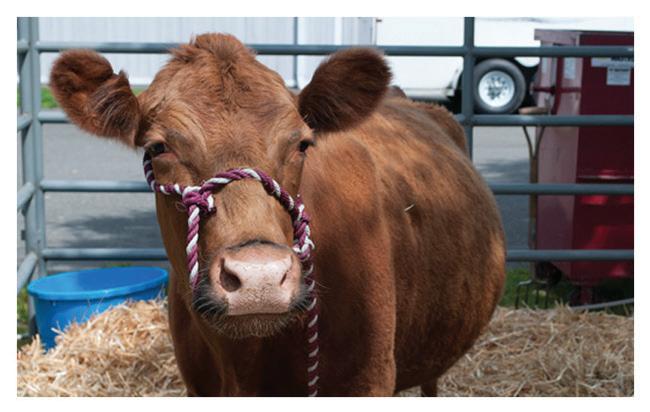
Goats, Chickens, Cattle, & More!
It is our pleasure to welcome the star of National Geographic WILD’s “The Incredible Dr. Pol,” to the upcoming Mother earth News Fair in Wisconsin!

REGISTER HERE for tickets and to reserve your spot in any of the Hands-On Workshops (space is limited). You’ll also find the latest additional information on all upcoming events. You may also call 800-234-3368 for inquiries. All programming, dates, and locations subject to change.

From raising poultry to maximizing your organic garden’s yield, kickstart your journey to greater food independence alongside master gardeners and experts in animal husbandry who can help you avoid making expensive mistakes.


You don’t have to spend a fortune to put in place methods that can save you money and keep you safe, comfortable, and ready for anything nature has in store. Here’s a tip if you plan to attend: have some questions ready for a special Off-Grid Energy Q&A.



From grant-writing to networking, marketing, and beyond, learn what it takes to be successful and how to get started. Will 2023 be the year you unleash your inner entrepreneur and reap the rewards?


I’ve spent most of my life making sure animals are healthy, happy, and productive. Doesn’t matter if you’re running a big farm with all sorts of livestock, have a little hobby farm, or you just have a couple of pets, you can learn ways to ensure their optimal nutrition and care for their overall well-being. No matter the size of your operation or budget, there are many tricks and tips that you can use to help your animals thrive.
So, I’m eager for this upcoming Mother Earth News Fair in West Bend, Wisconsin. I’ll be sharing all kinds of practical wisdom and real-life know-how from my 50+ years in veterinary medicine. If you’ve got a mind to be the best animal caretaker you can be, at home or as a business, well, I’m here to help you hit that bullseye.









I can’t wait to see ya there!

of berries in late summer by clipping off wild clusters.
The easiest way to harvest the berries is freezing clipped clusters in large plastic bags. Then, gently hit the clusters over a large bowl or bucket, knocking off the berries. Alternately, you can gently comb them off with your fingers, but be prepared for purple stains!
By Jenny UnderwoodElderberry. Some praise it; others caution against using it. But elderberry is full of antioxidants, minerals, and vitamins, and is a tasty addition to your apothecary and pantry.
Elderberry has been used by Native Americans for thousands of years. The

berries are unsafe to consume raw but edible once cooked. You can freeze or dry elderberries or turn them into jelly, juice, or syrup.
You can gather elderberries from the wild or grow your own. In our area, they’re so prolific that we gather gallons
Clean as much debris as possible from your berries, removing any stems, leaves, or green berries. Your berries can now be processed, dried, or frozen. To freeze, simply place cleaned berries into freezer bags or containers. Label and freeze for up to a year.
To dry, place on parchment paper and in a dehydrator or oven at 135 degrees Fahrenheit until thoroughly dried. Pinch to make certain they’re hard and no moisture remains. Store in bags or
Elderberries are a healthy, flavorful addition to both your pantry and medicine cabinet.Elderberries have been used throughout history to fight illness. ADOBESTOCK; ELADSTUDIO
glass jars. Check intermittently for any moisture. If you find moisture, discard the berries due to bacterial risk.
You can use a few methods to prepare elderberries for jelly, syrup, or juice. The easiest method is with a steam juicer or electric pressure cooker.
To use an electric pressure cooker, place 1 quart berries in 1 cup water and pressure cook for 10 minutes. Allow to decompress naturally. Then, purée. Strain the purée through cheesecloth or a mesh bag, and strain a second time if you still see tiny seeds.
You can also gently boil the berries (1 quart berries to 1 cup water) on the stovetop. Simmer until soft. Top with the lid and allow to sit for 1 hour. Purée and strain as needed.
To use a steam juicer, place your berries in the chamber, put water in the bottom, and process for 30 minutes.
Then, can the juice using the water bath method. Yield: 4 pints.
• 8 cups juice
• Sugar or honey (optional)
Elderberry jelly is delightfully sweet-tart and allows you to eat your medicine. Yield: 81⁄2 cups or 4 pints.
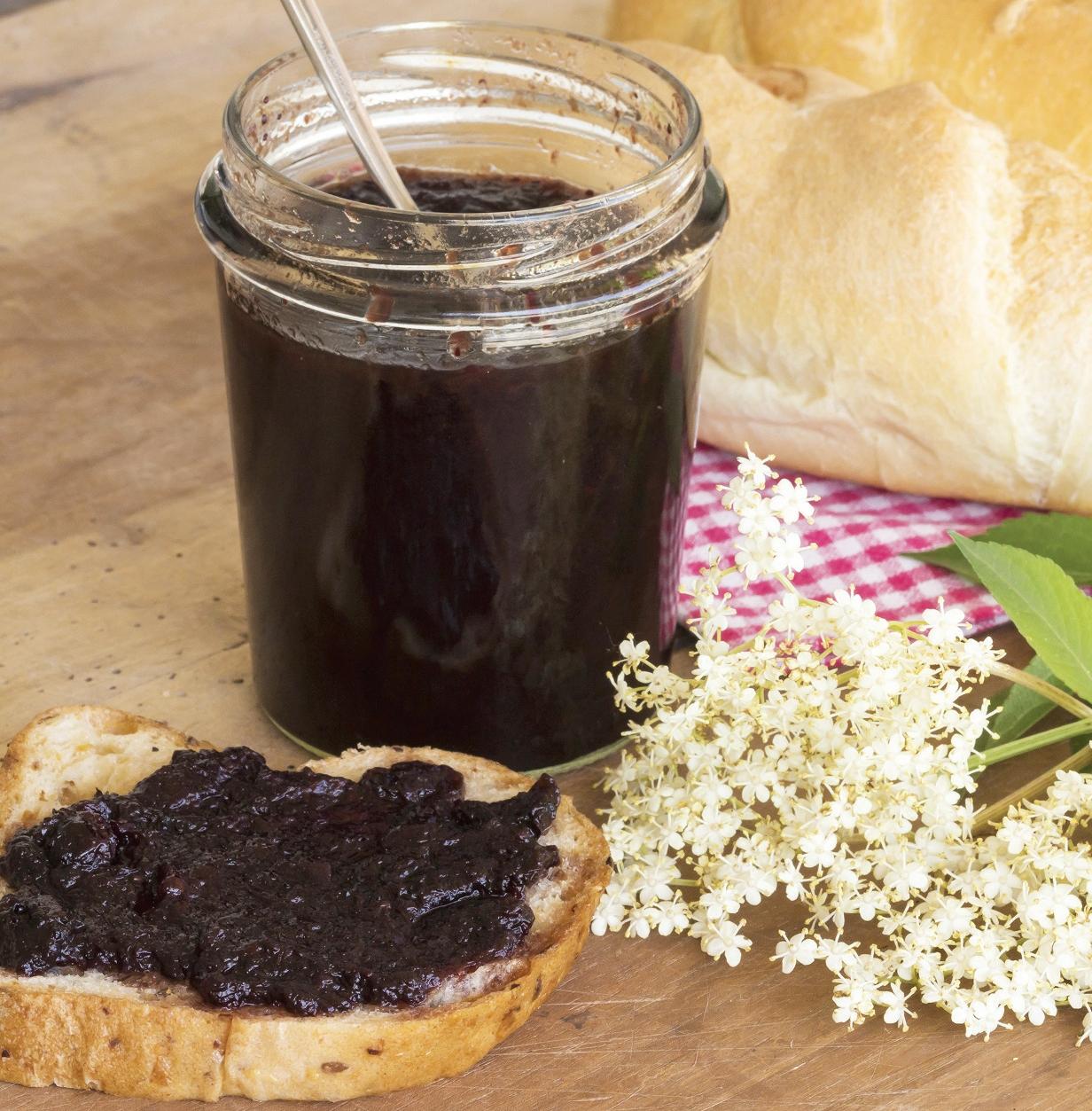
1 Measure your sugar in a bowl, removing 1⁄4 cup to mix in another bowl with the powdered pectin.
• 4 tablespoons lemon juice or 1 teaspoon citric acid
1 Elderberry juice is very tart! Bring your juice to a boil, adding sugar or honey to taste, if desired.
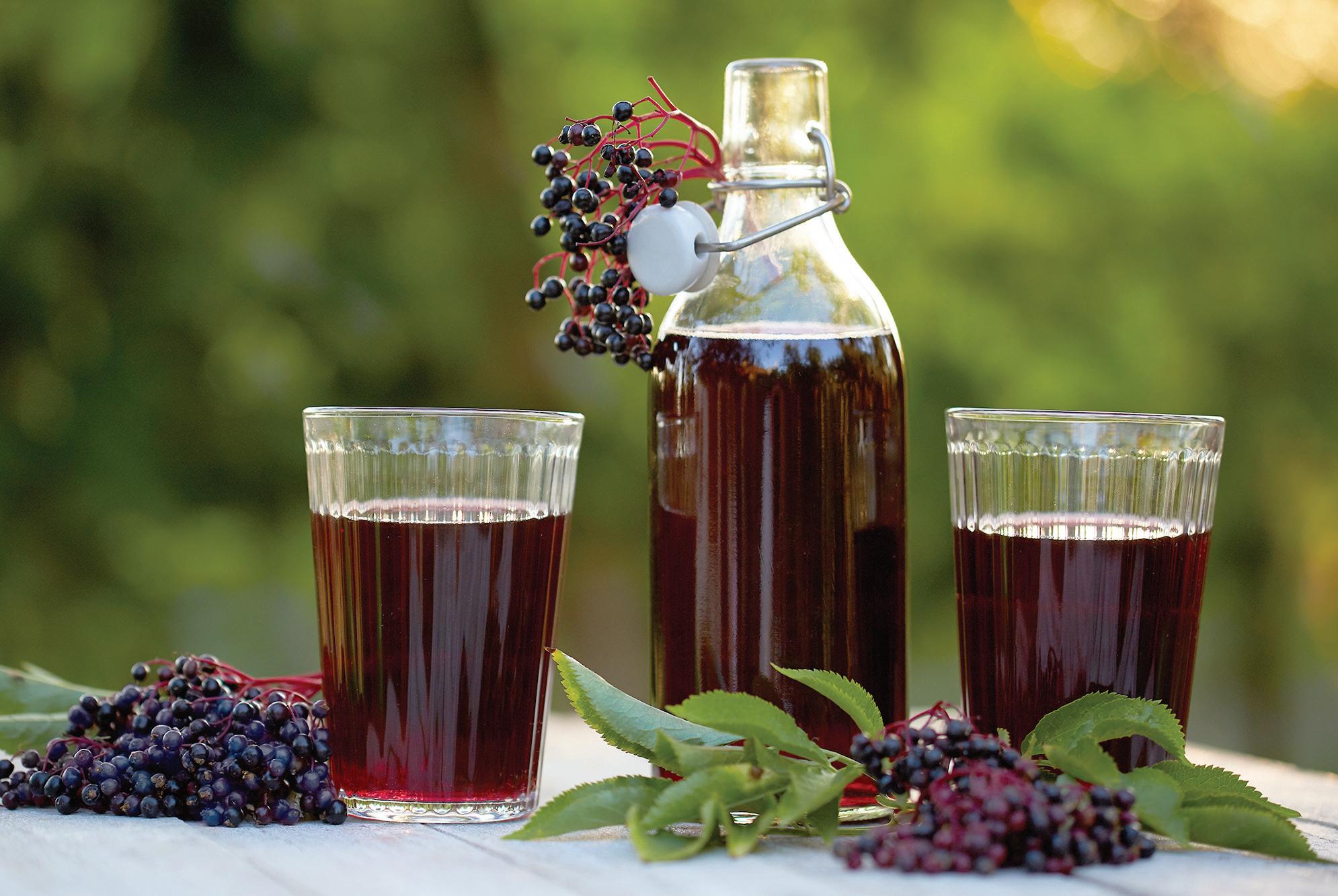
2 Prepare jars by washing well, and simmering the lids and rings.
3 Prepare the water bath canner by placing a rack in the bottom and pour-
Ingredients
• 31⁄2 cups sugar
• 1 package pectin
• 51⁄2 cups elderberry juice
• 2 tablespoons lemon juice
• 1 teaspoon cinnamon (optional)
2 Combine juices in a pot, and add sugar-pectin mixture.
3 Bring to a boil and add remaining sugar, and cinnamon, if desired.
4 Return to a boil and boil hard for 1 minute.
5 Remove from heat. Allow to set for a few minutes. A solid skim will form on top, and you can easily remove this with a spoon. This is delicious in muffins or on a biscuit!
6 Pour into hot, clean jars to 1⁄4 inch headspace and process in a boiling water bath canner for 12 minutes (or 5 minutes if jars are sterilized).
7 Remove and allow to set for 5 minutes. Remove jars and allow to cool on a towel in a warm, draft-free area for 16 to 24 hours.
8 Check seals, clean and label jars, and remove rings.
ing in several quarts of hot water. Put 2 tablespoons white vinegar in the canner to keep your jars clean.
4 Put 1 tablespoon lemon juice or ¼ teaspoon citric acid in each jar.
5 Fill each jar with hot juice to ¼ inch headspace.
6 Clean rims with vinegar-moistened cloth, place hot lids and rings, and finger-tighten.
7 Place jars in canner and add water until jars are covered by 1 to 2 inches.
8 Bring to a boil for 10 minutes.
9 Turn off stove and allow to sit for 5 minutes. Remove jars and place on a towel for 16 to 24 hours.
10 Label and store.
To freeze the juice, place in freezer bags or containers, then label and freeze.
You can also make syrup by using 1 cup juice to 1 cup maple syrup or honey. Simmer gently for about 1 hour (don’t boil) until mixture reduces by half and is thick. Then refrigerate, freeze, or can by following the directions for juice.
Growing elderberries is easy. First, dig up wild varieties or buy cultivars from reputable nurseries. The wild cultivars will probably be more resilient, as they’re already adapted to your specific climate,
while the tame varieties will likely produce larger fruit. A few tame cultivars include ‘Johns,’ ‘Nova,’ and ‘Ranch.’ These have a wide range of compatible Zones, but always check your Zone before purchasing plants.
Elderberries can grow almost anywhere, from ditches to hills. They’re frosthardy and can thrive in a wide range of temperatures. They also spread easily, so if you don’t want that, you’ll need to mulch around them or mow a few times a year. For proper pollination, plant multiple cultivars. The cultivars bear after 2
Resource River Hills Harvest Elderberry plants and products www.RiverHillsHarvest.com Info@RiverHillsHarvest.com
579-999-3034
to 3 years, and berries can be harvested in August and September.
I encourage you to get out this year and harvest elderberries from the wild or grow your own.
Please use caution to avoid cyanide toxicity. Only the flowers and ripe, cooked berries are edible; no other part of the elderberry plant is safe for human consumption. Boil or pressure cook berries for at least five minutes to reduce cyanide compounds. Mother
Jenny Underwood is a home-schooling mama to four lively blessings. She makes her home in the rural foothills of the Ozark Mountains with her husband of 20 years. You can find her reading a good book, drinking coffee, and gardening on their little fifth-generation homestead. She blogs at www.InconvenientFamily.com.
Elderflowers are used medicinally in syrups, teas, and tinctures. The flowers are ready to be picked when the head is in full or mostly full bloom. You can then dry the flowers by spreading them on parchment paper and drying them in a dehydrator or oven at 95 to 115 degrees Fahrenheit until crisp. Store in glass jars. Turn your dried elderberry flowers into tea by steeping 2 teaspoons flowers in a cup of hot water for 10 minutes.
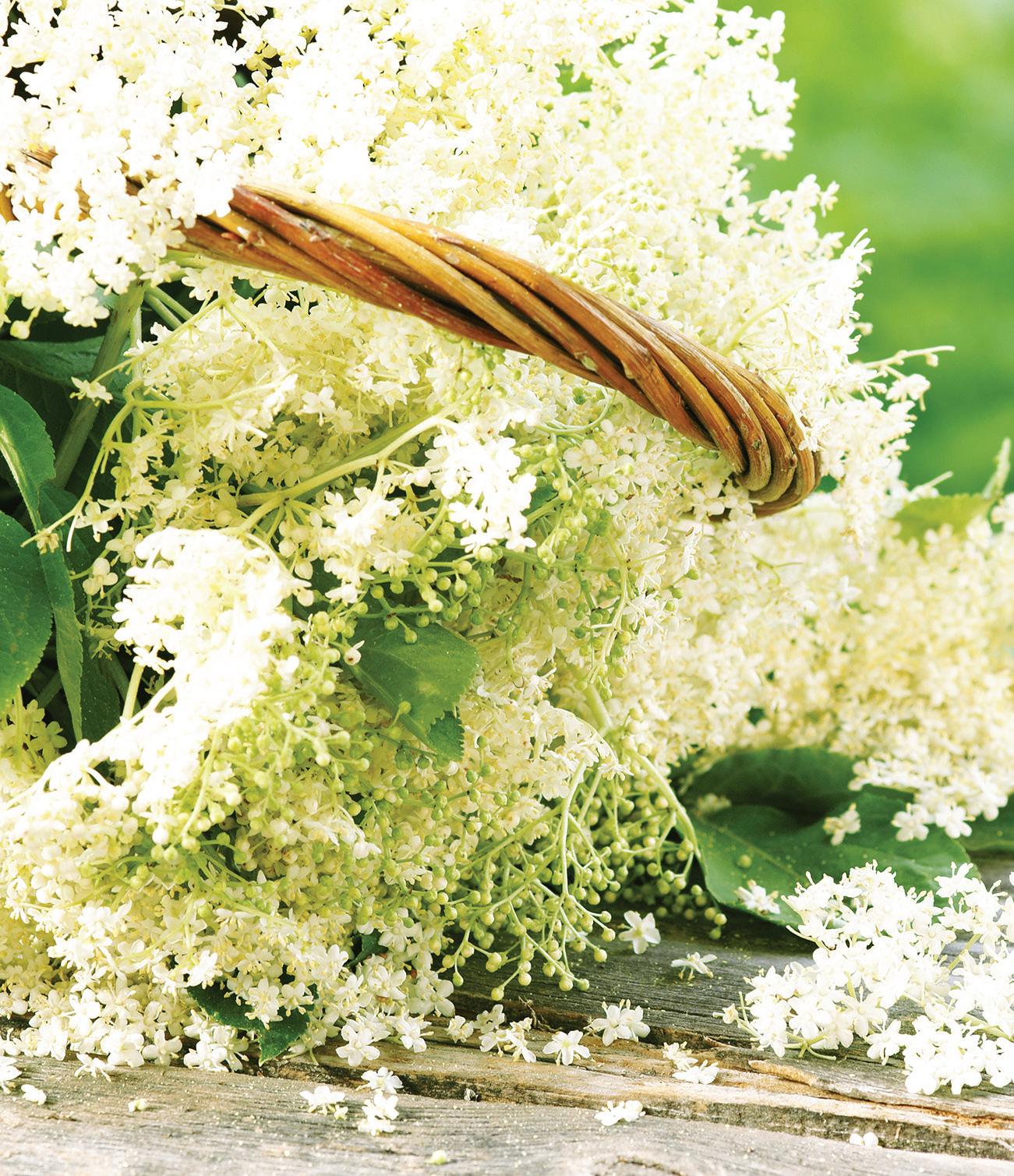
1 Prepare a strong tea (called an “infusion”) 4 teaspoons dried flowers to 1 cup water.
2 Add the infusion to 1 cup honey or maple syrup.
3 Simmer gently for 1 hour, or until liquid is reduced by half.
4 Refrigerate, freeze, or can following instructions for canning elderberry juice.
1 Fill a quart jar half to 2⁄3 full of the flowers (dried or fresh), and add a strong alcohol, such as vodka, to cover them.
2 Place a piece of wax paper on top, then the lid and ring.
3 Shake well.
4 Place in a cool, dark area for 4 to 6 weeks, shaking daily. If the alcohol level drops below the herbs, top it off. Select an alcohol that’s at least 40% alcohol or 90-proof, such as vodka, rum, or brandy.
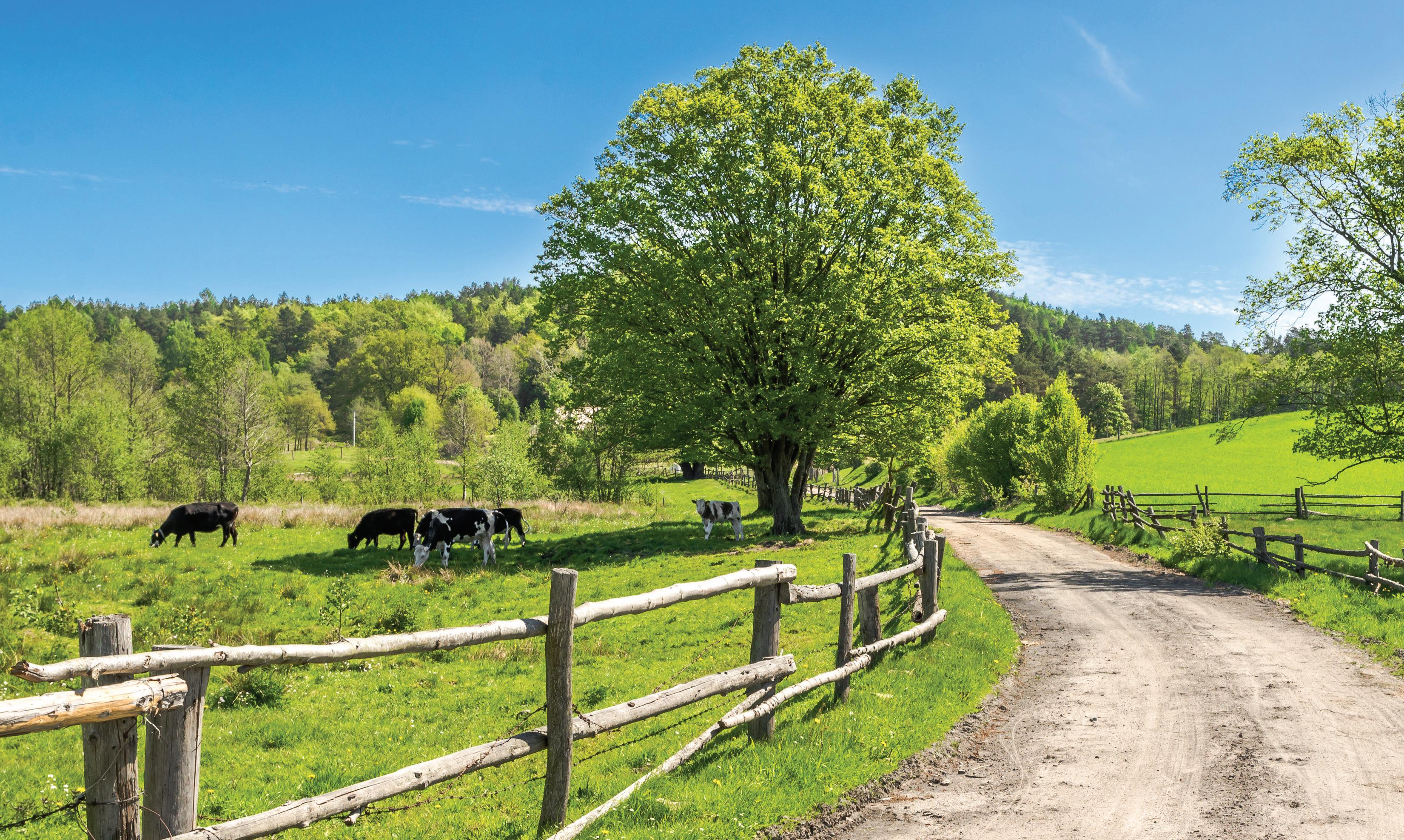




With tick-borne illnesses on the rise, you may be looking for ways to prevent your furry friends from picking up these unwelcome parasites and bringing them into your home. Not only can ticks spread disease, but they can also cause skin problems and even anemia in cats and dogs.
I spent most of my time as a veterinary technician advising clients on how to prevent and treat flea and tick problems. No wonder flea and tick products make up a multibillion-dollar industry in the U.S.
Even when something is advertised as “natural,” always check the label for ingredients some products do include “herbal” ingredients, such as sage, rosemary, lemongrass, or geranium, but when they’re combined with loads of other chemical ingredients, they’re not a safe (or particularly effective) solution.
Thankfully, several herbal solutions can repel fleas and ticks, and they’re easy to make and use at home.
Controlling fleas and ticks requires several different strategies for taking care of both your pets and your home. Cleaning your house and grooming your pets are the first steps to an effective pestcontrol plan.
Start with pet bedding by unzipping any removable covers and washing them in hot, soapy water. Put any other bedding in the same load if your
pet spends a lot of time on your bed. Adding a few drops of lemongrass, rosemary, geranium, or peppermint essential oils to the load will help repel fleas and ticks.
Vacuum any carpets or rugs regularly (at least once a week), and throw away the vacuum bags in an outdoor bin. Clean the vacuum canisters with hot, soapy water and allow them to dry completely. Alternatively, clean them with vodka or rubbing alcohol and allow them to dry completely before putting them back into the vacuum. Pay extra attention to places where your pets sleep and under furniture in the rooms where they sleep.
In rooms without carpeting, pick up rugs and mop the floors regularly. Use hot, soapy water with just a few drops of lavender, rosemary, peppermint, or lemongrass essential oil to help repel pests. Don’t use more than 3 drops in 5 gallons of water, and never add essential oils to commercial cleaning products.

Brush your cats and brush and wash your dogs on a regular basis if they spend time outdoors. (Unless they’re having trouble grooming themselves, cats rarely need a bath.) The best way to comb your cat or dog is with a flea comb these are available in pet supply stores, online, or from your
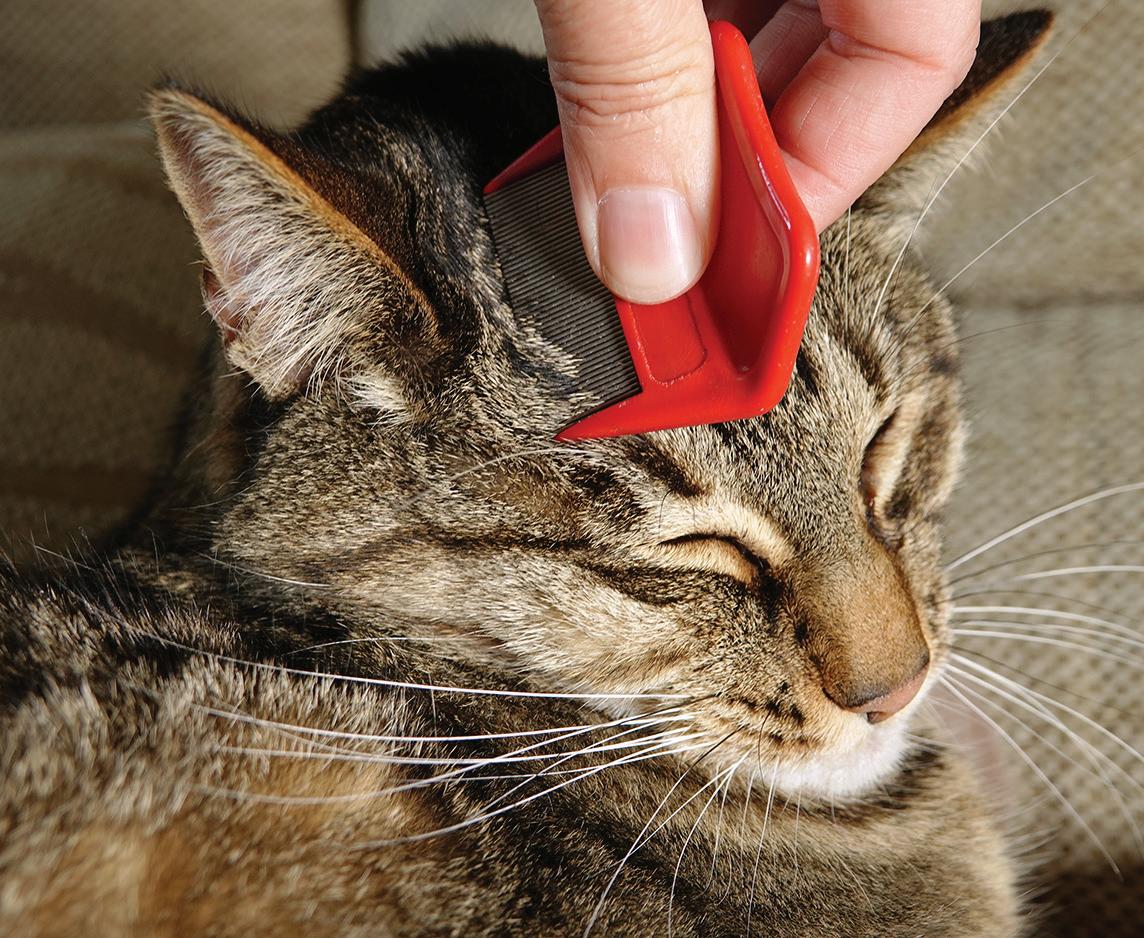

This is a recipe I keep coming back to, year after year. We’ve affectionately nicknamed it “Tucker Seasoning” after our dog Tucker, and because my husband got the bright idea to package the finished product in a recycled spice container with a shaker lid. This recipe, which is for use on dogs, makes enough powder for about three applications to our small 25-pound dog.
In a small nonreactive bowl (glass is best), mix together ingredients. For application, put into a container with a shaker lid. For best results when applying, take your dog outside, and avoid getting the powder in your dog’s eyes, nose, or mouth. We give our dog a good brushing before applying the powder. Rub the powder down the fur into the skin. For young dogs, dogs under 5 pounds, or elderly dogs, apply small amounts at a time (no more than 1 tablespoon) and gently rub or massage it into their fur to make sure they don’t inhale it.
veterinarian or groomer. Make sure you get the comb through your pet’s fur as far down to the skin as possible.
Every few strokes, remove any buildup from the comb using a white or light-colored tissue or paper towel. If you see any tiny black specks, put a few drops of water on the paper towel. If it turns red, that’s flea poop. You may even see a few actual fleas hanging out on your pet. Take all the buildup from the paper towel and put it into a glass jar full of hot, soapy water (any soap will do, but I prefer to use dishwashing liquid), put the lid on the jar, give the jar a good shake, and pour the water down the toilet.
Clean the comb by washing it in hot, soapy water or dousing it in vodka or rubbing alcohol, and allow it to dry
completely before using it again, especially if you have more than one pet.
You can also wash your dogs with a homemade shampoo once or twice a month. These shampoos are great if your dog’s skin is irritated from bites and can give your pet some relief without artificial chemicals.
To a plastic squeeze bottle, add:
• 7⁄8 cup purified water
• 1 tablespoon unscented liquid castile soap or baby soap
• 1⁄2 teaspoon vegetable glycerin
• 1⁄ 2 teaspoon jojoba oil (for diluting essential oils)
• 3 drops rosemary essential oil and 3 drops eucalyptus essential oil
If you prefer to spritz your pet (and if your pet prefers to be spritzed), you can make an effective tick repellent using fresh or dried basil. Just bring 4 cups water to a boil and add 4 tablespoons dried basil, or 8 heaping teaspoons fresh chopped basil. Cover and allow it to steep for at least 2 hours. Once the mixture has cooled, strain and pour into two 16-ounce spray bottles. It’ll stay fresh in the fridge for about a week.
To prevent ticks from latching on and coming home with you, apply this spray every time you take your pet outside. Reapply several times if you’re outdoors with your pet all day. You can even spray down your own socks and shoes if you’re hiking on the trail. Just pack a little spray bottle in your gear, and you’ll be good to go!
• 11⁄4 cups food-grade diatomaceous earth

• 1⁄4 cup lemongrass powder
• 1⁄4 cup neem leaf powder
• 10 drops essential oil of your choice: lemongrass, geranium, rosemary, or lavender (optional)
• 1⁄4 cup dried lavender leaves or flowers, whole or powder (optional)
Put the cap back on the squeeze bottle and shake well until all ingredients are combined, then let the mixture rest for at least one hour before using. Label the bottle with the ingredients and the date. Stored away from light and heat, these shampoos will last up to one year.
When bathing small dogs (under 20 pounds), use only 1 tablespoon of this homemade shampoo. For larger dogs with thicker fur, use about 1⁄4 cup of shampoo each time you bathe them.
Completely and thoroughly rinse the shampoo off to avoid them accidentally ingesting any of the essential oil used. Essential oils must be used properly, preferably under the guidance of a holistic veterinarian. Don’t use essential oils on puppies less than 1 year old, and avoid using them on cats entirely. Young puppies and cats are more likely to experience toxicity and possibly poisoning if they ingest essential oils, even in low dosages. It’s never safe to use undiluted essential oils directly on your cat, your dog, or yourself.
Jennifer VanBenschoten lives in New York, where she raises chickens, keeps bees, and grows her own food. She enjoys cooking, writing, teaching yoga, and creating handmade beaded jewelry.
 By Robert Turner
By Robert Turner
The sticker shock you’ve likely experienced at the gas pump in the months since February 2022, when Russia invaded Ukraine, might be a potent reminder of our economy’s fragile dependence on fossil fuels. Aggression in one part of the world can catalyze an economic chain reaction that pinches oil supplies and raises prices for a wide range of petroleum-based products, including gasoline, heating oil, and synthetic fertilizers. The impact ultimately pushes up the cost of food dependent on these inputs for its production, transport, and storage for all of us.
Events of the past year gave me a wakeup call for considering where my energy comes from, and brought re -
newables, particularly agricultural biofuels, to front of mind.
What may not be as clear in this supply-chain upheaval is the link between Russian oil and gas and tropical rainforests on the other side of the planet. As Europe scrambled to secure alternative fuel sources that could supplant some of its demand for Russia-supplied energy, the continent’s rush for biofuels contributed to the deforestation of rainforests in Indonesia, Malaysia, and Brazil. Farmers in these and other forest-rich countries quickly cleared trees, often illegally and on protected lands, to plant more soy and palm oil used as biofuel feedstocks. Among the first to feel the consequences were displaced Indigenous groups and threatened species, including the Bornean orangutan.
Despite this bleak scenario, the recent energy crisis could one day be remembered as a historic turning point, when the world adopted a cleaner and more secure energy industry and a more sustainable and regenerative agriculture system.
As a science writer focused on food and agriculture, I’ve come to view biofuels as a technological solution central to achieving this societal pivot. And I believe the rising demand for biofuels is fodder for a food-versus-fuel debate that has already been raging for years.
To technology skeptics, I assure you that I, too, am wary of the “unintended consequences” that can spring from technological advances. Good examples are found in two of the greatest scientific achievements in the history of agriculture: the Haber-Bosch pro -
cess for producing synthetic fertilizers invented in 1913, and Norman Borlaug’s development of new wheat varieties in the 1960s, both winners of a Nobel Prize. Each solution is thought to have saved billions of people from starvation while fueling unprecedented energy consumption, biodiversity loss, eutrophication, and social inequality.
People are lined up on both sides of the foodversus-fuel debate. The main problem for biofuels has always centered on their competition for a finite amount of arable land, with some folks strongly opposed to any land use that diverts from food production in a world with a growing population. Today, about 2.5% or 3% of farmland around the world is used to grow biofuel feedstocks, the vast majority concentrated in only two countries: the United States (using corn) and Brazil (using sugarcane). What worries some is that the land dedicated to biofuels is expected to more than double over the next two decades — and in the U.S., this could mean a lot more corn.
As I wrote in the June/July 2023 issue of M E N, electric vehicles (EVs) could wreak havoc on the Midwestern farm economy. Why? Because 45% of the U.S. corn crop goes into our gas tanks in the form of ethanol — and EVs don’t have gas tanks. By federal mandate, gasoline must contain 10% ethanol, made from corn. Car manufacturers are pledging to sell only electric vehicles within 10 or so years, and the resulting drop in the demand for ethanol could hamper the Midwestern corn belt, a massive region of the United States that employs 300,000 farmers producing 350 million tons of corn every year.
My question then was, should we continue to prop up the corn industry with taxpayer subsidies as it begins to fail? And my hope was that farmers in the Midwest could begin to grow more diverse food crops (not only corn and soybeans) to feed Chicago, Minneapolis, St. Louis, and beyond, improving food sovereignty and food security throughout the region.
Biofuel’s detractors are also skeptical of labeling it as clean energy, arguing that biofuel production generates plenty of carbon emissions. Let’s take a moment to clarify confusing terms: “Biofuel” is something of a catch-all term for any fuel produced from biomass. “Biodiesel” is a blend of plantbased fuel with regular fossil diesel, and “renewable diesel” is not blended
with any fossil fuels (see “Bioenergy Lexicon,” below). Whatever the mix, current feedstocks — corn for ethanol and soybeans for biodiesel — are grown using chemically intensive farming practices that include large amounts of synthetic fertilizers made from fossil fuels (the HaberBosch process). Those fertilizers — which farmers are over-applying, sometimes using twice as much as is needed — break down in the soil to release nitrogen oxide, another greenhouse gas that is 300 times more potent than carbon dioxide. We’re essentially burning fossil fuels to get away from burning fossil fuels.
Given all this, I can understand fears that biofuels take the focus away from solar and wind as the perceived ultimate renewable resources.
Supporters, on the other hand, see biofuels as a core climate solution, further reducing our dependence on fossil fuels while keeping U.S. farmers in business.
B5 and B20. Biodiesel blends denoting the percentage of biomass-derived fuel in the mix; B5 includes up to 5% biodiesel, and B20 includes between 6% and 20% biodiesel. Bioenergy. Any energy derived from biomass, which includes wood, agricultural residues, algae, and any other organic matter, often burned to produce heat.

Biodiesel. A biofuel specifically formulated for use in transportation, either as a replacement to diesel or for use in a blend. Biofuel. Biomass that’s been converted into a fuel (either liquid or gas), including methane, ethanol, methanol, and more. Ethanol. A liquid fuel often produced by fermenting corn sugars. Renewable diesel. A diesel substitute made entirely from biomass and not blended with fossil fuels.
Transportation as a sector is a huge energy user. More than one-quarter of total U.S. energy consumption in 2021 went to transporting people and goods from one place to another, accounting for 27% of greenhouse gas emissions, making transportation the largest emitter, ahead of electricity and industry. Electric cars will certainly reduce our dependence on fossil fuels, as will increasing solar power capacity, which is on track to roughly triple globally over the next five years. Battery technology, crucial for storing renewable energy, is also advancing quickly. Even a futuristic vision of nuclear fusion leaped forward in 2022.
decompose and deplete dissolved oxygen, ethanol acreage without changing hypoxic zone more difficult.30 predicted to rise from 2.5% today to biofuel crops vary widely due to regional
Percentage of Cropland and Irrigation Water Required for Biofuels, 2005 vs 2030
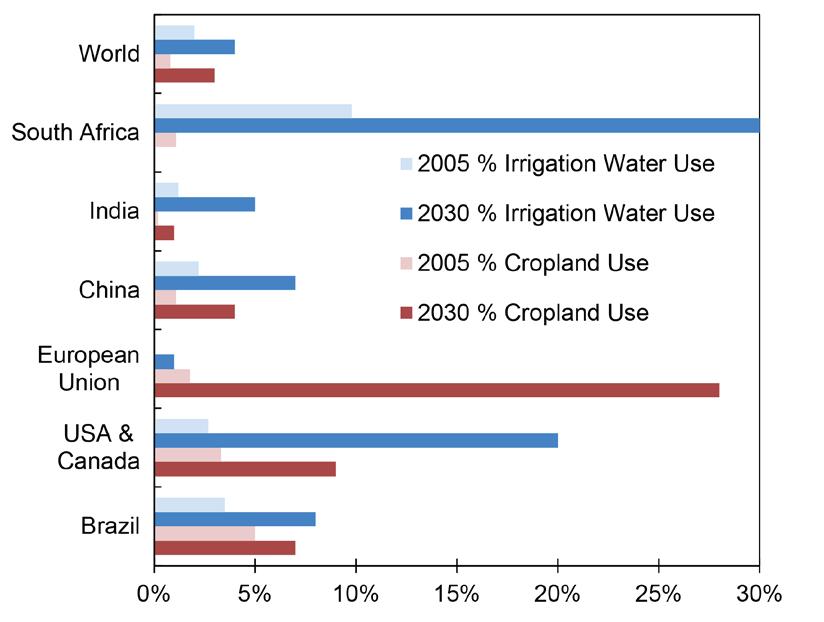
more water than the manufacturing consumes 1 to 4 gallons of water per gallon of climate required 780 gallons of irrigation corn production for ethanol occurs in highly groundwater.34
crisis of 2006-2008 found that the growth to the price increase of maize. Land use biofuel demand is expected to increase oil prices by around 10%.35
But while these technological advances are significant, biofuel advocates point out, they’re not likely to power hard-to-electrify jet airplanes, cargo ships, or trains in enough time to alleviate current gas prices or entirely avert climate disaster. (A nod to the Tesla Semi truck, with a range of 500 miles carrying 80,000 pounds, but long-distance diesel trucks will likely remain on the road for the foreseeable future.)
Act of 2007, the Renewable Fuel Standard (bg/y) of biofuels be produced by 2022: advanced sources, and no more than standards are also in place to ensure the biofuels produce fewer emissions than their petroleum have been supported by a series of tax incentives, some of which were extended in 2020.37 encourage biofuel use. Regular gasoline sold in Brazil is required to contain 27% ethanol.38 fuel in Brazil, compared to 10% in the U.S.39,40 model years 2017-2025 were set, raising corporate average fuel economy (CAFE) standards to in 2025. In 2020, the Safer Affordable Fuel-Efficient (SAFE) Vehicle Rule revised the CAFE improvement of 1.5% until 2030, equal to an average fleet-wide target of 40.5 mpg. 41,42 In 2021, repealing the rule in favor of establishing regulations that align with the Energy Policy and
SOURCE: UNIVERSITY OF MICHIGAN CENTER FOR SUSTAINABLE SYSTEMS
carbon-storage capacity, and improve overall soil health. In turn, they allow the farmers growing them to lower their fertilizer needs and cost.
Meanwhile, several biofuel types can be used to power all these things right now
Corn is the primary biofuel feedstock in the United States today.
Whichever your position, billions of dollars are already pouring into new biofuel refineries, pipelines, and feedstock technologies. I tend toward cautious optimism: that these better biofuel feedstocks are on the horizon, and, if managed carefully, they can be profitable for farmers and produce fuel at competitive prices without creating a market that drives deforestation.
Hybrids, such as carinata (Brassica carinata), are among the most promising. A flowering plant in the mustard family and commonly referred to as “Ethiopian mustard,” carinata can produce two and a half times more biodiesel than soybeans can, and carinata can easily be planted in a three- or four-year rotation with corn and soybeans. That rotation, spread out over the vast cornfields of the Midwest, could greatly increase biodiesel production and reduce the excess corn supply just as demand for corn drops due to more people driving EVs. Carinata can be refined at existing refineries into a renewable diesel that can run any truck on the road today, and the truck won’t know the difference.

Explained: Ethanol.” Energy (EERE) (2020) “Ethanol
Update 2021.”
(ERS) (2022) U.S. Bioenergy Biodiesel.” Investigating growth and 294-306. Food and Agriculture. Greener Energy Pastures.” Conference.
2022 in govt spending bill.”
By simply swapping out a gallon of fossil fuel for a gallon of biodiesel (or, better yet, renewable diesel) at the gas tank for nearly any mode of transportation, we could achieve a significantly lower carbon burden. According to a 2006 study published in Proceedings of the National Academy of Sciences , when compared with gasoline, choosing biodiesel over fossil options reduced greenhouse gas emissions by 41% (ethanol yielded only a 12% reduction). Biodiesel also provides 93% more net energy per gallon than is required for its production; ethanol generates just 25% more net energy than it took to produce it (not a very good return on the energy invested). Even in instances where it’s not practical for biofuels to cover all our heavy transportation needs, simply switching to B20 biodiesel (a blend of biofuel and regular diesel) results in a 20% savings in fossil fuels.
Survey of the Literature
Biodiesel Revisited.” American
Diesel for Use in an Urban Bus. emissions of ethanol from corn, Letters, 7: 1-13.

telecommuting are excellent ways to reduce transportation energy use and related impacts. See more information.
24. U.S. DOE, EERE (2017) Biodiesel Basics.
25. U.S. DOE EERE (2021) “Biodiesel Benefits and Considerations.”
26. Pelkmans, L., et al. (2011) “Impact of biofuel blends on the emissions of modern vehicles.” Journal of Automobile Engineering, 225: 1204-1220.
27. U.S. EIA (2020) “How much carbon dioxide is produced by burning gasoline and diesel fuel?”
28. Searchinger, T., et al. (2008) “Use of U.S. Croplands for Biofuels Increases Greenhouse Gases Through Emissions from Land-Use Change.” Science, 319: 1238-1240.
New feedstock crops being developed by scientists and agronomists are showing promise for providing a range of benefits beyond producing transportready fuels. They add valuable nutrients to the soil, increase water and
29. U.S. EPA (2022) “Northern Gulf of Mexico Hypoxic Zone.”
30. U.S. EPA (2019) “Hypoxia 101.”
31. Popp, J., et al. (2014) The Effect of Bioenergy Expansion: Food, Energy, and Environment. Renewable and Sustainable Energy Reviews, 32: 559-578.
32. de Fraiture, C., et al. (2008) “Biofuels and Implications for agricultural water use: blue impacts of green energy.” Water Policy, 10: 67-81.
Growing carinata as a winter cover crop in the U.S. South between fall harvest and spring planting would add to the harvest without affecting food or fiber production there. And as a bonus, the byproduct of carinata oil production, the low-fiber leftover solids known as “meal” that contain about 45% crude protein (a similar content as in soybean meal), can be used as an input for animal feed.
33. National Academy of Sciences (2008) Water Implications of Biofuels Production in the United States.
34. Schaible, G. and M. Aillery (2012) Water Conservation in Irrigated Agriculture: Trends and Challenges in the Face of Emerging Demand. USDA ERS ERB-99.
35. Malins, C. (2017) “Thought for Food: A review of the interaction between biofuel consumption and food markets.”
36. U.S. House of Representatives (2007) Resolution 6-310, 110 Congress.
37. U.S. DOE, EERE (2020) “Key Federal Legislation.”
Importantly, supporters say new biofuel feedstocks being trialed won’t take away from current food production or contribute to the demise of the rainforest, because these crops can (and should) be grown on land that was previously used for producing ethanol.
38. USDA Foreign Agricultural Services (2015) Biofuels - Brazil Raises Federal Taxes and Blend Mandate.

39. USDA Foreign Agricultural Services (2020) Brazil Biofuels Annual 2020.
40. U.S. EIA (2022) “How much ethanol is in gasoline, and how does it affect fuel economy?”

41. National Highway Traffic Safety Administration (NHTSA) and U.S. EPA (2012) “2017 and Later Model Year Light-Duty Vehicle Greenhouse Gas Emissions and Corporate Average Fuel Economy Standards, Final Rule.” Federal Register, 77:199.
42. NHTSA and U.S. EPA (2020) “The Safer Affordable Fuel-Efficient (SAFE) Vehicles Rule for Model Years 2021–2026 Passenger Cars and Light Trucks, Final Rule.” Federal Register, 85:84.
43. NHTSA (2021) “Corporate Average Fuel Economy (CAFE) Preemption.” Federal Register, 86:90.
Carinata was available in the Southeast beginning in spring of this year by a company called Nuseed, but it’s not the only option for biofuel feedstocks. Several more plant species are on the biofuel table, including rapeseed, switchgrass, jatropha, mustard, camelina, and others, as well as waste oils and animal fats.
In parts of the Midwest, it may be possible to grow a short-season or “90-day”
corn variety each summer, leaving enough time to plant a biofuel feedstock as a winter cover crop. In this scenario, corn production wouldn’t drop at all and might actually increase because of cover crops enhancing the soil. By promoting this option for cover cropping, farmers would gain an additional income source while introducing a practice proven to reduce soil erosion in a region where less than 8% of farmers use cover crops in winter.
The path to better soils, a stable climate, and diversified farm income might be as straightforward as swapping one biofuel ethanol from corn with another from carinata or other feedstocks. But as part of the switch, the entire biofuel system must be overhauled to make it more sustainable while avoiding technological pitfalls. Already, to reduce the climate impact of biorefining, pipelines are being planned across Iowa and Illinois to carry carbon dioxide recovered from refining to facilities deep underground as part “carbon capture-and-storage” systems that come with quite a few of their own trade-offs.
Introducing better feedstocks opens opportunities to build more economic sustainability too; particularly, by fixing the government incentives that led to runaway corn production. For instance, any taxpayer assistance or subsidies the government gives to renewable fuels could be tied to sus -

tainable and regenerative farming practices that protect soils from erosion, such as no-till and cover cropping. Incentives could also require reduced chemical pesticides that are contributing to what scientists are calling a “bug apocalypse” in our planet’s “sixth extinction” era.
Price matters. If we want to talk seriously about leveraging biofuels in the energy transition, we need to recognize that industry will only adopt new fuels and technologies if their costs are comparable or less expensive than what they’re currently using. Biodiesel and renewable diesel were cheaper at the pump in 2022 than fossil diesel. We need to ensure they remain so even while we blend in more carinata, switchgrass, or other feedstocks with greater benefit than corn.
And it’s important that biofuels don’t become dependent on one or two patented plant species sold by one or two Big Ag companies, as with corn and soybeans. Big Ag already has too much power and control over farmers and rural communities.
The most pressing question might be: Can we produce enough food and biofuel feedstock on existing farmland and at competitive enough prices that there’s no need (or profit motive) to expand farming into rainforests or other open, natural spaces?
I believe we can by choosing a wide range of biofuel feedstocks that can be rotated with a diversity of food products in fields around the world. Let’s orient incentives to safeguard healthy land and build an economic structure that avoids externalizing deforestation to other parts of the world. The carbon-sequestration benefit that’s lost when trees are cut down in Indonesia, Malaysia, or Brazil far exceeds any climate benefit from the biofuel those trees would produce. The “carbon debt” will never be repaid.
Finally, let’s keep control over biofuel production in the hands of farmers. As solar, wind, and battery technologies improve and expand, we may eventually wean ourselves off biofuels entirely. Until then, demand for renewable energy will only increase globally. The United States can take the lead in biodiesel production supporting rural communities and farm families, who will be listening to the wind rustle a field of mustard and grasses while the sounds of chainsaws in the Amazon go silent.
Fast-forward to 2016. I’d retired and decided to travel from Pennsylvania to California via Route 6. I purchased a camper to hitch to my pickup truck and headed out. Because I had no time frame, I was game for side trips and adventures along the way. While reading my Mother Earth News magazine, I discovered Mother was hosting in-person Fairs. There was to be one in Wisconsin, and because I was still east of there, I decided, “Why not give it a try?”
We love hearing how folks from all over find inspiration, practical advice, and community through our publications and our Fairs Enjoy this story from a longtime Mother earth News reader and fairgoer, and perhaps we’ll see you at our next Fair! — Mother
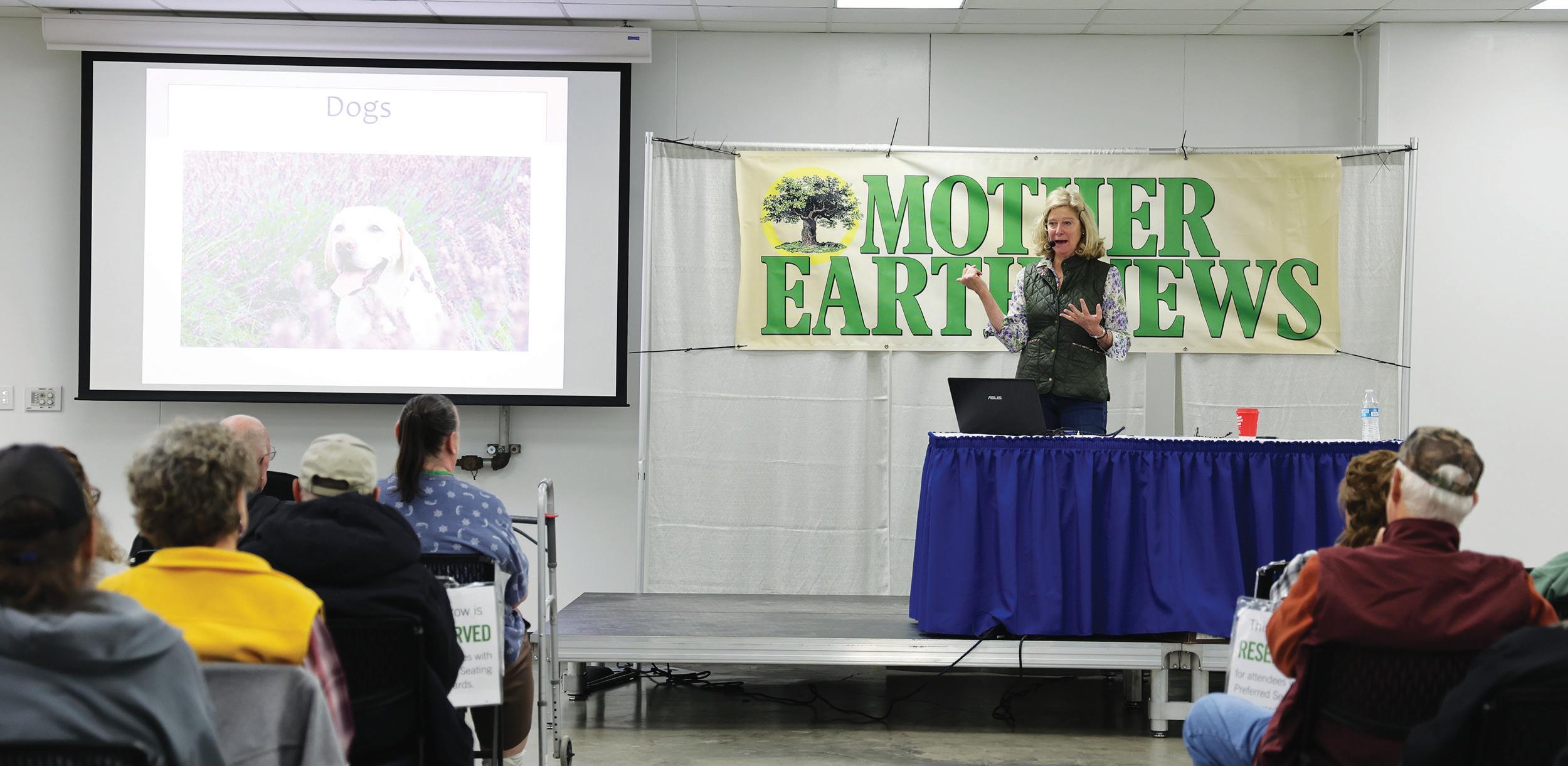 By Nancy Stafford
Photos by Queren King-Orozco
By Nancy Stafford
Photos by Queren King-Orozco
Years ago, when I first started farming, I discovered Mother Earth News magazine. I always found the articles interesting but not always pertinent to my activities at the time. As time went on and my life changed, I stopped reading Mother Earth News. But around 2000, I saw a copy on the newsstand, and after purchasing it and reading it cover-to-cover, I decided to subscribe again.
After purchasing tickets for the weekend and finding a campsite, I wound my way to Wisconsin. Saturday morning, I was near the front of the line at open time with my pass in hand. I found the number of booths and speakers truly impressive, and as I wandered around, I was able to catch part of a workshop on building a log cabin from the ground up. I was impressed by the lecturer’s ability to explain technical terms to beginner carpenters without boring the professionals. There was plenty of reference material available for the beginner and plenty of technical advice for the professional.
From speaker to speaker and booth to booth, I met knowledgeable, friendly folks who were excited to share their passions. The bookstore was loaded with reference material on just about any subject a homesteader or person interested in sustainable living could want. Whether someone lived in the city or country; in a swamp or desert; or in the North, South, East, or West, there was plenty to interest everyone at any age.
Take a journey with one Mother Earth News reader from the pages of the magazine to the in-person Fairs across the country.
I left Wisconsin determined to attend more Fairs. Over the next year or two, I was at Fairs in Pennsylvania, Maryland, Texas, Oregon, and Kansas. I visited several locations more than once. Often, I’d meet the same presenters at different sites and was always happy to visit with past acquaintances.
Once again, life caught up with me, and I let my subscription to Mother Earth News lapse as I moved from Pennsylvania to Nebraska (never making it to California). As the dust settled, I decided to again subscribe to Mother Earth News. To my surprise, the Fairs had been on hiatus during the pandemic but were being rescheduled. I’d missed the one in Texas, but the next one was in Lawrence, Kansas. I wasted no time purchasing tickets and booking a camper spot in the nearby state park. This time, I also talked my cousin into joining me. She lives in Missouri, and our travel distances were close to equal.
Saturday morning, we arrived at the fairgrounds to discover the parking lot packed. Even so, with cars in front of us and more behind, we were able to find a parking spot, and I was pleasantly surprised to find the venue was able to comfortably accommodate the large number of attendees.
There were new workshops and exhibitors, but I was happy to see some of my old acquaintances there too. Not expecting to be recognized after all these years, I was thrilled when one of the presenters I’d talked with at several Fairs remembered me.

I didn’t waste any time and jumped into several presentations during that weekend. For years, I’ve been interested in raising bees and enjoying honey from my own hives. Mother Earth News magazine had printed many informative articles about several methods of beekeeping. At the Fairs, however, the workshops
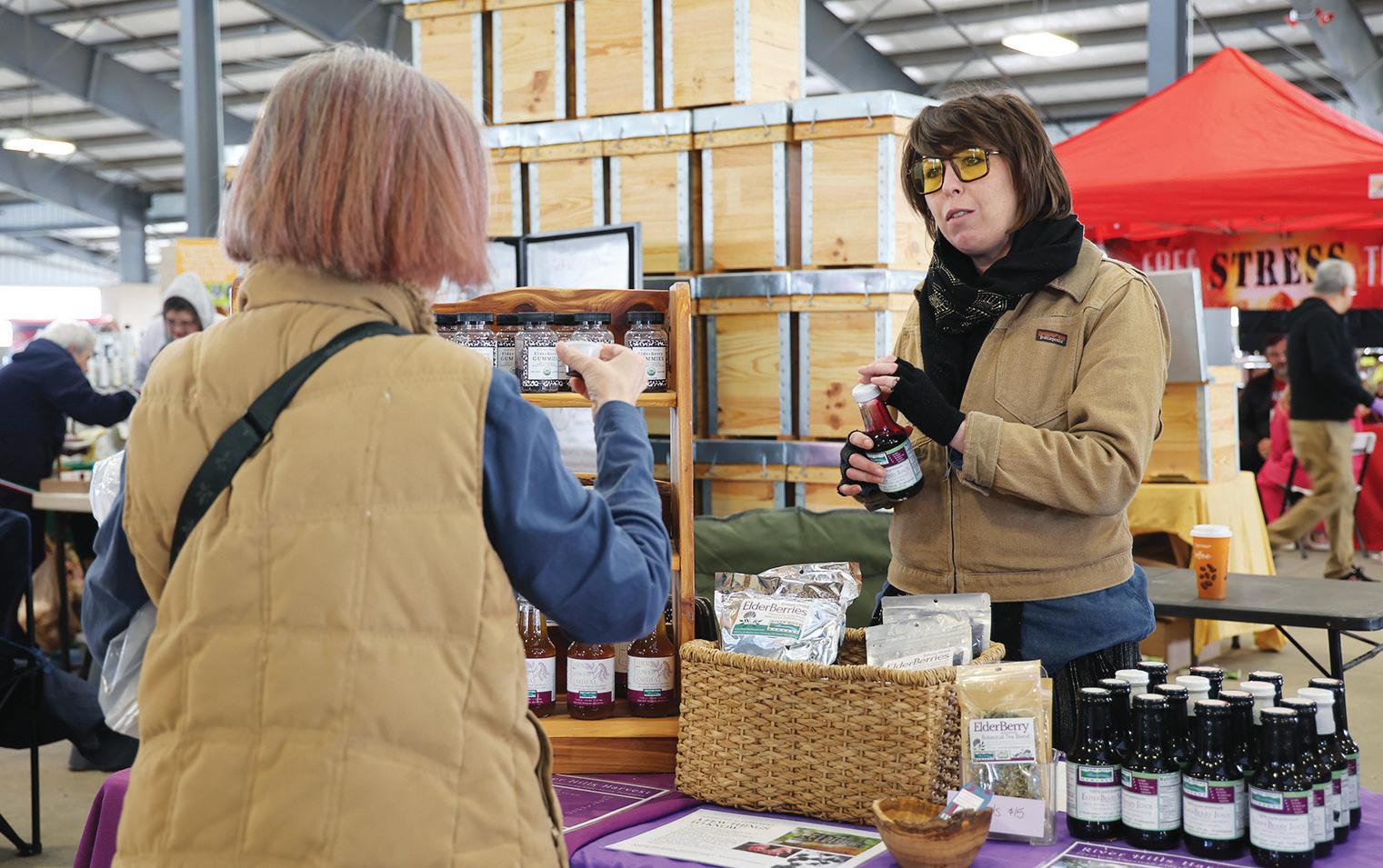

were able to provide more in-depth information. I had attended several of these workshops over the course of my fairgoing. Because I wasn’t ready to start any hives at that time, I had listened to others’ questions, made mental notes, and brought home any information available from the presenters. But on Sunday at the Lawrence Fair, I left with everything needed to start a horizontal hive.
My cousin and I also did a bit of shopping. I’ve kept chickens for years. Normally, I buy chicks from the local feed store, but on occasion, I end up with a rooster. I’ve also hatched a few eggs, both naturally and with an incubator. Right now, I have some hens, an incubator, and no rooster, so I was able to purchase some fertile eggs at the Fair. My cousin lives in the suburbs and not on a farm like I do. At the Fair, she investigated many sustainable products usable in her everyday life. Leaving the grounds on Sunday, her car was packed with a rake, honey, T-shirts, candy, pretzels, freezedried snacks, and myriad other items.
While walking through the bookstore on Saturday, I saw impressive stacks of books. They dwindled to just a few books or disappeared altogether by Sunday. Piles of hand tools and kitchen gadgets met the same fate. Groups of strangers, ranging in age from children to folks in their 70s and 80s (and probably older), stood around exchanging life stories and experiences while making new friends. The Lawrence Fair was just as exciting as the ones I’d attended years ago.
There will be an upcoming Fair in West Bend, Wisconsin, and I’m looking forward to attending and I may be able to bring along even more family members next time.
Come visit your Mother at our last 2023 Fair in Wisconsin! Register now at www.MotherEarthNewsFair.com. — Mother


been growing in popularity again in the past couple of decades. This option may appear too difficult and time-consuming amid child-rearing, but for those looking for alternatives to disposables whether to potentially save some money or trips to the garbage can or to find a comfier material for your baby’s bum cloth diapering can be an accessible solution once you know the basics.
with elastic leg holes, allowing the diaper to grow with your baby and remain tight against their skin to prevent leaks.
By Laura Forrest HopfaufIn the U.S. alone, the disposable diaper industry has become a $7 billion behemoth and growing. And while disposables have had a foothold in the market since the mid-20th century, cloth diapering is still a viable option and has
Although you can still use extra-absorbent cloths with safety pins as cloth diapers, most modern cloth diapers consist of two main pieces that are fashioned in multiple ways depending on preference. The main components of a modern cloth diaper are an absorbent liner and a waterproof outer shell that contains an elastic waistband with adjustable snaps along
The three main types of cloth diapers have this basic design in all-in-one, pocket, and hybrid. An all-in-one diaper is a waterproof shell sewn together with an absorbent liner in a single product, the most like disposables out of the three designs. When a baby soils an all-in-one diaper, the whole diaper needs to be changed and added to the laundry pile. Pocket diapers have a waterproof shell, a soft liner, and an inner pocket where an absorbent liner is placed. Like an all-inone, a pocket diaper needs to be changed and washed after use. However, a pocket diaper can be adjusted to fit your baby’s needs by adding thicker, more absorbent liners into the pocket for overnight use. Hybrid diapers have a waterproof shell,
Among the daunting droves of diaper options, cloth diapers can be a trustworthy and comfortable choice for your baby.
a soft interior, and a removable inner cloth liner that sits on top of the soft interior. In this case, if a baby’s waste doesn’t spill onto the soft interior, just the inner cloth liner can be changed, thus creating less laundry.
Modern cloth-diapering brands range in expense, from around $35 per diaper at the higher end to about $6 per diaper at the lower end. Most large online retailers sell multiple cloth-diaper brands and designs. There’s also a large market for used cloth diapers on Facebook Marketplace, where it’s often possible to find barely used cloth diapers at vastly reduced rates. Making your own cloth diapers is also a valid option, with many patterns available online both free of charge and for a fee. If you’re exclusively using cloth diapers, you’ll need 20 to 30 per baby. A newborn will go through them every two days, but by 3 months old, their diaper supply will last for 3 to 4 days.
Cloth wipes are an even easier and more accessible way to enter the reusable-diaper world. They require less work and cleanup than cloth diapers and take less of an initial investment. Plus, some babies can get irritated skin from the ingredients in disposable wipes, and using cloth can eliminate this. You can purchase cloth wipes online, but you can also make your own by cutting an old flannel shirt into squares with the edges hemmed so they don’t fray. Unless there’s a mess that requires more in which case, a little bit of warm water will do the trick a dry cloth wipe is often all that’s needed. If you aren’t a fan of cleaning your baby without a solution, you have options for making your own that are clean and cost-efficient, ranging from coconut oil mixed with water to baby soap mixed with water to essential oil blends. (Only use certain essential oils on babies older than 3 months, and understand proper dilution and ingredients before using.) If your cloth wipes aren’t overly soiled, you can simply toss them in with your regular baby laundry or do them separately with diapers, depending on your preference.

Learning to clean diapers can seem intimidating and time-consuming, but after a few times, it’s a relatively simple process that won’t add a lot of work to a normal day. A urine-filled diaper can go directly into a wash pile and sit until the laundry is ready to wash. A stool diaper is slightly different. Before the baby is eating solid or semi-solid food, a stool diaper can also go directly into the wash pile and sit until laundry day, because this kind of waste is water-soluble and will dissolve in a washing machine without clogging pipes. Once a baby starts having solids, their stool will no longer be water-soluble and will need to be removed prior to washing. This is as easy as lifting off the stool and throwing it into the toilet, if it hasn’t stuck all over the
diaper, or using a bidet or hose to spray stool off the diaper and into the toilet before adding it to the laundry.
Wash cloth diapers at the correct temperature to retain their waterproof properties and absorbencies. Also, wash them at 140 degrees Fahrenheit at minimum to ensure you’re killing bacteria. While one wash is completely acceptable and will clean cloth diapers, many people have found that a wash with a soak followed by an additional rinse cycle is the best way to clean cloth diapers to prevent them from retaining odors. Which detergent to use on cloth diapers is up for debate by the user. You can use baby detergent, adult detergent, or a homemade solution, depending on preference.
The final step to cleaning cloth diapers is drying them. While cloth diapers can be put in the dryer, avoid using the dryer too often, as this can cause the diapers to wear out sooner than they would otherwise. Hanging them to dry will extend their lives, and hanging them outside in the sun is best to help fade stains and let natural UV rays kill bacteria that cause odors.

Like anything in life, there are many options for cloth diapering. You can go all in and use nothing but cloth; you can use no cloth; or you can fall somewhere in between. Many choose to use cloth diapers during waking hours and disposables during naps and overnight. Another typical way to split the use of both kinds of diapers is to use cloth at home and disposables when out of the house. Ultimately, finding the right combination of cloth and disposable diapers for you (and baby) to feel comfortable will be the best combination.

Laura Forrest Hopfauf lives in West Virginia with her husband and two daughters. Her work has been featured in publications such as Blue Ridge Outdoors, Motherly, Pregnant Chicken, and is forthcoming in Go World Travel Magazine and Virginia Bride Magazine

America has always been a mix of cultural food traditions. Its wealth of foodways (the agricultural and culinary traditions around food) allows us to be part of an expansive awareness. As cities become more culturally diverse, it’s a chance for renewed cultural fusion. Building our food webs to nourish, to grow, and to strengthen communities lets us all thrive.
As we lean into more diverse foodways, we’re reclaiming food and culture to create security, order, and resilience in our communities. Food access, education, and supporting farmers throughout our food system all help create healthy communities. We share our collective values and our commitment to honoring our food cultures, foodways, and traditions that honor the land stewardship of our forebears. We prove that challenges and barriers can’t stop the moral courage and steadfastness of communities working diligently toward the common good and sharing the bounty of the land.
Leveraging African ancestral practices to revitalize urban land, Akron Urban Agriculture (www.AkronUrbanAgriculture.com) in Akron, Ohio, strives to build better communities. It does this through agriculture, conservation, and allowing communities to access land for growing culturally relevant crops and for being an active part of the food movement. Akron Urban Agriculture helps
improve food systems, food production, and food quality. Food leader Kashava Holt hosts beekeeping classes that cover the basics and expand the shared knowledge of the community.
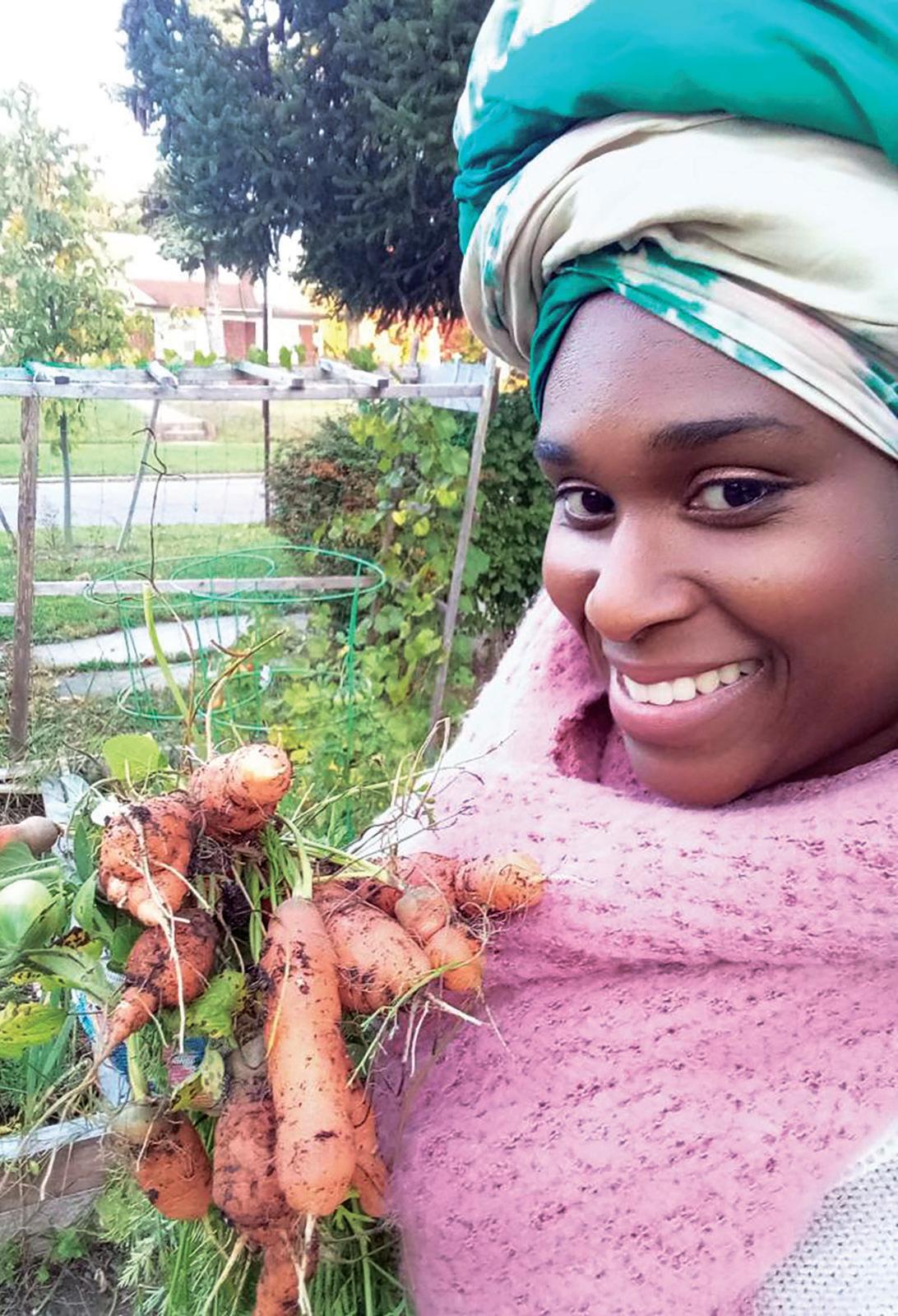
Holt is also part of the Akron High Tunnel Initiative as an outreach specialist. The initiative hosts monthly events that include training, support, and guidance for participants in a five-year contract to use the high tunnels to create food opportunities for urban environments.
Akron Urban Agriculture strengthens local food web networks within the city. It encourages food cultivation and practices that extend the growing season, such as solar greenhouses and high tunnels. It also works directly with the local public school system.
Drawing on diverse African cultural and culinary practices, these agricultural centers enrich their neighborhoods.Story and photos by April
“Community gardens bring different cultures together,” says Holt. Cross-cultural exchanges through food and land are a powerful means to create sustainable change. Directly connecting foodways helps address problems, such as food shortages, nonnutritious foods, and waste management. Food can be used as a catalyst to create real change, allowing people and communities to create unity, harmony, care, and growth.
Using her knowledge of African and Indigenous land practices of intercropping and saving seeds and applying only a few external inputs, Marquita Smith of Akron, Ohio, is building upon her family’s gardening legacy. She grows crops, such as field peas, that’ll improve the soil and, thus, the next planting season.
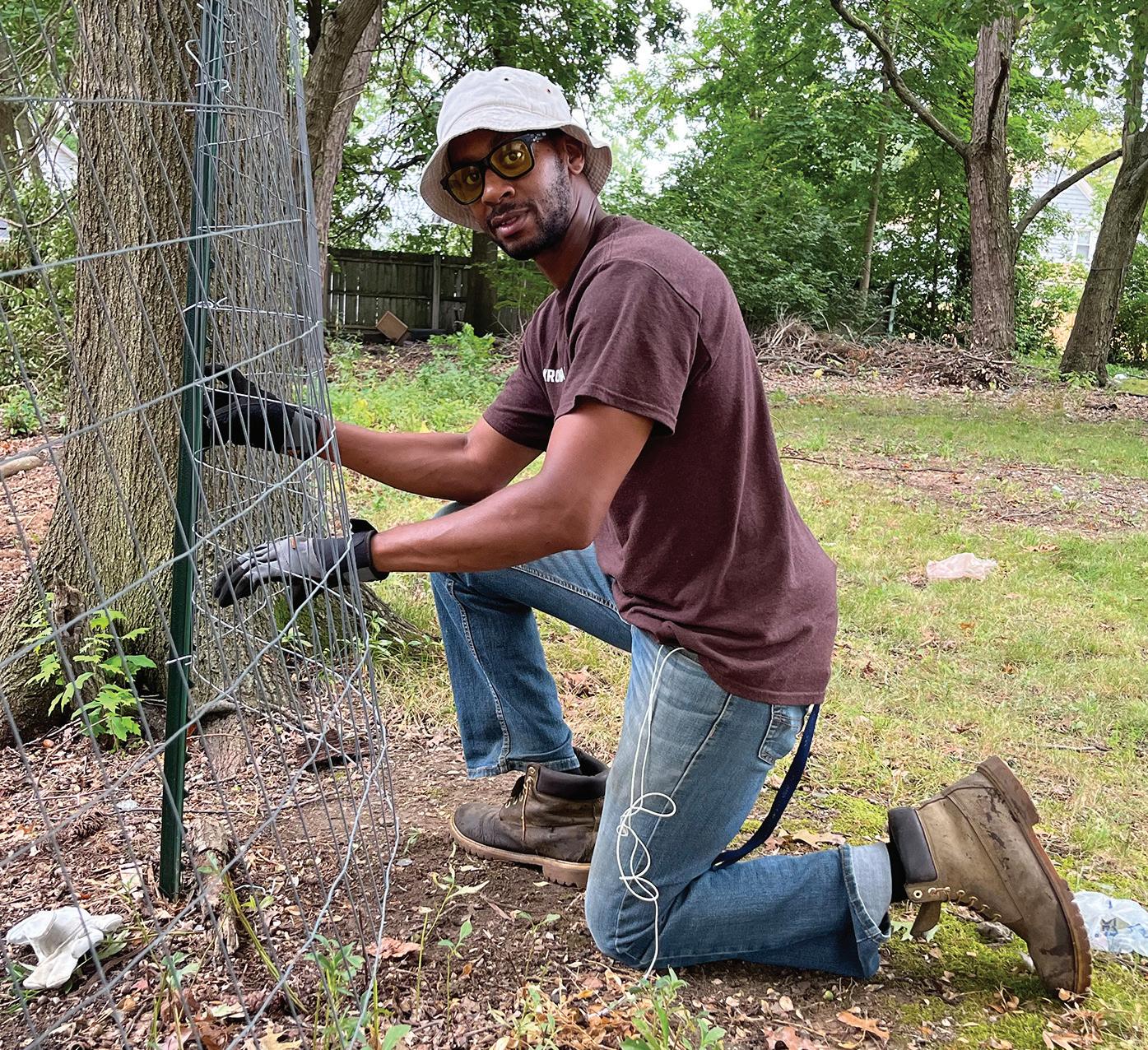
“I’m passing on the holiday recipes to my daughter this year, who recently graduated high school and will be attending college this spring!” she says. “I’ve always felt that our traditional African American foods, grown from the ground and served at the table, keep the care for family, memories, and culture alive, well, and wrapped with warmth and love.”
Smith is part of a new generation that’s begun the reclamation process, focused on honoring and standing by the values of civility, truth, justice, and moral clarity. This new generation uses techniques, such as crop rotation, to prevent pest problems and to build up the soil. They save their own seeds from harvest to harvest, only collecting and using the best of each plant, and sharing that seed knowledge with the farming community. These growing practices help create remarkable soil health.
“This fall’s harvest has been one of reverence for the traditional foods cooked by the women in my family during the holidays,” Smith says. “I’ve planted, with purpose, sweet potatoes for the delicious pies, along with okra, corn, and collards for our sidedish must-haves.”
This model of domestic renewal requires a significant amount of physical labor and concentration on the economic and cultural legacy of her family. And as Smith builds ties to that legacy, she also allies with many family members and neighbors to create a robust and strong agricultural community that works toward land justice together.
Our diversity connects us as a nation and a community. Shanti Community Farm ( www.ShantiFarmsOH.com ) in Akron, Ohio, provides refugees with the chance to farm and to carry on their agricultural traditions. Growing food gives us the tools to adapt, and we create a forum for growth and diplomacy. “We should all think like generational farmers for the future,” says Holt.
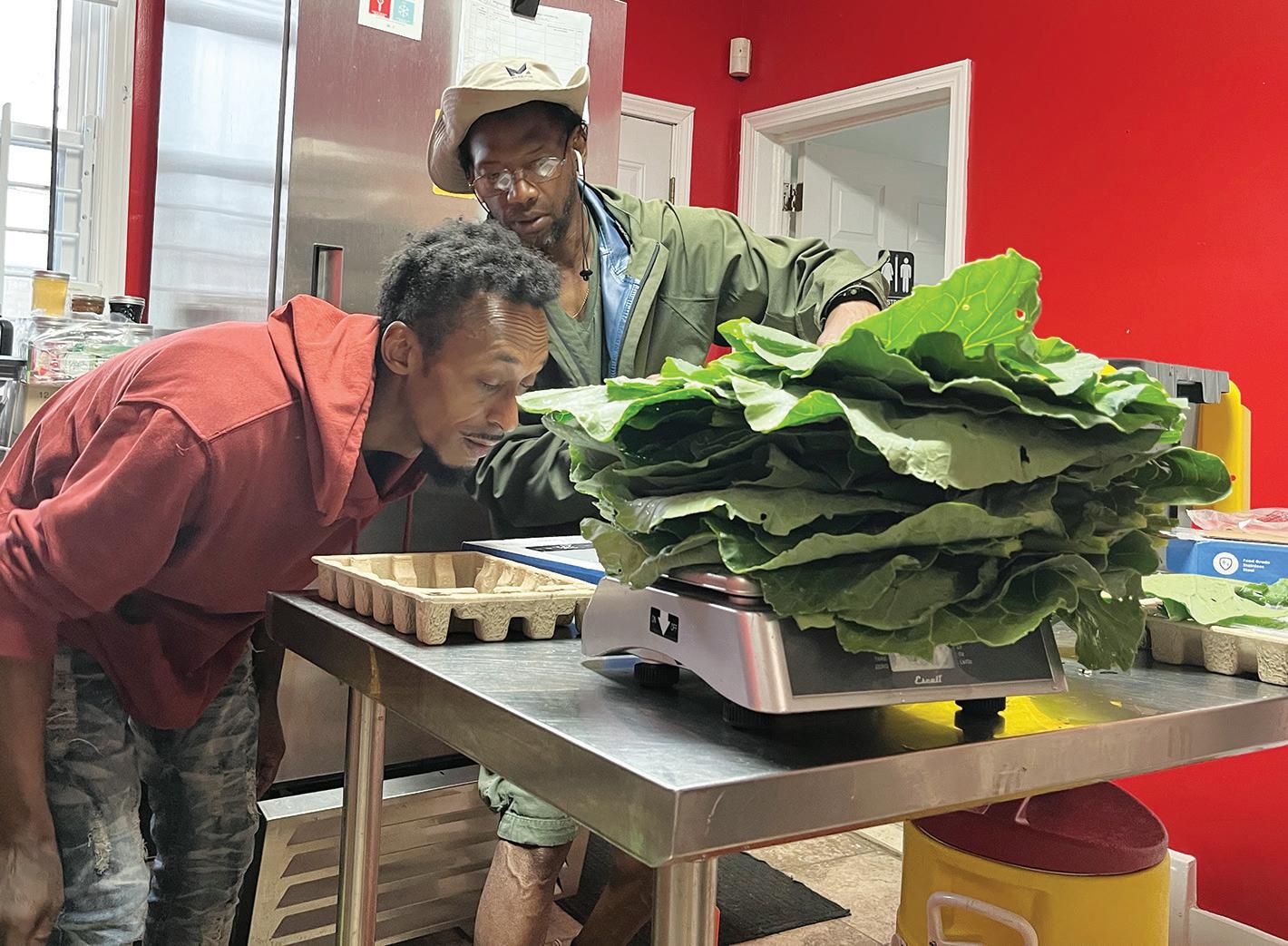
In 2019, Myriah Towner started traveling around her home state of Texas with a team to document the stories of Black farmers and ranchers. Four years later, her nonprofit Black Farmer Stories is on its way to releasing the first collection of these amazing stories. Hear more from Myriah on the Mother earth News aNd FrieNds podcast at www.MotherEarthNews.com/ Podcast/Black-Farmer-Stories
As we garden in our communities, we’re building a strong foundation of community skills that allows us to experience the beauty of nature. Perfecting growing techniques and strategies helps create kinder and more caring communities. Growing crops in a community also brings out our creative side, as we select colors, scents, smells, and culturally relevant food spaces. Gardening and getting into the soil is a wonderful way to combat depression. It also gives children and families food independence and freedom. Children can build land and plant knowledge that they can pass on from generation to generation. This helps codify our cultural use of herbs and spices. By focusing on sustainable African ecological land practices to increase soil fertility and health, we introduce new ways of thinking to our farming system. We can use these practices to combat climate change and to improve pest resistance in crops. By combining the old ways with new practices, we create a renewal that starts at home and helps bring about long-term, sustainable change in our food system.
The Detroit People’s Food Coop is committed to providing farmers access to markets to create community change from within. It wants to facilitate greater access to healthy foods, education, and the tools people need to make decisions around food. The organization focuses on community learning and engagement around nutrition, cooking, and sustainability. It helps people heal themselves and each other through food by connecting the community back to the land and supporting farmers, the stewards of the land.
Actively working to remove barriers to the food system helps give the farmer and the customer better access to it while supporting farmers. “Black foodways are so important to us, because we know as our relationships [with the food and the land that nourishes the food] deepen, we can become more creative about how we can replace systems that harm us,” says Shakara Tyler, president of the board of the Detroit Black Community Food Security Network (www.DBCFSN.org). “It equally becomes a form of social and political resistance to food apartheid and a form of worship to the spirits that ensure our well-being.”
Mutual cooperation toward land access, food, and seed sovereignty creates a new reality that can also exist as a meaningful model for renewal and reclamation. Engaging in the local food system allows all of us to honor the past and work towards a more sustainable future.
“The veneration of our sacred foodways and attuning to our spiritual ecologies of Blackness are intimate companions. And one of the most fruitful ways to do this is in rebuilding our spirits of intimacy with others. The only thing better than watermelon, okra, and black-eyed peas is stewarding them in beloved community with our people,” says Tyler.
As cities across our nation welcome arrivals from around the world, the one thing that connects us is land and food. New Orleans’ rich heritage of cultures, languages, and traditions creates a wealth of knowledge to access to unify our communal land and cultural practices.
New Orleans The Market Umbrella operates the weekly Crescent City Farmers Market (www.CrescentCityFarmersMarket. org) in New Orleans. It connects farmers, fishers, ranchers, and local food businesses with customers, resulting in excellent quality, good prices, and robust community dialogue.
“Local seasonal produce is not only delicious, but it is rooted in culture and place,” says Ashanti Anderson, the development director for the Market Umbrella. “All of our vendors operate within 200 miles of New Orleans and bring to the market products that grow from our own rich soils.”


As we expand our land practices and gain insight into the microcosms of the soil, we build our knowledge and adaptation skills in an ever-changing environment. Soil is the foundational aspect of our food system, and these communities use their cultural knowledge to improve soil health. And just as sharing cultural knowledge builds the health of the soil, it also builds healthy communities, while helping us bring beauty to fruition through our harvests.
These ongoing community projects by people of color show how we can create a more just, vibrant world. The food system is a place to explore, to grow, and to honor other cultures as we reflect on our own values of justice and equity. We’re all called upon to take up the mantle and to move our country forward toward agricultural justice. Let’s create a democratic system where everyone has a role in the community food system, and where everyone can see their culture and community reflected in it.
April Jones is a community advocate from Akron, Ohio, who’s dedicated to promoting food justice, water access, and food sovereignty. With a strong passion for community gardens, farmers markets, and creating a fair food system, she’s an accomplished writer, public speaker, consultant, blogger, recipe developer, book reviewer, and event planner.

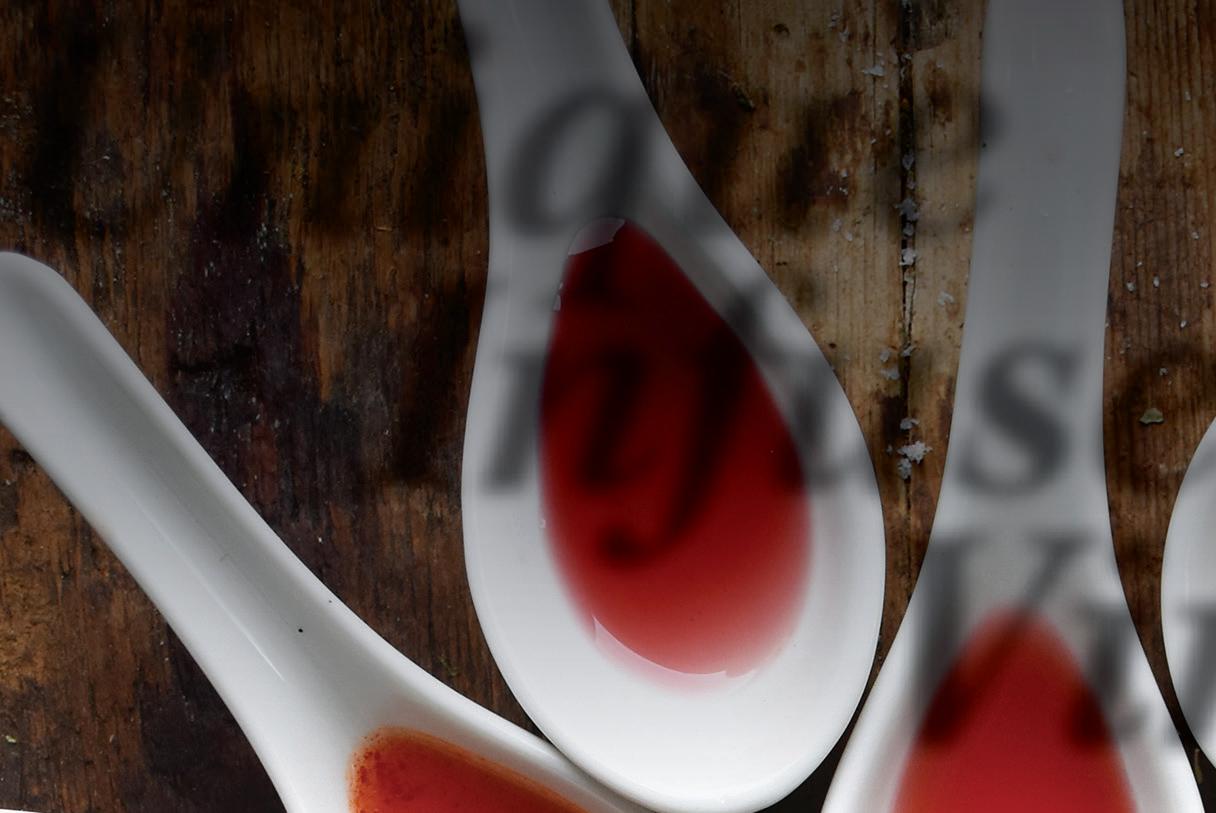

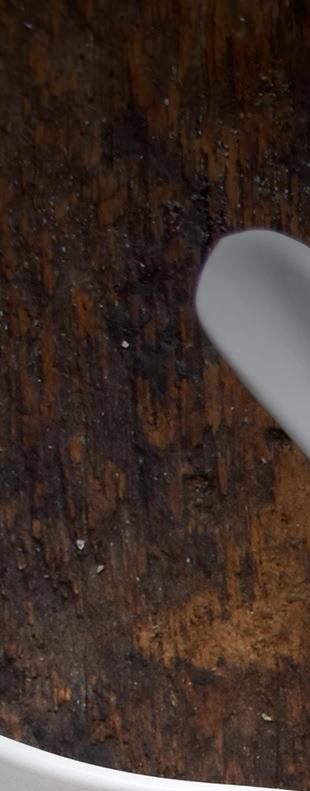
 Story and photos by Pascal Baudar
Story and photos by Pascal Baudar
Making your own infused vinegars is even better than creating vinegars from scratch. You just need a good base vinegar to start. From there, you can infuse it with almost anything that’s not poisonous or unhealthy.
The first stage involves taking several long walks and researching local plants to understand their flavor profiles. The second stage is becoming acquainted with the spirit of the place, letting it speak to you from a flavor perspective. For example, my local mountains in Southern California are mostly populated by pinyon pine and white fir. Other flavor accents include fennel, ponderosa pine, juniper, and various sagebrushes. I try to infuse all of those into the vinegars I create.
I usually start with a good-quality apple cider vinegar and infuse it with pinyon pine branches, white fir needles, and crushed unripe juniper berries, which will give the vinegar lemony and tangerine flavors with hints of pine. Mugwort and yarrow are ancestral herbs the Vikings and Celts used as brewing ingredients, but they also have medicinal and spiritual properties. I gather mugwort in fall, when the plant has deep, complex flavors that I associate with aging.
My mountain blend varies each year. A typical blend may contain more than 12 different ingredients in various ratios. I age this vinegar much longer than any others, up to a couple of years.
In the end, your own infused vinegar will become more than just a vinegar. You’ll have established a personal spiritual connection to your place. This is how real food should be.
One of the main differences between a vinegar made from fermentation and a vinegar infusion is the shelf life. Most infused vinegars retain optimal flavor for 5 to 6 months, or up to a year in good storage conditions. Pine, fir, and spruce products tend to keep their savory qual-

The best way to preserve flavor over time is proper storage. When you bottle your infused vinegar, fill the bottle as much as possible to avoid excessive exposure to air, and make sure it’s tightly sealed. Store it in a cool, dark place at 65 degrees Fahrenheit or lower, or in the fridge. Toss the product if you see any sign of mold, sliminess, or unusual cloudiness but this has never happened to me in the 20 years I’ve been making infused vinegars.
Any vinegar can be used to create an infusion, so long as it’s at least 5% acidity. Be aware that some ingredients can reduce the acidity level, and you don’t want to end up with a flavored vinegar that’s prone to spoiling.
ities for a long time. The reason most infused vinegars don’t keep as long as regular vinegars is because the flavors of the infusion come from organic compounds, which, unlike the vinegar itself, tend to deteriorate over time. I once made an infused wild mint vinegar that tasted like a regular apple cider vinegar a year later.
Colorado State University Extension recommends using the following vinegars for infusion: apple cider, white wine, red wine, champagne, balsamic, and distilled white but I’ve never used distilled white. It’s best to pair specific types of vinegar with the appropriate savory ingredients. I’ve discovered that balsamic vinegar infused with mint is a bad pairing, but apple cider vinegar infused with white fir or pinyon pine is heavenly. Apple cider vinegar works well with fruits and berries, while white wine or champagne vinegar is usually paired with herbs. However, I often use apple cider vinegar or mead vinegar for herbs and chiles too. Red wine vinegar can be awesome with strongly flavored ingredients, such as black walnuts, olives, and garlic. Rice vinegar is milder and works well with subtle savory ingredients, such as seaweed.
Here are some of the most common wild or store-bought ingredients used for flavoring infused vinegars. You can
Instead of hitting a sour note, your homemade vinegar can be infused with flavors evocative of your place on the planet.
choose any one, or use a combination of them whatever appeals to your personal tastes.
Fruits and berries. Peels from oranges, grapefruits, limes, lemons; elderberries; blueberries; blackberries; raspberries; and sumac, manzanita, and juniper berries.
Fresh herbs. Mint, fennel, tarragon, lemongrass, thyme, parsley, dill, basil, and rosemary.
Dried herbs. Bay leaves, mugwort, yarrow, wild sages, and sagebrush.
Spices. Peppercorns, black mustard, chiles, cinnamon, vanilla beans, and the

Sometimes, it’s a matter of taste how much of a particular ingredient you infuse in vinegar. An excessive amount of thyme or bay leaves isn’t going to taste great. Limits can also be related to food safety. If an ingredient isn’t acidic and you use too much of it, you could raise the pH and make the vinegar prone to spoiling.
The National Center for Home Food Preservation (https://NCHFP.UGA.edu ) sets the following maximums for individual ingredients per 2 cups vinegar:
Fresh herbs: 2 to 3 sprigs
Dried herbs: 1 teaspoon
Fruits and berries: 1 to 2 cups; 1 orange or lemon peel
Vegetables: 1 to 2 cups
Spices: 1⁄2 teaspoon
I like to calculate the pH of some of the wild ingredients, and I use with pH test strips. Pine, spruce, and fir needles are quite acidic (low pH), and I can therefore use a greater amount of them in my homemade infusions. I have no problem using a ratio of 1 part pine or fir needles or juniper berries to 2 parts vinegar. I use a greater quantity of dried foraged herbs if the flavors are milder than commercial savory herbs. For example, chickweed has less intense flavors than rosemary. On the other hand, some sages and sagebrushes are so pungent that I choose to use much less than recommended.


seeds of wild fennel, celery, black mustard, cumin, coriander, dill, and fenugreek.
Vegetables. Garlic, fresh peppers, onions, and shallots.
Roots. Ginger, wild mustard, licorice, wild celery, and turmeric.
In my quest for truly local flavors, I’ve successfully used unusual ingredients to create infused vinegars representative of whole environments, such as my California mountains and forests. You may not be able to find these in your immediate area, but the list will give you some ideas of what to look for.
Barks. I use roasted white oak and coast live oak bark to imbue smoky flavor. I collect bark from fallen oak trees or branches, particularly white and coast live oaks.
Stems and twigs. Quite a few sages and aromatic herbs are great for infusing, including mugwort, sagebrush, black and white sage, and tarragon stems. Originally, I only used the leaves, but over time, I realized the stems and branches are also highly savory.
Pinyon pine is an interesting flavoring ingredient. You can use the green, unripe pine cones or the needles (although the needles can be somewhat bitter), but the small branches are spectacular. Remove the needles and split the branches into two
lengthwise portions, then place them into the vinegar.
Wood. Although oak has traditionally been the wood of choice for flavoring vinegar, you can also purchase wood chips normally used for grilling or barbecuing mesquite, birch, apple, apricot, hickory, and more. Locally, I forage wood chips from mesquite, figs, oak, and juniper. Toast them lightly with a kitchen torch or in your oven for smoky accents.
Unripe berries. California juniper berries are much tastier when green and unripe lemony, with strong hints of pine. Unripe, green manzanita berries can be used as a lemon substitute.
Pine, fir, and spruce needles. I use juniper berries to infuse pine flavors, and I use pine or fir needles to infuse lemony or tangerine flavors. All true pine can be used for culinary purposes, although pregnant women shouldn’t ingest pine teas and infusions.
Some evergreens and conifers aren’t actually pines and should be avoided, including Norfolk Island pine and yew, which is deadly.
Seaweed. One of my favorite infused vinegars is made with smoked seaweed foraged on a trip to Northern California.
The two main methods for infusing vinegar are hot (with heated vinegar) and cold (with room temperature or refrigerated vinegar).
Many of the infused vinegars I make, such as fresh mugwort in blueberry-infused vinegar, pair savory and aromatic herbs or spices with fruits or berries. If you create a recipe from scratch, sometimes you’ll need to make a decision about which method to use, or even to use both methods. A heated vinegar will be much better for spices, whereas a cold method would be better for other ingredients. As
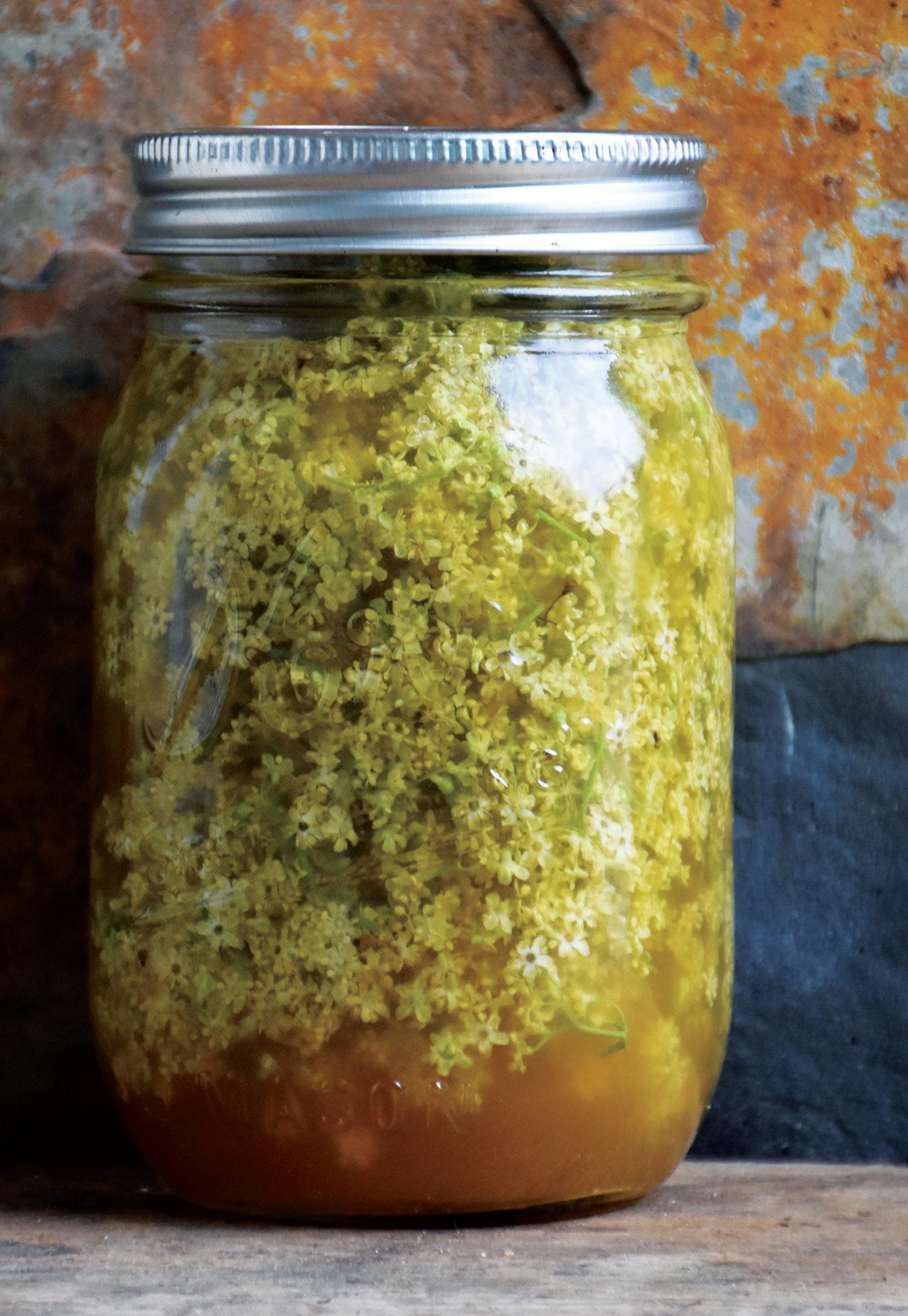
Each year, I make a batch of this vinegar with blossoms from local Mexican elder (Sambucus mexicana), which I think are milder than black elder (S. nigra) and have their own flavor accents. This is a classic recipe in Europe.
When foraging elderflowers, make sure they’re newly opened and full of pollen. Collect them in the morning on a sunny day and place them into a paper bag.
Ingredients
• 10 Mexican elderflower heads, or 4 to 5 black elderflower heads
• 13⁄4 cups apple cider vinegar
• 2 to 3 tablespoons maple syrup (optional)
My method to get rid of tiny flies on the flowers is to place the latter in a bowl outdoors for an hour or so, and most of the little critters will vacate. Another technique is to gently shake the flowers. Don’t run the flowers under water, as you’ll wash off the pollen and much of the flavor. Use the flowers as soon as possible after harvesting.
You can substitute white wine, rice, or champagne vinegar for apple cider in this recipe. Either raw or pasteurized vinegar will work. Yield: about 1 pint.
1 Remove flowers from the stalk and small stems by rubbing gently with your thumb and forefinger in a downward motion over a bowl. They should drop without much effort. Don’t wait until flower heads are slightly wilted.
2 Pack flowers loosely into a pint jar.
3 Add vinegar and optional maple syrup, then place a lid on the jar. Shake jar gently to mix syrup and vinegar. Add more vinegar if necessary to fill jar to the top.
4 Place in a cool, dark place for 2 to 3 weeks. Strain and discard the flowers. Transfer infused vinegar into a clean bottle or glass container, cap tightly, and store in refrigerator or other cool, dark place at temperatures below 65 degrees Fahrenheit for about 6 months, or up to a year in perfect storage conditions.
such, you could heat the vinegar, add the spices, let it cool, and then add other flavorings, such as berries.
Hot infusion method. Heat can help extract flavors from ingredients and is especially effective with spices and dried herbs. I use this method to make spicy vinegar with dried chili pods, or vinegar with dehydrated elderberries.
Start by heating the vinegar to just below the boiling point. Meanwhile, clean the herbs, spices, vegetables, fruits, or other ingredients if necessary. You can also chop or bruise savory herbs for optimal extraction. I often cut berries with the tip of a knife to release their essence.
Place the ingredients in a clean jar, then add the hot vinegar. Don’t overpack, and maintain a ½-inch headspace. Use the guidelines in “Ratio of Ingredients to Vinegar” on Page 42.
Add a lid to the jar and store it in a cool, dark place, like a basement or
fridge. Taste after a couple of weeks to see if you like it. Most infused vinegars need to be aged for at least a month for optimal flavors, but that’s not always the case if you use extremely flavorful ingredients. Ultimately, it’s up to you, so taste as you go along. If the taste is too strong, add more vinegar.
When I’m happy with the flavor, I stop the aging process by straining the vinegar into a bottle, sometimes adding a sprig or two of fresh herbs or berries for a decorative flourish. For long-term storage, make sure to fill the bottle to the top to minimize oxygen exposure. Store the infused vinegar in a cool, dark place, such as a basement or fridge. Shelf life is about six months, or up to a year if the temperature is kept below 65 degrees.
Cold infusion method. I use this traditional method most frequently, because heat can alter the flavors of many ingredients I infuse, such as pine, fir, juniper berries, spruce, and others. Both pasteurized and raw vinegar have worked for me without any problems.
To cold infuse vinegar, first wash the flavoring ingredients in cold water and remove any bad parts. If you don’t forage your ingredients, make sure they’re fresh and organic. To better extract flavors, herbs can be bruised, fruits can be chopped, and berries can be crushed or pricked with the tip of a knife.

Place the ingredients in a jar using the ratio of 1 part infusing material to 2 parts vinegar. Add a lid and store in a cool, dark place. Shake the contents gently at least once a day for the first 3 to 4 days, then about once a week after that. Taste as you go along, and stop the process when you’re happy with the flavor. I usually age the vinegar for 3 to 4 weeks, then strain and bottle it.
Minimize oxygen exposure by filling the bottle as much as possible and storing it appropriately. Shelf life will be about six months if the temperature is below 65 degrees, or a few weeks if the temperature is higher. I don’t age raw berry or fruit infusions for more than a month for optimal flavor.

Pascal Baudar is a forager, wildcrafter, and teacher of traditional food preservation techniques. He’s the author of four books. This excerpt is reprinted from Wildcrafted Vinegars (Chelsea Green Publishing), available below. For

I try to follow a ratio of 1 part flavoring ingredients to 2 parts vinegar by volume. If I know the berries, fruits, or other ingredients are quite acidic, I may increase the ratio to 1 part infusing matter per 1 part vinegar. For making white fir needle vinegar, I tested the pH of a paste made from the fresh needles and it was very low, so I use a 1-to-1 ratio for this vinegar.

Award-winning author and forager Pascal Baudar uncovers incredible flavors and inspiring recipes in his latest book, Wildcrafted Vinegars. Through more than 100 recipes, Baudar delves deeply into the natural world for wild-gathered flavors, using herbs, fruits, berries, roots, mushrooms, and even wood, bark, and leaves to infuse distinctive gourmet-quality vinegars.
After you’ve mastered the basic methods for making and aging vinegars at home, you might be inspired to experiment on your own and find local plants that express the unique landscape and terroir wherever you live. Or, you might decide to forage for ingredients in your own garden or at a local farmers market. Either way, Wildcrafted Vinegars is an encouraging guide to safe, responsible wild-gathering and food preservation.
This title is available at Store.MotherEarthNews.com or by calling 800-234-3368. Mention promo code MMEPANZ5. Item #11749.






























































What comes to mind when you hear the words “self-sufficiency” and “homesteading”? Acres of pasture? Livestock? Solar panels on top of the quintessential red barn? These can be part of homesteading, but they aren’t requirements. Homesteading is, more than anything, a lifestyle focused on self-sufficiency. We can become more self-sufficient regardless of where we live.
If you live in an apartment or townhome, or if you answer to a homeowners association (HOA), you’ll have to think outside the box. You won’t have a herd of goats, for example, but you can participate in a goat share. As you become comfort-
able homesteading within city ordinances, your confidence and skills will increase and you’ll find yourself becoming an ambassador of urban self-sufficiency. The following 10 areas are just the beginning.

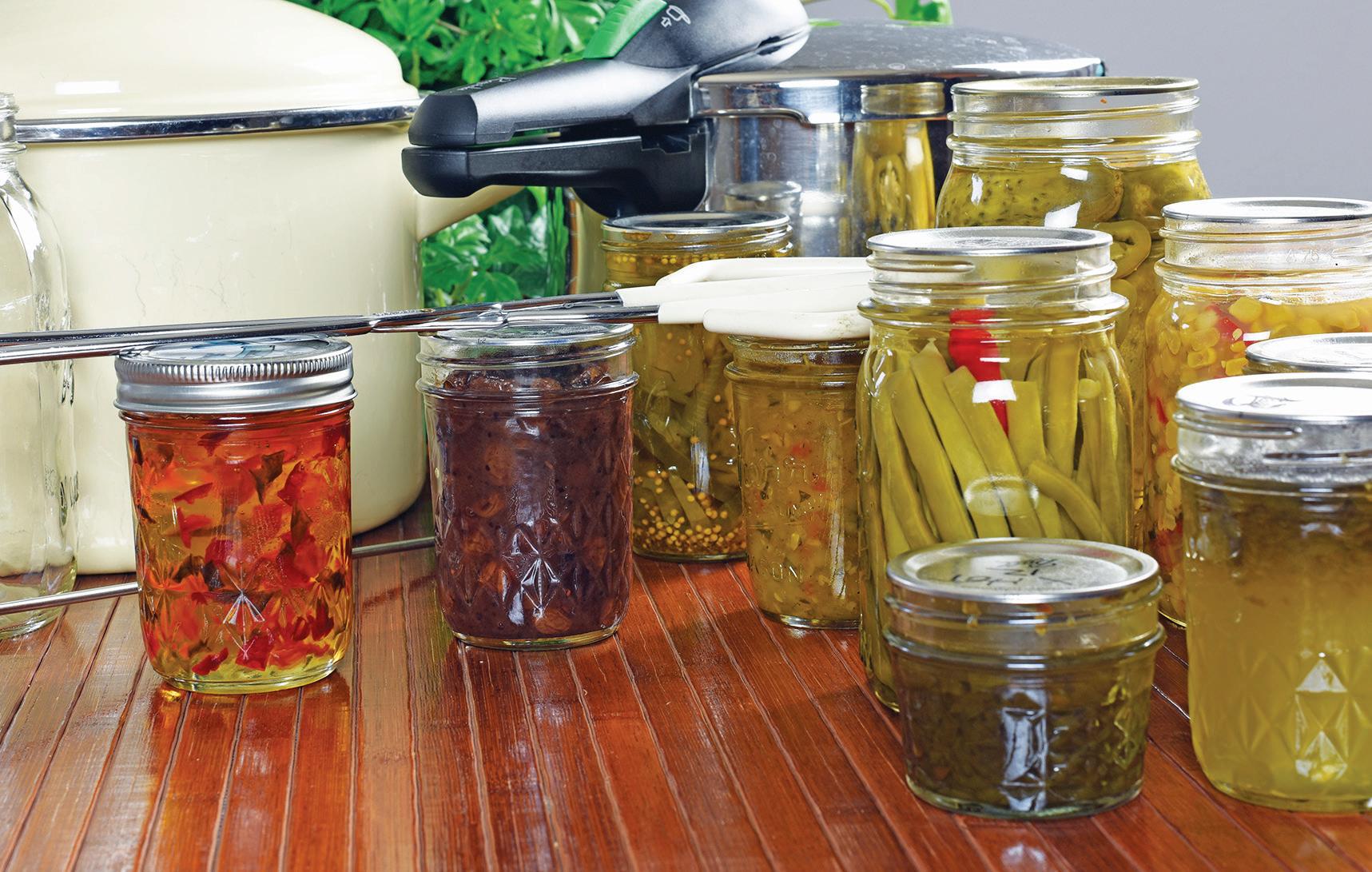
There are so many ways to become more self-sufficient in the kitchen, and you don’t need to be a master chef to take advantage of them. Start with cooking your meals at home instead of eating out. Then, progress to making your own ingredients. Herbal salts are an easy place to begin, as are baking mixes. Making your own extracts is easy, and you can make your own convenience foods for quick family meals
and snacks by simply doubling or tripling any recipe and freezing dinner-sized portions. The next time you mix up cookie dough, roll it into a log and freeze it for the convenience of slice-and-bake cookies.
Preserving food has been at the heart of homesteading for a long time. Stocking your pantry with sauces, pickles, vegetables, fruits, soups, and preserves provides food security and helps you control the amount of preservatives you consume. Water-bath canning is simple to learn, and it’s arguably the homesteading skill that gives you the biggest bang for your buck. Buy produce in bulk at your local farmers market and spend an afternoon canning your favorite recipe. Doing this a few times each season will give you the
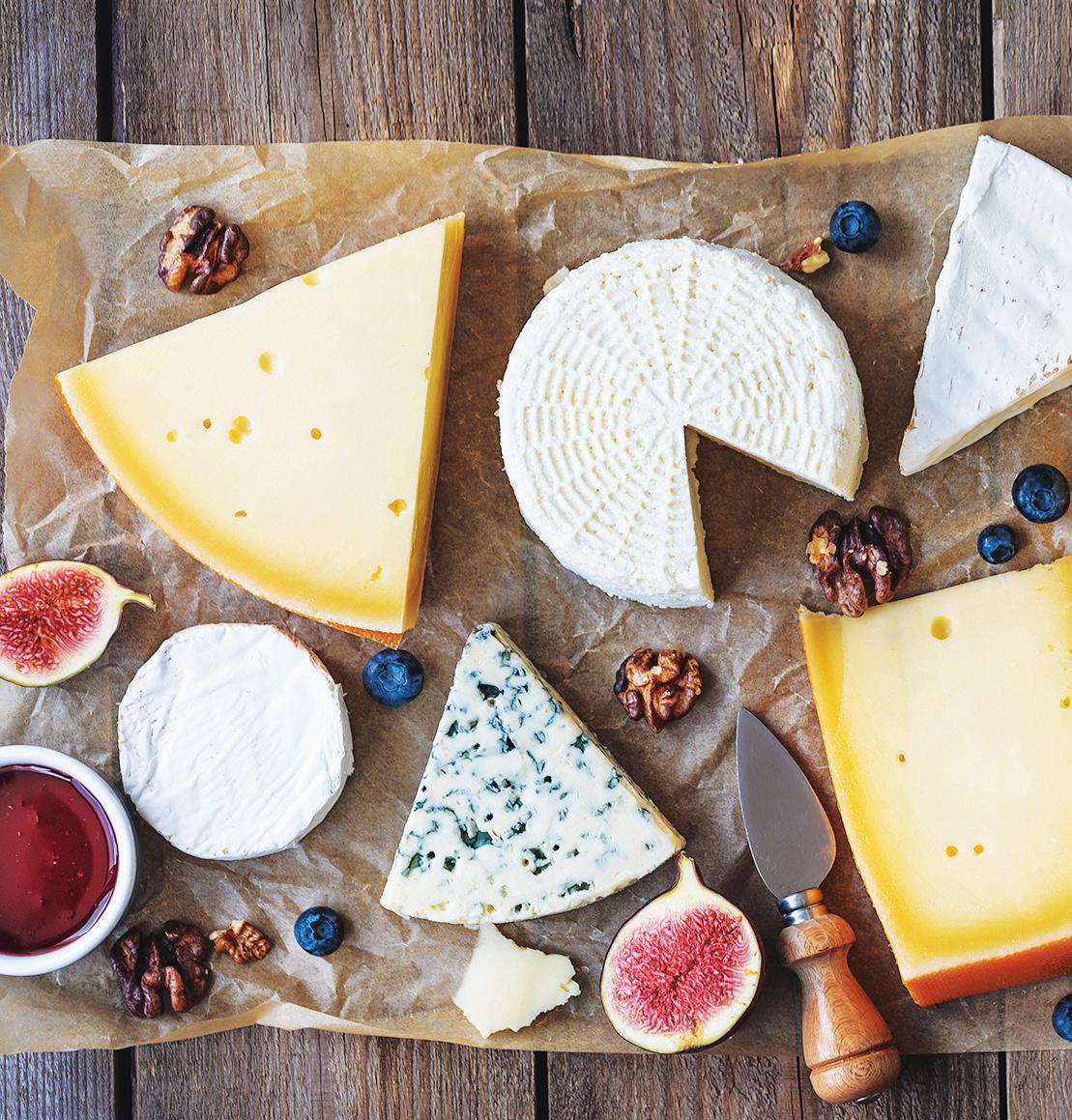
You don’t need acres of land to move toward a self-sufficient lifestyle.
comfort that comes with an unending rotation of your favorite meals.
Dairy is another ingredient close to the homesteader’s heart. Obviously, you can’t have cattle or a herd of milk goats, but you can purchase milk in bulk from local dairy farmers or participate in a local cow or goat share. Once you have access to milk, you can make your own yogurt, cream cheese, cottage cheese, and farmer cheese. Making your own dairy products may seem intimidating, but there isn’t an easier kitchen project. Not only are these products nutritious and simple to make, but they’re also inexpensive. They all call for 2 to 3 basic ingredients.


Growing your own food is an important part of homesteading, but it’s easy to feel discouraged if you’re trying to plan a garden for an apartment. Fortunately, it only takes a little creative thinking. While you won’t be able to grow all your food, you may be able to grow quite a lot.
If you live in an apartment or your HOA doesn’t allow food plots, containers are your best option. Containers come in every size and color, making it easy to grow a variety of produce while maintaining the aesthetics of your neighborhood. Miniature varieties of everything from eggplant to pumpkins are available. Use good-quality potting soil yard dirt
will pack too tightly and strangle the roots and place your pots in an area that gets plenty of sun. Stake or cage tall crops and plants with heavy fruit.

Outside container plants aren’t the only garden you can grow. Leafy greens and herbs are perfect for urban homesteaders. Turn a spare closet into a grow room with a shelf and grow lights. Bathrooms are terrific spaces for humidity-loving plants. Another great option is a countertop aquaponics system, which will allow you to grow greens throughout the year.
You may focus your gardening efforts on herbs that can be used in medicinal

remedies for common health issues. Overthe-counter cold and flu medications have been in short supply recently. Not only that, but there’s a certain confidence in knowing what ingredients are being used and how fresh those ingredients are.
Simple and effective medicines to make at home include oxymels, cough syrups, cough drops, and antacids. Relieve digestive upsets, fevers, and even anxiety with specific herbs steeped into a tea. Candied ginger slices can help with nausea, dizziness, and migraines.
You may find you can’t grow all the ingredients you need to create your homestead apothecary. Shopping your farmers markets, ethically and responsibly foraging for the ingredients, or purchasing from a reputable shop are viable options.
Homesteading is not only about being self-sufficient, but it’s also about taking better care of ourselves, our families, and the Earth. These values make us cognizant of and concerned about the chemicals we’re exposed to daily. Global toxicity may feel too big to tackle, but you can

certainly tackle the toxic chemicals in your personal space.
Truth be told, soap and water will clean most anything. That said, there are homemade, natural alternatives to every cleaning product in your home. Vinegar is a favorite for cleaning. You can easily and inexpensively make cleaning supplies to tackle the tub and toilet, dishes and countertops, furniture, windows, floors, and carpets. You can also make your own liquid or powdered laundry detergent, fabric softener, and scent beads.
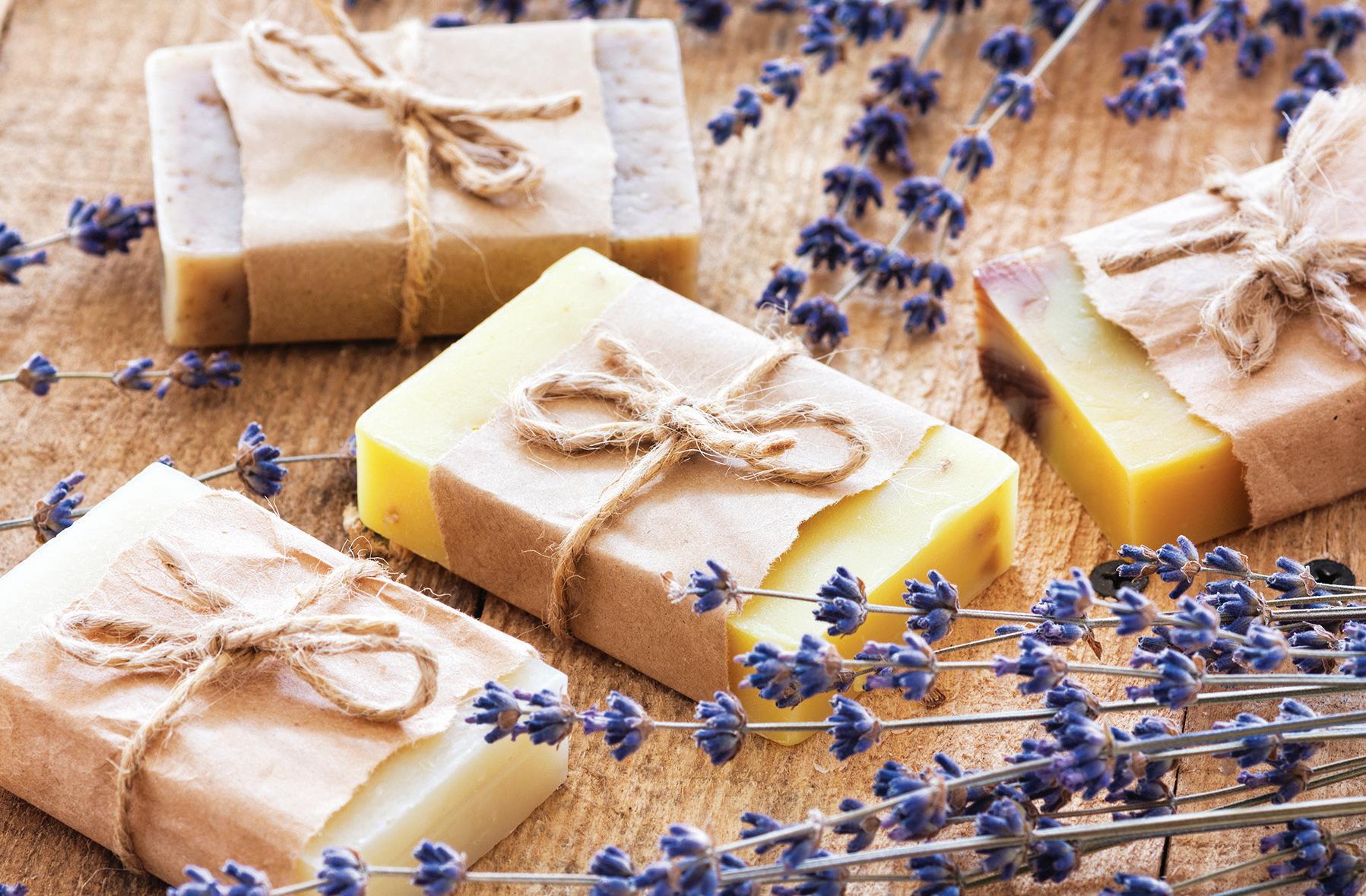
While soap and water will clean most anything, luxurious bath and body products are fun to make, to use, and to give. If you have excess milk, freeze it to use in handmade bath soaps. Successful soapmaking requires carefully following directions and observing safety protocols, but it’s a relatively simple process that can be personalized according to skin type and preferences.
If you’re looking for something slightly less intimidating, you have a lot of choices.
You can start with bath salts and sugars, bath bombs, lotion bars, whipped body butters, and perfumes. These bath and body extras are nice, but you can also make the basics: wet and dry shampoo, hair conditioner and detanglers, deodorant, toothpaste, and mouthwash.
If you live in the city, you’re likely tied to the electric grid. You may not be able to install solar panels on your roof, but you can lessen your dependency on the grid. Assess how efficiently you use electricity and make adjustments as you see fit. Fill the empty space in your freezer with water bottles and clean out the refrigerator to allow air to circulate freely. Let food cool completely before putting it in the fridge. Turn off the heated drying setting on the dishwasher. Wash your laundry with cold water. While a clothesline may be off-limits, consider a drying rack to cut back on electric usage. Quilted curtains keep cold drafts out during winter and protect from heat in summer.
You can harness the power of the sun with a solar USB charger. See how much
Ever since the late 1970s, Ron and Johanna Melchiore have been surviving and thriving off-grid by growing their own food, collecting water, generating all of their electricity from solar and wind, making natural remedies, and so much more. In The Self-Sufficient Backyard: For the Independent Homesteader, they share the homesteading and self-sufficiency knowledge they’ve acquired over 40 years for the first time. With a wealth of information and over 100 practical DIY projects, this is simply a must-have for anyone interested in going off-grid or just saving and making some money on their property. This title is available at Store.MotherEarthNews.com or by calling 800-2343368. Mention promo code MMEPANZ5. Item #10544.



























Organic Gardening Advice: www.MotherEarthNews.com/OrganicGardening/Gardening-Advicezl0z1310zcov





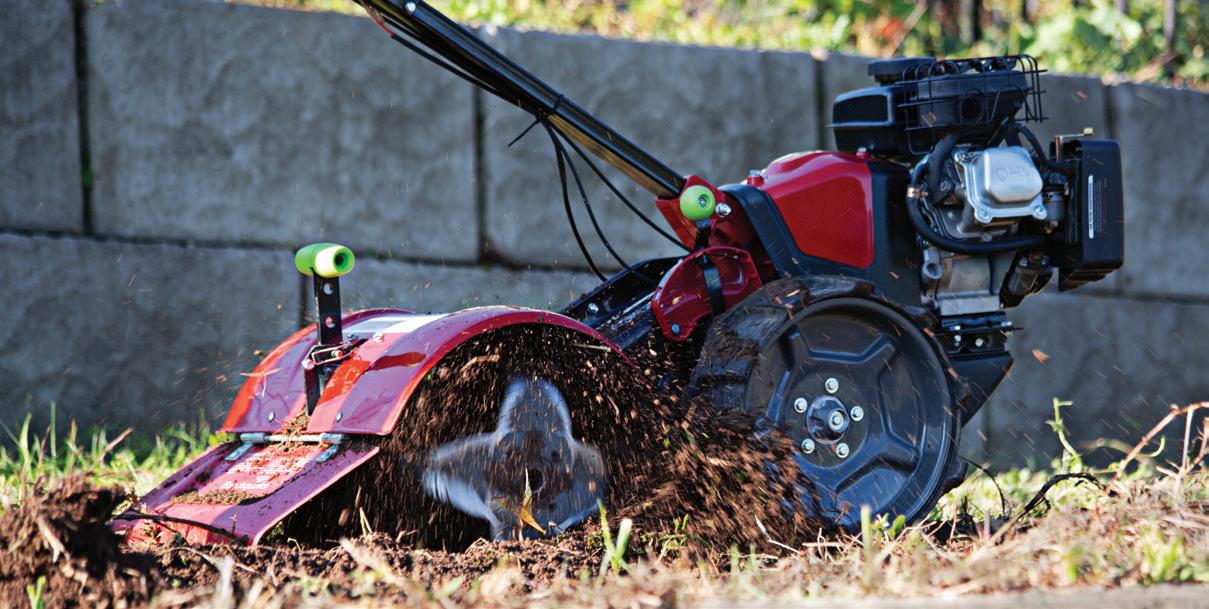
Learn Homesteading Skills: www.MotherEarthNews.com/ Homesteading-And-Livestock/ Homesteading-Skills-zl0z1404zkin


your electric usage decreases just by keep ing your phone, computer, and other devices charged with solar energy. If you want to increase your solar usage, consider a solar “plug and play.” These devices plug your solar panel into a wall outlet, allowing you to take advantage of solar energy throughout your home.

The only limitation for city homesteaders is imagination. You have at least two distinct advantages over traditional homesteaders. First, necessity is the mother of invention and of genius. Narrowing your projects to fit your square footage allows you to become an expert in something you’re truly passionate about. At a time when generalized knowledge is rampant, experts are respected and sought after. Second, and just as important, traditional homesteaders are generally surrounded by people who think like they do. Self-sufficiency is the way of life in rural areas. As a city homesteader, you’re in the unique position to spread the homesteading message and lifestyle to those who may have never learned selfsufficiency. Remember, the best ambassador wins people over through actions and results, not lectures. When people see your balcony garden or when you gift neighbors a basket of handmade bath products, they’ll want to know more about what you do and why you do it.

This beautifully illustrated, appreciative tribute will be welcomed by entomologists, students, and all naturalist readers.


In the early part of the 20th century, New York City was filled with cars. Electric cars. To power the electric cars, there were charging stations. So many charging stations that maps could be purchased or obtained to find them.
According to www.TheHenryFord. org , the website for the Henry Ford Museum in Dearborn, Michigan, “Americans still drove electric cars in the 1920s. The New York Edison Company’s Automobile Bureau published this booklet for electric-car owners. It included a map and address listings for local charging stations in New York City. Stations outside the immediate area, as far as Boston and Philadelphia, were also listed.”
Most people may be surprised to learn that electric cars aren’t a new idea. One hundred years ago, it was actually a close race in some areas as to which way Americans might go with vehicles gas or electric.
Baker Electric made a vehicle that looked like a phone booth with wheels. It may not have looked like much, but it went about 100 miles per charge. That’s about the same distance the Nissan Leaf provided when it debuted in 2010.
Just as quickly as electric cars appeared, they disappeared. They were overtaken by Henry Ford’s assembly line and cheap oil and gas. The combustion engine and a network of filling stations met the country’s needs, so cars that ran on gas won the race to driving dominance.
Before the recent resurgence of electric vehicles, something in between made its debut. The hybrid. Hybrid vehicles became commercially viable in the early 2000s, with the Toyota Prius being one of the leading models available. A hybrid uses both a battery system and a combustion engine, which produces amazing fuel efficiency and reliability.
So, with gas, electric, and hybrid vehicles available, which one makes the most sense to drive? Since I own one of each, I’ve learned that it depends on what meets your needs.
My first car was a ’66 Ford Mustang. Under the hood was a 200-cubic-inch six-cylinder engine. The transmission was standard, and there was no AC. The car was reliable and fairly fuel-efficient for the time (about 20 mpg).
and photo by John Moore All three of the author’s vehicles next to his solar setup.My wants would’ve included air conditioning and a plush interior. But being a teenager and attending school while working as a grocery sacker, needs were what I could afford.

Today, my wife and I own all three types of vehicle a gasoline-powered, four-wheel-drive (4WD) pickup; a hybrid Toyota Prius; and a fully electric Nissan Leaf.

Ford F-150 4WD Truck* $468 $312 (oil and filter changes)
Toyota Prius $244 $202 (oil and filter changes)
Nissan Leaf** $0 $0
*Minimal usage of our truck, mainly on our homestead with occasional trips into town.
**If we paid for our electricity, the average monthly cost at our current rate of 11 cents per kilowatt-hour would be $19 per month. The last maintenance we had was the small battery under the hood that all cars have, which cost $136 in 2019.
Why? Because we live on a 10-acre homestead some distance from many of our destinations. Depending where we’re going, one of the three vehicles is best suited for our trip. Even though each of the vehicles has a purpose, each has pros and cons.
Gas-powered 4WD. If you live in the country, you likely already know the importance of a vehicle with a powerful towing capacity. Tractors and other farm equipment need periodic service
and repair, and that requires a trailer to haul them, which requires a vehicle big enough to pull them. Our Ford F-150 4WD pulls heavy equipment and easily reaches locations on the hilly terrain on our property. The truck also has a large bed, which frequently reduces trips to town to one load, saving time and fuel.
A large truck is reliable for getting through rough terrain to reach distressed animals, carrying materials, or moving
hay bales from pasture to hungry cattle.
When it rains, a big truck with a strong motor offers traction something a hybrid or electric car just can’t provide.
But big trucks carry large price tags and repair bills. With some pickups now reaching over $100,000, price is a big consideration, and repairs aren’t cheap. Of course, a large vehicle is going to cost more to operate, but if you use a truck for your needs and not as a daily driver, you’ll have less wear and tear, lower fuel costs, and, theoretically, a longer vehicle life.
This is where a hybrid can complement owning a pickup. My wife and I were early adopters of both hybrid technology and electric vehicles. Our reasons for owning each were similar but, pardon the pun, fueled by different factors.
Hybrid vehicle. The Toyota Prius debuted in the U.S. in 2001. We purchased our first Prius (we’re now on our fourth) in 2007 when I was working for a company that required me to travel using my own vehicle. I was reimbursed for mileage, but the reimbursement never seemed enough to cover the cost of fuel, much less the maintenance on our gas-powered vehicle.
With the Prius averaging 50 mpg, which was about 30 mpg better than the vehicle we traded in for it, we actually began making money on mileage. It was as if we were renting our car and its driver to my employer. The fact that a Prius is extremely reliable made the savings even more evident.
Purchasing a hybrid also complemented owning our pickup. We had a truck when we needed it and an amazingly fuel-efficient car for both work and personal use. Until 2015, we had a gasoline truck and a hybrid car. That was the year after we made a major change on our homestead that put electric cars front and center for us.
Electric vehicle. In 2014, after becoming tired of unreliable electricity, we decided to install solar power. The twophase project was done over 24 months to take advantage of the then-government tax incentives and stretch out the cost of paying for the installation.
Our goal was to make as much of our own power as possible. Not more than we needed, but what we needed. We didn’t want to go off-grid (too expensive), so we stayed tied to the electrical co-op that serves our area.
We found, after completing the project, that we had plenty of power. Since our provider doesn’t pay us for the extra we make, we began to look for other uses for that power.

This was when an all-electric vehicle came into the picture. On a trip through Oklahoma, we saw a sign at a Nissan dealership that said it now offered electric vehicles. My wife looked up the Nissan Leaf (Tesla was around but was not the force in the industry that it is today), and we discussed the possibility of an electric car for the next several hours.
At the time, the average cost of charging an electric vehicle at home was a fraction of what it cost to fuel a hybrid. Our solar panels were already making the fuel an electric car needed. The same government tax rebates that were offered for solar were also being offered to buy an electric vehicle.
So, we purchased an electric car to go with our hybrid and truck.
Our Nissan Leaf has a range of 100 miles on a charge (newer electric vehicles have up to three times more range), which is more than we need to get to work, church, the grocery store, or other regular destinations.
The electric car we own has zero regular maintenance. Since there’s no oil to change or filters of any kind to replace, electric cars are virtually maintenancefree. When you consider the cost of oil changes, filters, various pumps, timing belts, and other mechanical parts (which eventually fail), not having these expenses quickly adds up.
Our truck and Prius do require oil changes and other maintenance, but since we primarily drive the electric car, those service needs are few and far between. We take the hybrid on longer trips, and drive the truck mainly around the homestead and into town and back. Because we combine the use of the three, we buy gasoline about every 4 to 5 weeks.
The savings on fuel allow us to afford the insurance, but with our primary vehicle being all-electric, what we’re reducing most is our carbon footprint.
Owning a gasoline, hybrid, and electric vehicle isn’t for everyone, but it has been quite strategic on our homestead. One day, I believe most of our vehicles will be electric. But until then, at least for us, three isn’t a crowd.
John Moore is a writer and syndicated newspaper columnist. He and his wife, Terry, live on a 10-acre homestead in East Texas, where they grow much of their food and operate a small hay business. John can be reached through his website at TheCountryWriter.com.
Compact
Tractor Tine Grapple for Compact Tractors Up to 38
• Upper grapple, lower tines have gripping notches to help retain loose materials.



• Greaseable pivot points for long service life.




In the past few years, the canning world has been rocked by a combination of supply-chain shortages and a massive uptick in the number of people interested in home food preservation. The result, has been that supplies, notably lids, have become less available.
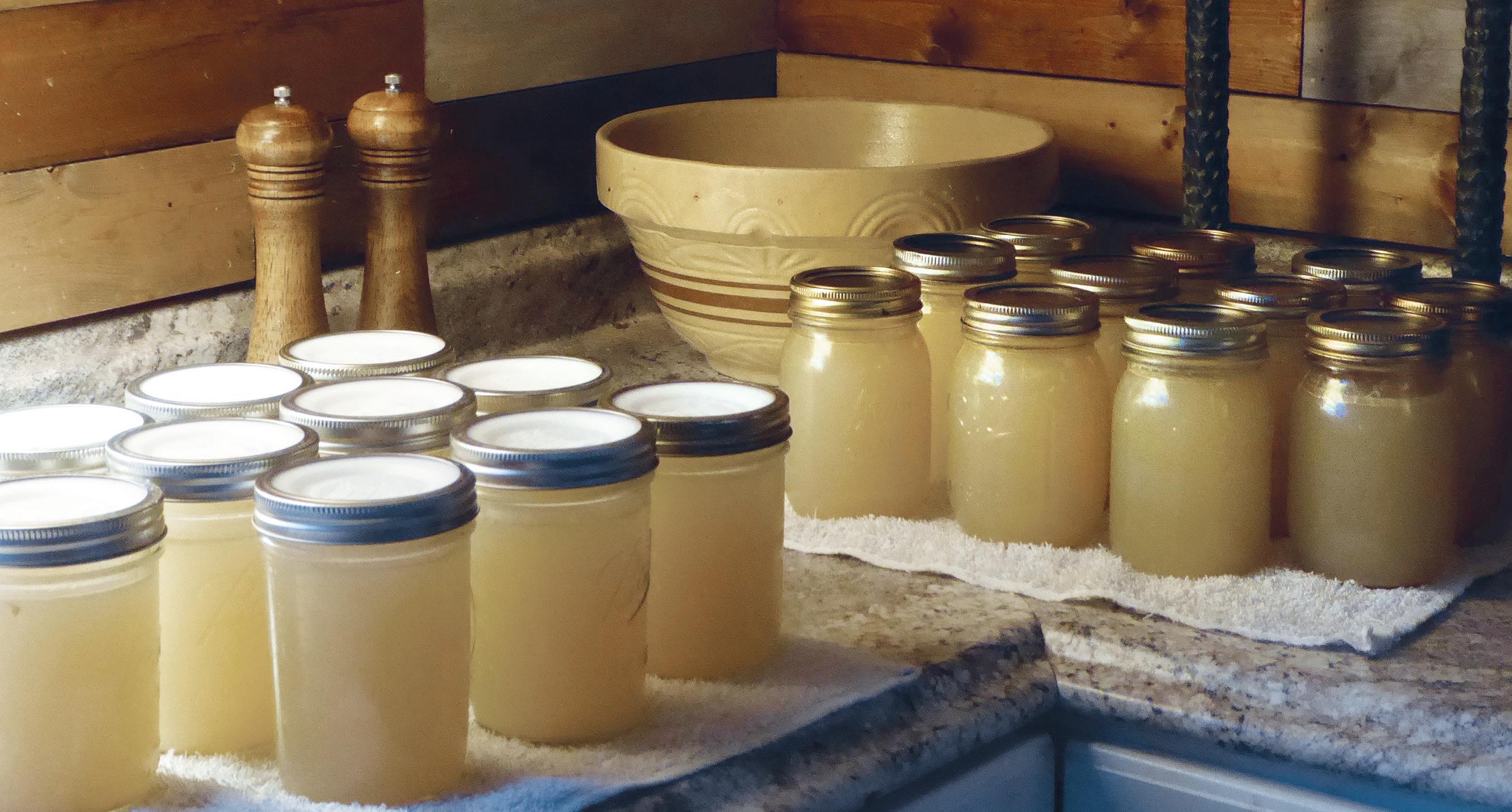
I’ve canned for decades, but always in the back of my mind was a concern: What if I ran out of canning lids? What if none were available at the store? Can disposable canning lids be reused? I’ve had some success with scalding and reusing disposable lids, but can’t recommend this tactic. Disposable lids are manufactured for single use only, and going against manufacturer recommendations is just inviting failure.
Most canners are familiar with the disposable lids put out by Ball or Kerr. However, alternatives now on the market are well worth considering, including reusable lids.
I’ve compared four kinds of lids: Two brands of disposable (Ball/Kerr, Superb) and two reusable (Tattler, Harvest Guard). I put all four through their paces by canning up a large quantity of turkey stock.
I pressure canned my turkey stock (because it has bits of meat in it) in pints at 14 pounds of pressure (for my elevation) for 75 minutes in two batches. I split the first batch between the brands of disposable lids, and the second between the brands of reusable lids.
All the jars sealed. Now, let’s examine the merits of each type of lid.
Ball/Kerr. These are the benchmark for quality lids and have been used by canners for generations. They’re the standard by which all other lids are measured. Made with tin-coated steel with an epoxy coating and plastisol sealant, they’re easy to find, since many stores carry them in their kitchen section. Like everything else, these lids have increased in price through the years, but not unreasonably so.
Ball/Kerr lids are famous for the satisfying “pop” sound they make as they seal, music to the ears of any canner. If correctly processed and then properly stored, the contents of jars sealed with Ball/Kerr lids are safe for years. While not officially recommended, we’ve eaten 10-year-old food without a problem.
Superb. A newcomer to the scene, the request for manufacturing canning lids came to Superb Industries from two separate retailers during the 2020 lid shortage.
During the product-development phase, Superb Industries examined common problems canners face, such as when the lid distorts and doesn’t seal properly (known as “buckling”). After much research and testing, it sent prototype lids to over 400 home canners across the country. The prototypes were tested on more than 18,000 jars of food.
The result: lids with a thicker sealant to accommodate discrepancies in jar rims (some jar rims are wider, some are thinner, some are more rounded). This trademarked “BluSeal” is thicker and softer than the sealant found on Ball/Kerr lids. It also trademarked a name for the sound the lids make when they seal: “Pop”Lok.
When I first received these lids, the two immediate things I noticed were that they’re thicker than Ball/Kerr lids and that the sealant (as the name implies) is a bright blue.
I tested Superb lids several times in both a water bath canner (for applesauce) and a pressure canner (for turkey stock and green beans). In all instances, they’ve lived up to their name.
The first time I pulled jars with Superb lids out of a water bath, I was mildly distressed to see the lids hadn’t yet sealed. I put the jars on a towel and waited. And waited. And waited. Then … thunk One after the other, they all popped and sealed. Interestingly, the “pop” was bass in tone, not treble — a much deeper sound than a standard Ball/ Kerr lid. I suspect the short delay in sealing was due to the thicker nature of the lids. A similar delay with similar results happened from Superb lids coming out of the pressure canner.
I came away incredibly enthusiastic about Superb lids and can recommend them without hesitation. They’re comparable in price to Ball/ Kerr lids (in some instances cheaper, except shipping must be factored in), and they’re, in my opinion, superior in quality.
Modern reusable lids are a two-part deal: a food-grade plastic lid and a foodgrade nitrile rubber gasket. The lids can be used indefinitely; the gaskets are said
to last between 12 and 15 years before they should be replaced.
Tattler. Tattlers are the original reusable lids. Their genesis came in 1976, when the sudden popularity of canning with the back-to-the-land hippies resulted in a severe lid shortage across the country. The Tattler Company responded to this crisis by developing a fully reusable lid, but the product didn’t catch
original Tattler creator started the company. The son had a different vision for marketing the lids, so he started his own business in 2019. They’re of similar quality and price as Tattlers, with an excellent reputation.
Reusable lids (either Tattler or Harvest Guard) have a higher learning curve. The lids and especially the gaskets need to be scalded before use (boil water, turn the heat off, drop the lids and gaskets into the hot water, and leave them in the hot water until they’re ready to put on the jars). After canning, remove the jars from the canner, allow them to “rest” for five minutes, tighten the rings, and then leave the jars alone for about 12 to 18 hours to fully cool. Don’t remove the rings during this cooling period.
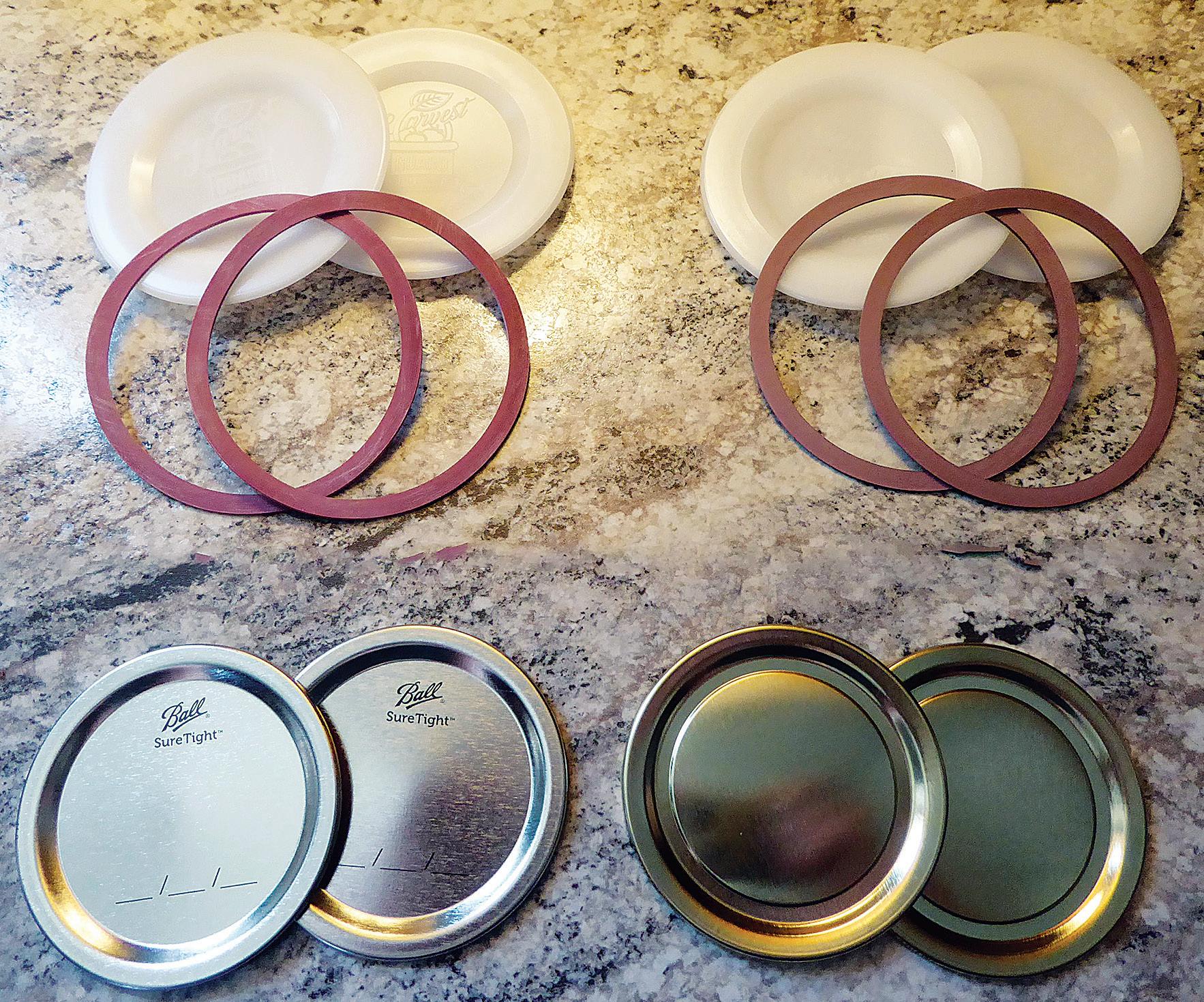
on. The company was resurrected in 2010 and, with the advantage of internet marketing, exploded across the canning world with good reason.
Tattler lids live up to their expectations. I first tried Tattlers in 2010 and was so impressed, I ordered a lifetime supply.
Harvest Guard. Harvest Guard are similar to Tattlers, since the son of the
Only after you remove the rings from the fully cooled jars can you confirm the jars have sealed. I’ve had a higher failure rate with reusable lids than with disposable lids; often, at least one jar per batch fails to seal. This failure rate, however, doesn’t hinder my enthusiasm for the lids, for reasons I’ll explain in a moment.
Disturbingly, for some canners, both Tattler and Harvest Guard lids don’t
I’ve canned for decades, but always in the back of my mind was a concern: What if I ran out of canning lids?Top, from left: Harvest Guard and Tattler reusable lids. Bottom, from left: Ball/Kerr and Superb disposable lids.
“ping” or “pop” when they seal. They can’t; they’re made of rigid plastic, not metal. This incorrectly leads some canners to believe the sealed food isn’t safe. However, I’ve had excellent success with both Tattlers and Harvest Guards, as long as the directions for use are followed exactly.
Reusable lids have a higher up front cost but will last for many years. For people who are frequent canners, this is an enormous advantage.
So, why do I retain my enthusiasm for them if reusable lids are trickier to use, more expensive, and have a higher failure rate?
It’s very simple: I never have to buy canning lids again. I’m a heavy canner and routinely put up hundreds of jars of food each season. For that reason, having enough lids is an enormous concern. With my supply of reusable lids, I never have to worry about shortages again. As someone who prefers canning to all other food-preservation methods, I can’t even begin to express the sense of security having a lifetime supply of canning lids provides. The occasional failure to seal is a small price to pay for this peace of mind.






Out of the four kinds of lids I tested, what are my recommendations?
If you’re an inexperienced canner just learning the particulars of food preservation, begin with disposable types. They’re easier and more dependable. I now prefer the Superb lids to the Ball/ Kerr brand.
For more experienced canners, I can’t recommend the reusable lids highly enough. Accept that they have a learn-

ing curve, and set yourself to learning how they work. Then, you can sit back and relish the thought that these lids will likely last a lifetime. I can unhesitatingly recommend Tattler and Harvest Guard with equal enthusiasm.


Now that I’m well-stocked in both kinds of lids, here’s my canning strategy: If a product is expensive (such as meats), I’ll use disposable lids to ensure all the jars seal. If a product is cheaper and more abundant (such as produce from our garden), I’ll use reusable lids and accept that one or two jars may fail to seal.
Remember, all four of these brands of lids have been through years of testing, tweaking, adjusting, and improving. All four brands perform their function beautifully.
One final thought: For both novice and experienced canners, the quality of home-canned food is generally far superior to highly processed foods available in the grocery store. As we look to a future with rising food prices and shortages, canning skills will be invaluable. Having an abundant supply of jars and lids ensures you’ll be in a better position to keep your pantry stocked in the years ahead.
Patrice Lewis is a wife, mother, homesteader, home-schooler, author, blogger, columnist, and speaker. An advocate of simple living and self-sufficiency, she has practiced and written about self-reliance and preparedness for almost 30 years. Follow her website at www.PatriceLewis.com or her blog at www.Rural-Revolution.com





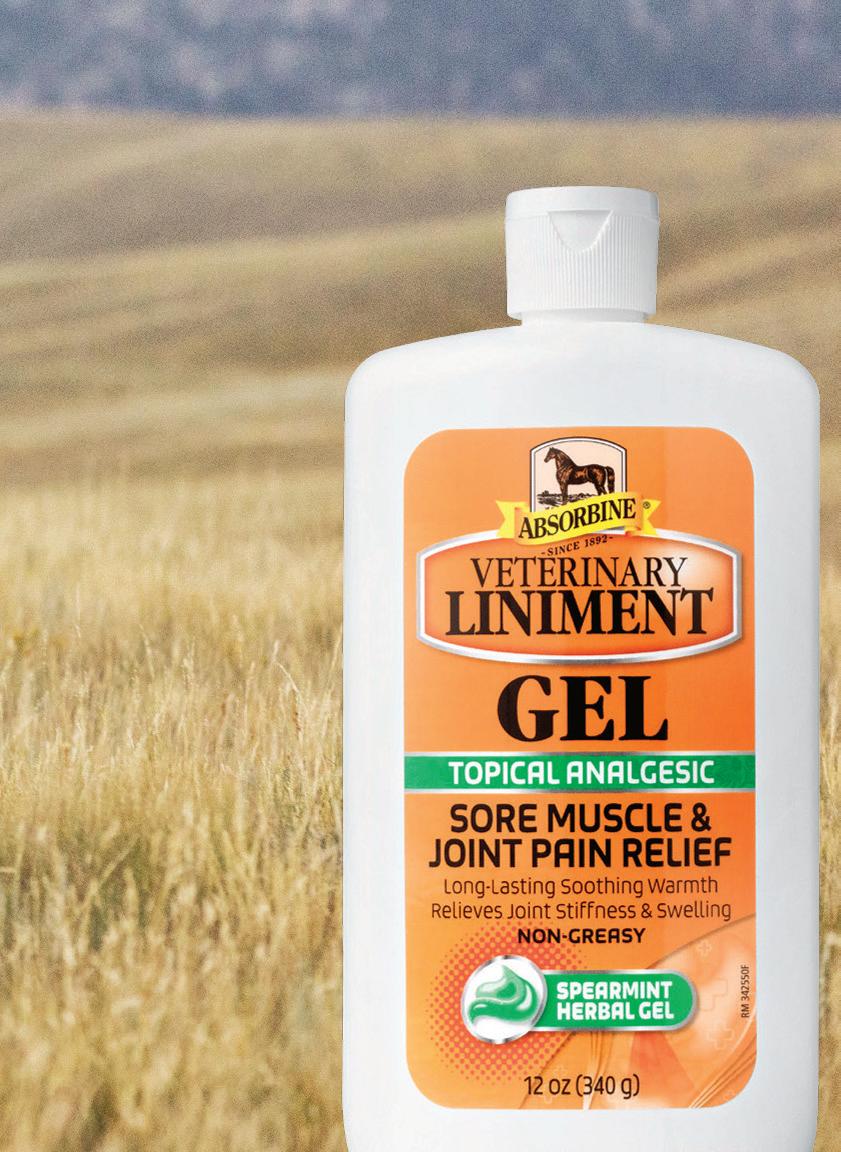

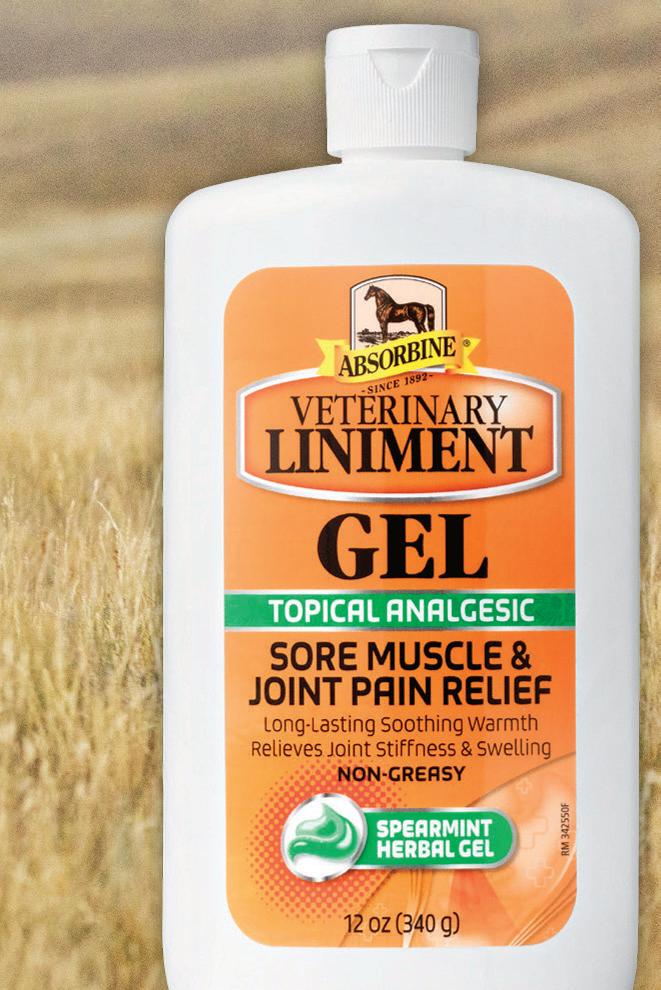



 By Gina Napoli
By Gina Napoli
Whenever I walk through my garden, I find something withered that needs pruning. Removing those “deadheads” makes room for new plant growth. Whether it’s a green weed or a colorful flower, Mother Nature demands constant turnover. Depending on which flowers I harvest,

the deadheads can be fine additives to tea, handmade paper, or a batch of soap. But when the shriveled blooms still look robust with color and I’m feeling crafty, I use them to make biodegradable watercolor paints.
You may think making your own watercolor paints isn’t worth the time and effort. Like other small-price consumables, such as homemade ketchup or butter, it’s easier to buy them at the store. But much like growing your own food, when you create and use your own paints, you become familiar with the ingredients and their origins, making yourself part of the product. Crafting your own watercolor palette and upcycling plant parts that would otherwise be discarded will help connect you to nature’s life cycle, especially if you harvest from your own garden.
The process will also connect you to peoples who came before. Plant-based textile dyes and inks have a long and storied history. Back before you could trek to the craft store for art supplies, every culture in every time period had methods of extracting pigments and dyes from things they found in nature. Native Americans made yellow paint from buffalo organs. Early Mayans made their trademark blue from indigo plants, clay, and resin. And many cultures, past and present, feature cochineal beetles in their red dyes for food and clothing (Red 4).
The process detailed in this article comes from painter and illustrator Janice Stefko, who since 2019 has taught students how to create their own natural watercolor paints through a class called Blooms to Brushstrokes. Her classroom in Chautauqua Institution’s Pier Building, nestled between
Upcycle deadheaded flower parts into beautiful, natural watercolor paints that are a cinch to make.
the community rain gardens and the shores of upstate New York’s Chautauqua Lake (Zone 5b), provides an idyllic setting to learn this craft. Not only is the building surrounded with colorful flowers, but the afternoon and evening sun also turns the building into a natural oven, providing the heat needed for the chemical change necessary for the recipe to work.
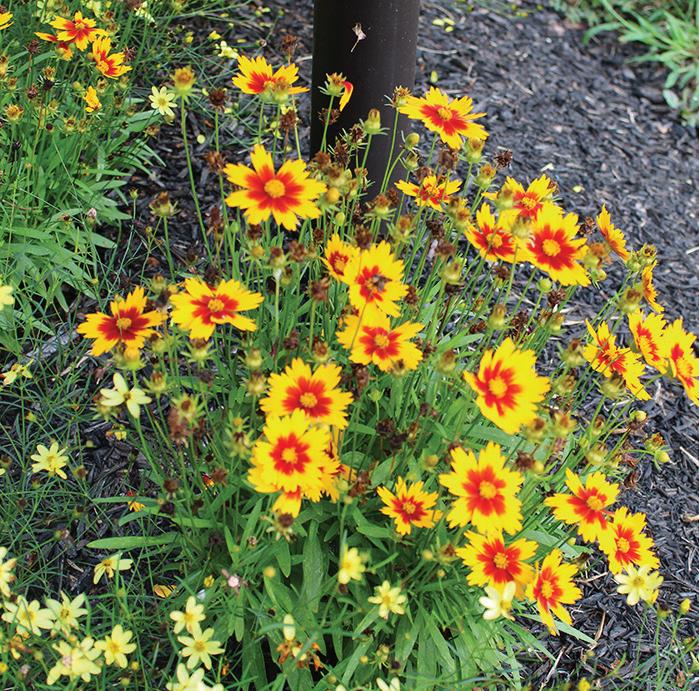


Stefko’s journey into floral watercolors started in 2008 when she was in the garden with her children, showing them how to deadhead wilted flowers to make room for new plant growth. One of the blooms in her warm hand leeched its vibrant magenta color onto her palm. Although that was the “Aha!” moment that lit a fire inside her,

she found very little information about how to create botanical paints appropriate as a fine art medium.
During the next several years, Stefko researched historical documents, and she performed her own pigment-extraction experiments. Her tests included 20 different flowers, 12 painting substrates (including linen, cotton, cellulose, and rice papers), and several different extraction and preservation techniques. The process described on Page 60 is her most successful test case, which allowed her to reliably and repeatedly extract pigments from flowers to use as paint.
“Because I believe in this process so much and how it truly reconnects our souls
with nature, at the same time allowing us to be joyful artists and stewards of the earth, I looked for ways to share the process with others,” Stefko says. The paints have the additional benefit of being free of toxins.
You can easily create your own botanical paints using easy-to-find kitchen equipment and just a few inexpensive ingredients.

The process starts with foraging. Late summer is an ideal time, when summer floral gardens begin to fade, but if you can harvest even a small handful of blooms during other seasons, you’ll have enough


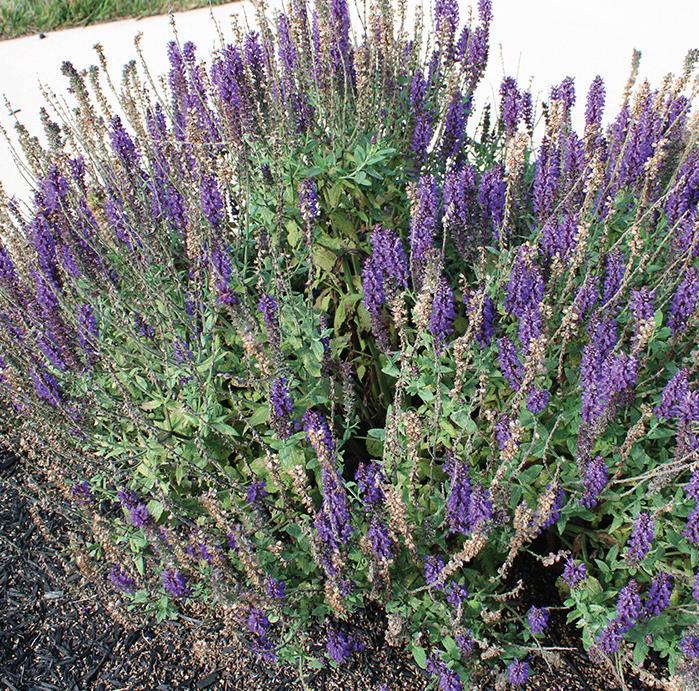
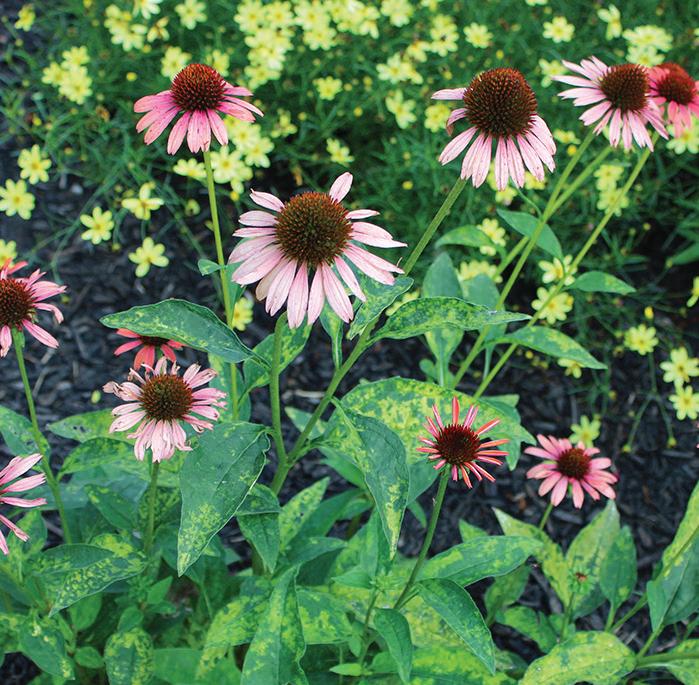
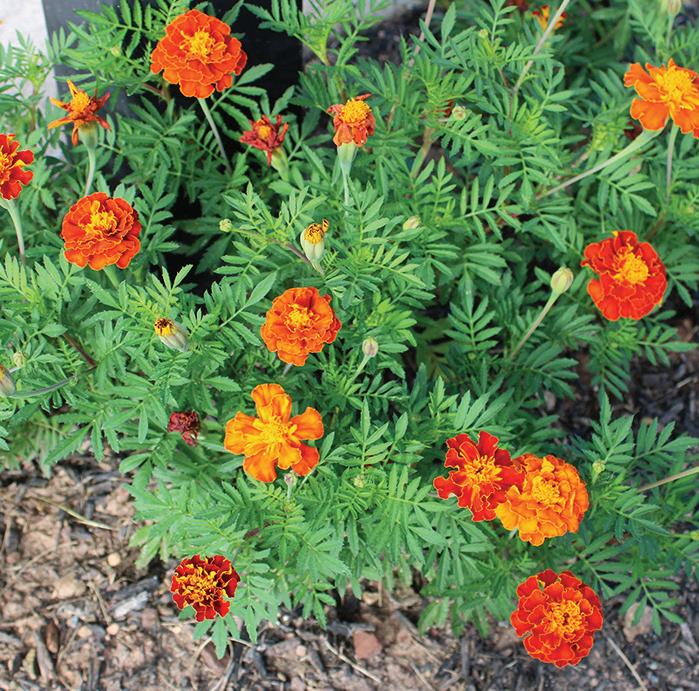
to make paint. Edible flowers are best because of their high flavonoid content and lack of toxins. If you aren’t sure if a flower is edible, and therefore suitable for paint, take a moment to positively identify it before taking a chance. Plenty of apps, books, and online resources exist to help you identify plants.
Harvest only dead flowers. Although you’ll find richer colors in live flowers, there’s more than enough pigment in deadheaded flowers to make the recipe work. Leave the live flowers for the pollinators.
When you pull off the dead parts, try to leave three-quarters of the plant intact so
the offshoot won’t have trouble regenerating. You can also look for fallen blossoms on the ground. Generally, the more robust your flowers, the richer your paint will look. Gather about a handful of each color.
Avoid white flowers; extracting white pigment from flower petals won’t yield white paint. Use the absence of color on the page to create white. Also, be careful of thorns, toxins, and insects while harvesting.
In much the same way our ancestors extracted a variety of beautiful colors
from their immediate surroundings, this process of making homemade watercolor paints will test your foraging abilities, and it’ll take time. The all-important element of time is what makes this particular process different from other paint-creation methods that require heating through artificial means.
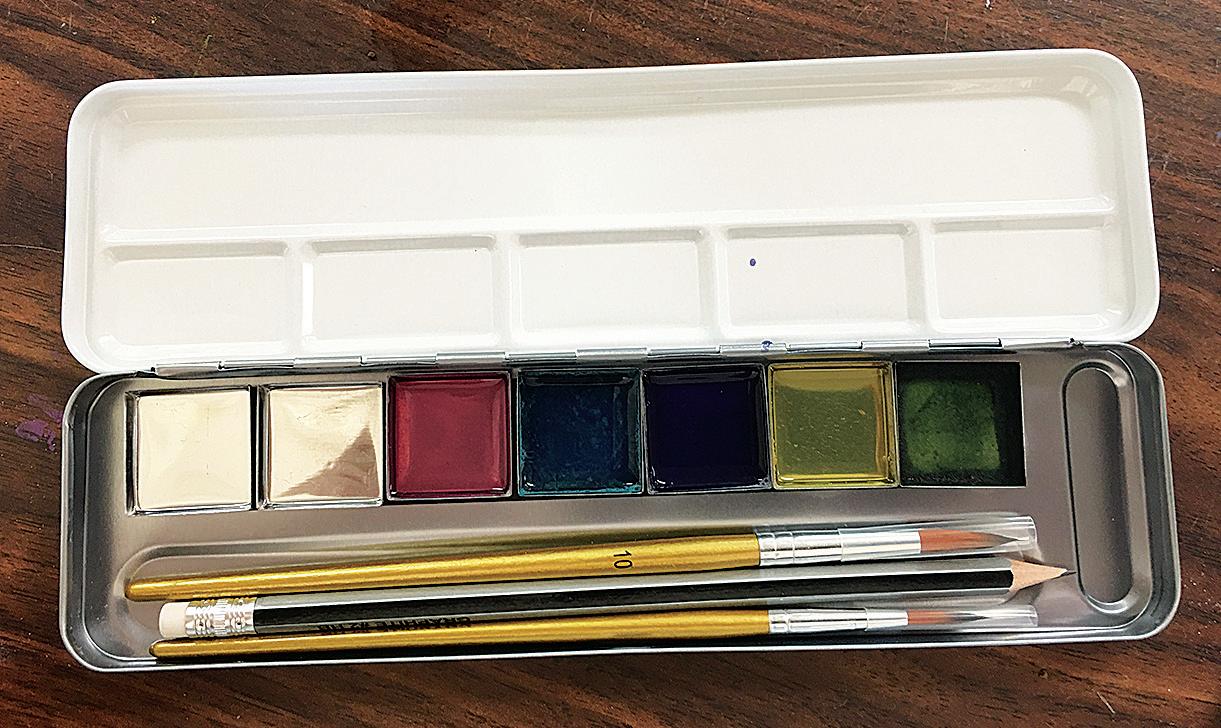
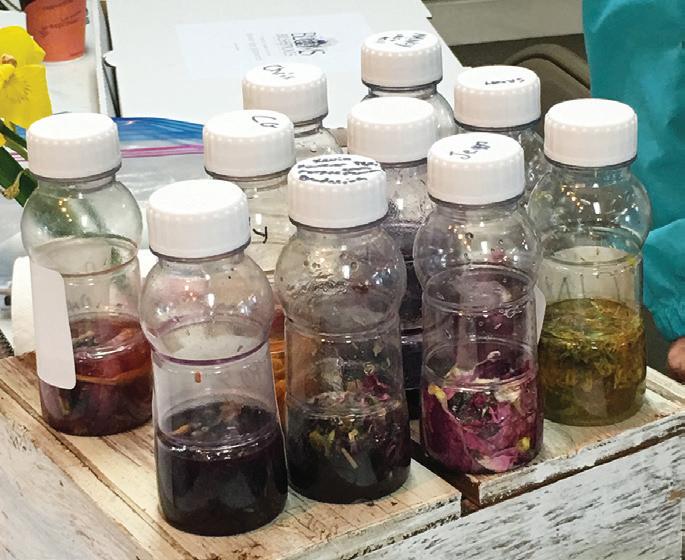
“Trying to force the process with excessive heat can result in saddened colors,” Stefko says. “I’ve found that allowing the pigments to quietly seep from the petals allows for a truer color.” This technique honors the process of nature, taking its due course without hurrying.
These paints contain the flavonoids, anthocyanins, carotenoids, and chlorophylls extracted from the deadheaded organic matter. The result is a richly colorful watercolor paint that smells good too.
Repeat this process for different colored flowers to make a full set of paints. If you decide to mix flowers, use the same principles as mixing colors on the color wheel. Red and blue make purple, yellow and red make orange, and so on. If you mix too many contrasting flower colors, the result will likely be as brown as the community paint rinse cup.
Trying to create an exact color from floral leftovers takes trial and error. Each experiment is a new surprise. Stefko says, “If you’re looking for an exact science with a repeatable result, you won’t find it in this process.”
Note: Not only is alum great for gardening with certain live plants, but it’s also a common mordant used to dye fabrics, helping to disperse the pigments and attach them to the fibers. Alum is generally considered to be non-irritating to most people.
Gum arabic is harvested from species of Acacia trees. It’s been used for centuries as a binder in the production of watercolors, enriching the texture and brightness of the colors. You’ll use powdered gum arabic for this project, but you can also purchase it as bottled liquid and use it to paint.
Tools and Materials
• Empty plastic water bottles with caps, 1 per color
• Strainer
• Large measuring cup or other container with spout
• Watercolor palettes (if not available, a container with a shallow cavity will work; try a contact lens case or the lid of a pill bottle)
• Toothpick
• Foraged flowers, separated by color
• Warm water
• 1⁄2 teaspoon alum powder
• Gum arabic powder
1 Pull any green stems and leaves off your foraged buds. Set the green plant matter aside. You’ll use only the colorful bits for this recipe.
2 Add the colorful buds to a water bottle. Pour enough warm water into the bottle to cover the buds.
3 Add 1⁄2 teaspoon alum powder to the bottle, and, with the bottle cap on, shake the bottle for several minutes. Set the bottle in a warm location for 48 hours.
4 After 48 hours have passed, set the strainer over the measuring cup. Then, pour the flowers and water through the strainer.
5 Rinse the water bottle, and then pour the colored water back into the rinsed water bottle.
6 Sprinkle gum arabic powder into the palette. Add droplets of colored water to the powder in a 1-to-1 ratio with the gum arabic. Mix with a toothpick. If the mixture feels thin, add more powder. If it gets too clumpy, add a little colored water.
7 Let paint sit for 48 hours or more to solidify.
See #18 on page 86



 By Christine Stoner
By Christine Stoner
Whether you’re clearing weeds from your vegetable plot, pruning perennials, or potting herbs for your kitchen window, precautions will ensure a successful experience. Any gardener with a season under their belt can attest to the importance of planning and proper protection for the variety of outdoor unknowns. I’ve learned the hard way from many hidden gardening hazards, and I’m not the only one.
A well-kept lawn or garden means spending time in the sun. Agricultural workers and farmers have higher rates of skin cancer. According to the Skin Cancer Foundation, “One in five Americans will develop skin cancer by the age of 70. [And] having five or more sunburns doubles your risk for melanoma.” Melanoma is when pigment-producing cells grow out of control and, unless caught early, can spread to other parts of the body.
Wearing and reapplying sunscreen with a high SPF count is imperative, but ideally, leaving less skin exposed to direct sun is
the way to go. Long, lightweight sleeves, pants, and a wide-brim hat are essential. Your ears and nose often get missed when lathering on the SPF, and these are prime trouble areas for sunburns. I use a washable cotton bucket hat that’s fully lined and adjusts to fit any head size. It comes in beautiful heirloom garden prints and is incredibly comfortable. The 31⁄2-inch brim keeps my face and neck shaded perfectly, and the construction is sturdy yet cool in the summer heat. This product, produced by Womanswork, is “designed for the way women work.”
The Womanswork Digger Garden Gloves keep my hands protected with an unmatched fit. The company celebrates 35-plus years as a woman-owned business and produces a variety of products designed to fit women not just downsized versions of a mens fit. I’m selective about the type of gardening gloves I use, and I never work without them. A good set of gloves protects me from cuts by hidden sharp debris in the soil (such as broken glass), and they’re vital for pruning roses. Often, sunscreen rubs off when planting and working in moist soil conditions, so we
forget about sun protection. Plus, gloves save me time scrubbing my nails and cuticles at the end of the day. The Digger gloves are doubly reinforced at the fingertips and have a padded palm that prevents calluses when working with tools. The snug fit and Velcro cuff prevent soil from getting inside, and they hold up after repeated washes. My favorite thing about these gloves is the thoughtful brow wipe on the thumb for those extra-sweaty chores.
A good set of gloves protects you from plant irritants as well. Obviously, avoid poison ivy, sumac, and oak. Other plants that can cause skin irritation include monkshood (Aconitum napellus), chile and sweet pepper (Capsicum annuum), hyacinth, chrysanthemum, iris, lobelia, narcissus, stinging nettle, weeping fig (Ficus benjamina), parsnip, philodendron, ragweed, giant hogweed, and oleander. Reactions range from mild to severe, and treatments vary per contact. If you suspect a plant-related rash, it’s important to catch it early and research treatment for the specific irritant or seek medical attention. Extended contact with damp soil can over-dry your skin or release mold spores and pollen; keep your hands covered and wash them often. Sturdy gloves protect against harsh fertilizers as well. Just be cautious not to accidentally transfer irritants to your face and eyes while gardening, and flush your eyes immediately if you suspect a foreign particle. If exposed to a potentially harmful pollen or sap, shower immediately and wash everything you wore while working.

Stings, ticks, and insect bites will also put a damper on a beautiful gardening day. Many bug sprays contain a neurotoxin called permethrin that’s harmful to aquatic life, pets, and bees. This toxin can cause life-threatening breathing issues if inhaled and also kills brain cells. Insect bites can transmit illnesses, such as Lyme disease, West Nile virus, and the Zika virus, among a host of other unpleasant conditions. Research your repellant choice to choose the best option for your family and the environment. V WWW.MotherEarthNews.com for excellent articles to help you avoid pests, including “How to Get Rid of Chiggers,” and “Natural Insect Repellants,” and one in this issue on herbal pest control for pets (see Page 26). If interested in making your own concoctions, grab the book Naturally Bug-Free by Stephanie L. Tourles and experiment with 75 nontoxic recipes for repelling mosquitos, ticks, fleas, ants, moths, and other insects. If you prefer a ready-made spray, ditch the itch and protect yourself naturally for hours with 100% Organic Mosquito Repellant. This lemon-scented spray is available in the M
Store, and ingredients include a blend of four essential
oils to keep mosquitos from spoiling your outdoor activities.

I routinely burn citronella candles, oil, and incense to make my porch more enjoyable. Additionally, a variety of plants keep the pests away. You can find full articles focusing on this topic on our website, but some of my favorites are lavender, marigold, citronella grass, catmint, rosemary, basil, citronella-scented geranium, bee balm, mint, sage, and allium. Keep an eye out for places where water collects and stagnates. Forgotten stacks of containers and water features without circulation can become prime breeding grounds for mosquitos.
Muscle strains, and a sore back and knees, are common results of overexertion in the garden. It’s always surprising how much pots weigh once filled and watered! I use a furniture dolly to move large containers or landscape elements that I can’t get into my wheelbarrow. Additionally, work smarter — not harder — with solid hand tools that take a lot of pressure without breaking in heavy clay and rocks. The 3-Tine Cultivator by DeWitt is handforged to finish and is excellent for tidying fall beds or prepping for spring planting. The Store has a line of these unyielding, sustainably made hand tools, including cultivators, weeders, and trowels that are aggressive, sharp, and strong. You won’t regret adding these tools to your gardening arsenal.
Lastly, high temperatures can lead to heat stress. Educate yourself on the early signs and symptoms of heat stroke and heat exhaustion, and stay safe with proper hydration. Avoid outdoor work from 10 a.m. to 2 p.m., when the sun is strongest, and opt for early morning or evening chores. Take regular breaks and drink plenty of water.
Preparation and planning will lead to a successful season, and the M E N Store has you covered for a safe and enjoyable growing experience.
Visit the MOTHER EARTH NEWS Store, Store.MotherEarthNews. com, to order the Womanswork Digger Garden Gloves, 100% Organic Mosquito Repellent, DeWitt 3-Tine Cultivator, and the Cotton Sun Hat in various attractive patterns. — MOTHER



Welcome to our series answering reader questions on how to cut the utility company cord. Hoss Boyd is founder, president, and CEO of TeraVolt Energy. Kerena Reese is an independent engineer. They’re recognized solar and energy-storage experts. Learn more about TeraVolt Energy at http://TVNRG.com.
How do I know I’m dealing with a reputable solar installation company?
Les NebraskaSince I began as an apprentice electrician in the 1960s, the National Electrical Code has grown from a pocket handbook to a large manual with rules for solar and energy-storage installations. Here in Texas, as well as in other parts of the country, solar and energy storage is defined as electrical work, and you must be a licensed electrical contractor to “install or offer to install” electrical work. Although it varies by state and locale, the first indication a solar company is legitimate (but not necessarily reputable) is possession of a license.
To participate in utility companies’ solar rebate programs in the early days, it was a given that you had to be a licensed electrical contractor, but you also had to have a solar installation professional certificate (or be working toward getting one) from the North American Board of Certified Energy Practitioners (NABCEP). I received certification after installing three solar projects, gaining several years of experience, and passing the most difficult test I’ve ever taken. Always look for the NABCEP Certification seal. For a directory of certified solar installation professionals, visit www.NABCEP.org.

Many installation companies will be out of business before the end of their first year, and most of the remaining ones will be gone in five. It’s a good sign when a company is still around after five years. That doesn’t make them superior, though, so you should definitely seek referrals. Note that a reliable and highly qualified installer doesn’t compete on price.
Because I was bothered by seeing so many bad home installations, I wrote a short guide called The Solar Powered Home, available as a Kindle edition on www.Amazon.com. It includes lots of good information for homeowners seeking a solar contractor.
Hoss BoydA reputable solar company will provide quality equipment, professional technique, and guaranteed customer satisfaction. A long chain of command can corrupt a well-intentioned business model. Not all large corporations are bad, but I do question how much a company is concerned for my interests when it’s juggling dozens or hundreds of other customers at the same time.
Company history also matters. For example, TeraVolt Energy has been around for more than 20 years, including its predecessor companies, and that alone proves capability and survival. Also look for installation companies that don’t risk doing business with startup contractors. Ask for a list of their preferred subcontractors and research them.
Another good indicator is the amount of time a company is willing to spend designing a unique system suited to each customer’s needs. Cookie-cutter solar installations often miss the mark. Just as each household or business is different from the next, energy needs and budgets vary from customer to customer.
Asking questions and holding conversations with reps from a solar company you’re considering is a great way to vet them. Do your own advance research before speaking to a licensed installer to ensure you won’t be scammed or skimped.
Kerena Reese
We’ll do our best to answer your questions on energy subjects in upcoming issues. Email them to Letters@MotherEarthNews. com with “Energy Q&A” in the subject line.
May all your days be filled with sunshine even when it rains!
There
is no better way to heat with wood.
• Best e ciency, highest Btu rating - At 92% overall e ciency (LHV), the Classic Edge 960 HDX provides the highest e ciency of EPA-certi ed stick wood burning appliances and delivers the highest Btu rating of cord wood appliances, with a rating of 400,000 Btu/hr.**

• Easiest to operate - Industry-exclusive FireStar® controller takes all the worry and guesswork out of wood heating. Works with any heating system and any rewood.



Accumulating enough cream to fill your butter churn can take time. Your yield will vary depending on the season and your herd size, so you may want to wait until you have larger amounts of cream. Or, maybe you should’ve made butter before now and just didn’t get to it. Cream will probably sour as it ages, even if it’s been properly refrigerated. Though it’ll still churn properly, aged cream may produce butter with a sourer taste than your family likes.
What steps can you take to prevent this?
For our grass-fed Jerseys, a treat of ground oats at milking time helps boost cream production, which also shortens the creamcollecting period. Additionally, the soured flavor of the cream is due to the production of acid. Baking soda is a base, so you can use it to cut down on aged cream’s acidic tang. You can play around a bit with quantities, but as a starting point, I’ve found 1 teaspoon baking soda per 1 gallon cream to be effective. If only a portion of your cream has soured, add baking soda only to the soured part before churning; don’t include all the cream in your calculations on how much baking soda to add. Your freshest cream must be older than 24 hours to churn properly, and your cream must be at the correct temperature to churn and produce butter of a consistency that’s easily washed (which further ensures a good flavor). Though some people report the ideal temperature as between 55 and 65 degrees
Fahrenheit, I find 56 to 60 degrees produces the best results and the quickest churn. I’ve had 2 gallons of cream produce lovely yellow butter in only eight minutes! The action of the agitator will raise the temperature of cream during a churn by a few degrees. Also, a warm kitchen will significantly increase cream temperature as it’s being churned, so you can probably start with cream that’s a little on the cool side.
And now, with your homemade butter and sour cream, you might want to make some Walnut Frosties Cookies from the recipe box of my great-great-grandmother. The topping melts as the cookies bake, creating a delicious candy-like layer. Yield: 2 dozen.
Walnut Frosties Cookies
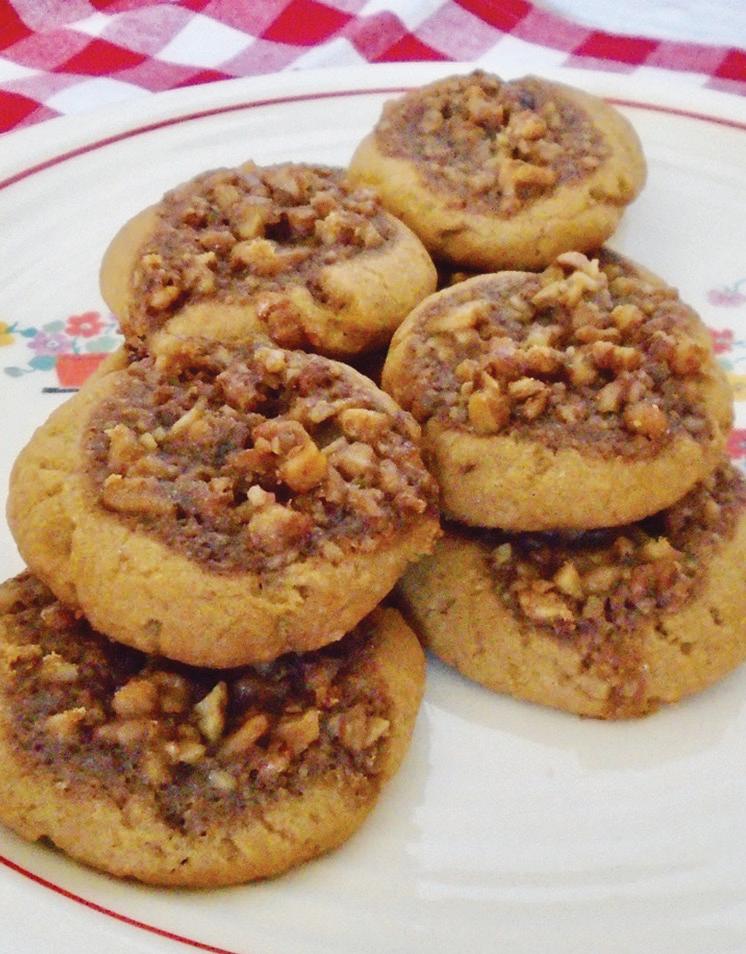
TOPPING
• 3⁄4 cup chopped walnuts
• 1⁄3 cup brown sugar
• 1⁄4 cup sour cream
• Dash of salt
COOKIES
• 1⁄2 cup butter
• 1 cup brown sugar
• 1 egg
• 1 teaspoon vanilla extract
• 1⁄2 teaspoon maple extract, optional
• 2 cups all-purpose flour
• 1⁄2 teaspoon baking soda
• 1⁄2 teaspoon salt
Here’s a fun little experiment I’ve been working on. Two years ago, I modified a small chest freezer to be a root cellar. I ensured proper air exchange by installing one PVC pipe that enters the freezer high and another PVC pipe that enters the box low, just like with a regular fullsized root cellar. Then, I buried the modified chest freezer in dirt up to its lid.

That first fall, I added drain holes, a layer of gravel, and a foot of coarse sand to the interior of the freezer. I took cuttings from my perennial kale and stuck them in the wet sand, and then dusted the top of the sand with a small amount of rooting hormone. When the

Preheat oven to 350 degrees Fahrenheit. Combine topping ingredients and set aside. Prepare cookie dough by creaming butter and sugar. Next, add egg and extracts and beat well. Combine dry ingredients separately, then add to the dough and mix just until combined. Form dough into 1-inch balls and place on ungreased baking sheets. Make depressions in tops of cookies and fill each with about a teaspoon of topping. Bake for 10 minutes, or until lightly browned.
Leah Smith Nashville, Michigantemperature got above freezing, I propped open the freezer lid. When the temperatures dropped below freezing, I closed the top. At one point during winter, the freezer lid was closed and under 5 inches of snow. In this way, I was able to harvest fresh kale leaves throughout winter.
The second fall, I rescued 200 pounds of potatoes from a dumpster, put them in my ground fridge, and layered them with sand. Six months later, I still had potatoes. This experiment went so well that I had to give them away because I couldn’t eat them all.
John Holzwart Sheboygan, WisconsinMy large flowerpots can become too heavy to move once filled. So, I fill them partially. I place plastic milk jugs with the lids left on in the bottom of my flowerpots. Then, I add a layer of straw, filling in around the jugs. On top of this, I place a small layer of potting soil in which I plant my flowers, filling in with dirt as needed.
In fall, I remove the dirt and composted straw to use as filler in areas that need it, and recycle the jugs.
Carol Wood Chattaroy, WashingtonBait is often snatched away from mousetraps without the culprits being caught. My solution is to mix 2 drops of pancake syrup and 1 drop of chocolate syrup on a plate, and microwave for 8 to 12 seconds. I quickly scoop this onto the trap, where it soon hardens. I’ve caught eight mice on the same bait, because they smell it but can’t get it off.
Mary Martin Rexburg, IdahoMy stored keeper apples used to become a little soft and even a little wrinkly by mid-to-late winter until I learned this storage method. I line a cardboard box or wooden crate with a common garbage bag and put the apples in the bag. Then, I close up the bag and store the apples in a refrigerator-cold place, taking fruit from the bag as needed and closing it up again afterward. I’ve found that the bag helps the apples retain moisture, whereas storing them on cardboard or wood seems to leach more moisture from them.
If placed in the bag dry, the apples don’t rot. Even in early spring, my stored apples look, feel, and taste as they did when I first put them in the bag.
 Jean Handwerk Colville, Washington
Jean Handwerk Colville, Washington
I’ve discovered how to make plant tags with the aluminum pull-tab lids found on cans. They already have a ring attached to serve as a fastener. To get rid of the sharp lid edges, I carefully fold in opposing edges of
When our still-under-warranty washing machine went on the fritz, I decided to do our laundry by hand until someone could come out to fix it, because we live in a semi-remote area. This off-grid system cost less than $25 for three 5-gallon plastic buckets, one bucket lid, and a toilet plunger.
We drilled multiple small drainage holes into one bucket, a single large drainage hole into another bucket, and left the third bucket as purchased, with no holes. My husband ground off the lock on the lid to make it easier to pull on and off. He also drilled large holes into the sides of the toilet plunger to allow water to flow during the agitation.

I do the laundry inside our shower stall so the water has a convenient place to drain. First, I take up the bucket without holes and add water and soap, then the dirty laundry but not too much, so I have room to agitate the items. Next, I agitate the clothes by plunging with the modified
the lid so they meet in the middle on the underside, turning the lid from a circular shape to an oblong. Then, I gently tap the lid with a hammer to flatten it. Finally, I turn the pull tab out and away from the lid so it’s on the same plane as the rest of the lid.
toilet plunger. Then, I let the clothes sit for a while before plunging again, and, finally, repeating the process a third time.
I then dump the wash water, replace it with rinse water, and plunge to remove any soap residue. I usually add vinegar as a fabric softener at this stage. I keep this water in the bucket for later use and transfer the clothing to the bucket with multiple holes in the bottom. I place this bucket on top of the one-hole bucket and spray and swish the clothes inside with clean water for a second rinse. Then, I place the wash bucket that still holds the water from the first rinse on top of the bucket holding the clothing, put the lid on top, sit on it, and wait until most of the water has drained out. Next, I lift off the bucket holding the rinse water and fluff the wet laundry below. I repeat the “squish” cycle two more times. The laundry isn’t spun dry like in a real washing machine, but it’s dry enough to either hang (which I do on a rack in the laundry room) or put inside a dryer.
Diane Sterne Coalmont, British ColumbiaThese plant tags will last forever. You can also tack them to trellises, stakes, and more. I also secure them to tools and toolboxes to make sure borrowers know who to return them to.
Fern Seese Alto, Michigan

Like many other readers, I’m frustrated by the damage caused by our local tree squirrels. They dig up my newly planted bulbs and garden seedlings. To make matters worse, my neighbors who don’t garden love to feed the squirrels peanuts, walnuts, and corn year-round.
Last year, because I love chamomile tea, I tossed chamomile seeds around my herbs and in some other garden beds. These were the only places the squirrels didn’t dig or
plant nuts. Next year, I plan to distribute chamomile seeds around my garden bulbs and blueberry shrubs.







The trend to grow your own food has subsided in some areas since the pandemic began, but not for my family.
My twin 10-year-old daughters and I continue to grow our own fruit and vegetables, in containers and in our yard. This past year, we grew blackberries, blueberries, and a couple of strawberry plants in containers. The bounty from these bushes resulted in multiple fruit salads, ice cream, and jam. One daughter asked if we could try our hand at cantaloupe, and this
Last fall, I decided to bring several geranium plants into our sunroom from my outside planter to see if they’d stay healthy and flower until spring, when I could move them outside again.

I transplanted the geraniums into potting soil in large clay flowerpots in our sunroom. In January, I noticed it was too cold in the sunroom (we live in Michigan), so I moved the pots into our bathroom, where it was warmer and they’d get the moisture from our shower. By spring, the geraniums had grown so big I could only fit two of the three plants back into the same planter. The photo shows what they looked like last October. I’ve never had geraniums with so many blooms! I plan to continue bringing them inside each year, as this practice has made the plants much fuller and stronger. They bring me so much joy every time I walk by!

My grandmother used to own this 50-year-old planter, so it’s special to me. A few years ago, we had to replace and paint the boards, but it still has the original steel liner Grandma planted violets in. She loved flowers as much as I do.
I have a MOTHER EARTH NEWS subscription and keep the magazines. I like to reread them for new ideas on gardening and other projects. Thanks for the great magazine!
Doreen Tissue Sheridan, Michigan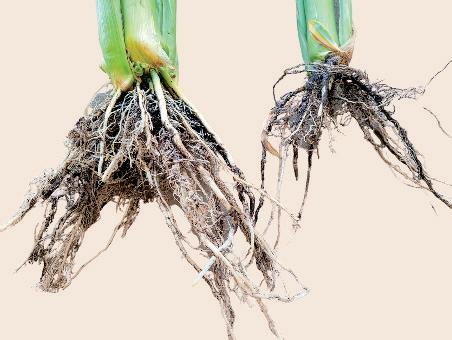

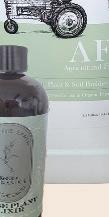


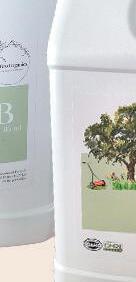

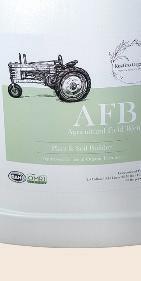



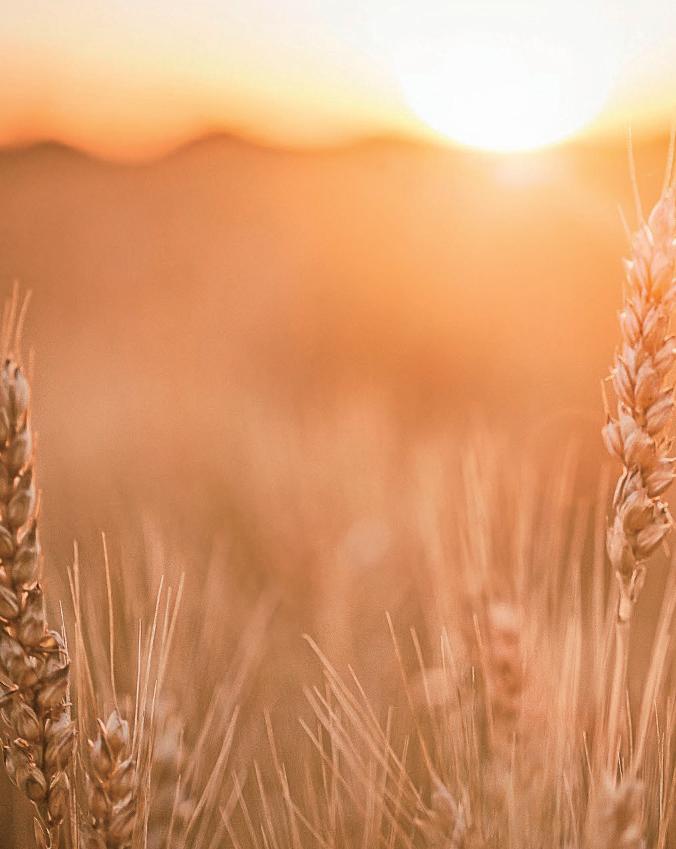
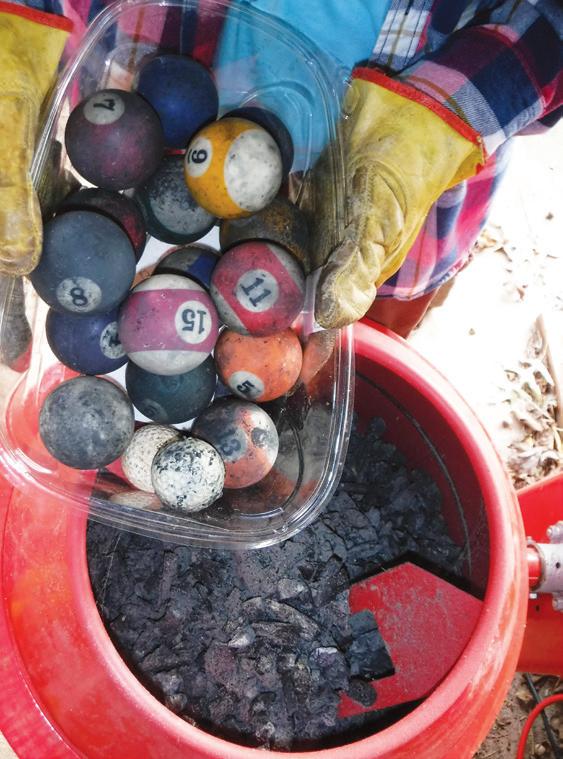
At ECO3 Farm, we’ve discovered a better way to crush biochar. We load our garden biochar concoction — woodstove charcoal, coffee grounds, eggshells, burnt bones, and more — into a cement mixer. Then, we add some billiard balls, put on a cover, and run the mixer about an hour. This method creates nicely crushed biochar for all of our planting beds. Life is good!
Esther Olney Morganton, North Carolinaprovided us with several juicy, baseballsized cantaloupes. The fun of picking their own salad ingredients — lettuce, spinach, radishes, rainbow carrots, and Swiss chard — created a newly balanced diet throughout spring. One daughter said she wanted to make dill pickles, so we grew several pickling cucumbers and also tried our hands at making bread-andbutter pickles.
We grew potatoes in a container and used the bountiful harvest in our stews and roasts. Besides asparagus, we’re now exploring horseradish and other root vegetables in our garden. We shared our rhubarb with a friend, who made a strawberry rhubarb buckle — all with our own fresh ingredients. We’ve only lived in our current house for three years and continue to learn the nuances of the growing areas around the yard. My girls now want to grow herbs to incorporate into homemade candles.
If you have young, picky eaters, try growing your own fruits and vegetables, even if your space is limited. Let the whole family get involved in a way that may encourage a lifetime love of gardening. It worked for me.
 Heidi Swanson Seven Fields, Pennsylvania
Heidi Swanson Seven Fields, Pennsylvania
I brew at home on a small scale, maybe a couple of batches of dark ale each year. One byproduct is spent grain, which, in my case, is malted barley. Usually, brewers feed this to animals, compost it, or send it to the landfill. In my opinion, this is a huge waste.


Spent grain can have many uses as food for people. In my home, I dry the spent grain (it makes a fantastic multigrain bread). I spread about 15 pounds of wet grain on a cookie sheet and place it into a 170-degree-Fahrenheit oven for 5 to 7 hours. This works well for small-scale drying, but I’d like to hear from other






We have several homemade chicken tractors that are portable and handy, but low. Sometimes, it’s difficult to get the eggs off the ground. So, Mark made this nifty egg grabber out of an ice-cream scooper. It’s the perfect size to grab an egg and lift it without having to get down on your hands and knees. Not only does it save our backs, but it saves our eggs too!

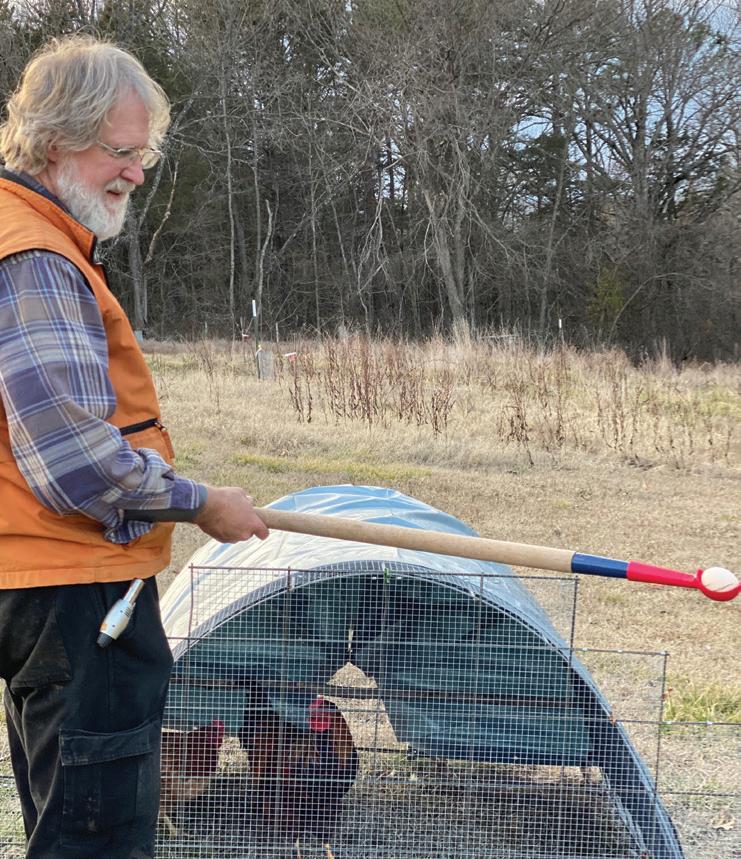 Stephanie and Mark Fields Eminence, Missouri
Stephanie and Mark Fields Eminence, Missouri
readers who've discovered viable alternatives for dealing with large quantities. That’s because I hope to tap into local microbrewery waste to dry 100 pounds or more at a time, and then sell it as whole grain or flour.
Lewis Taylor Hoyt, Kansas



Do you have handy home, farm, or garden advice? We’ll pay you $25 for each tip we publish, plus another $25 if we use your photos. So, send your niftiest tips to us at Letters@MotherEarthNews.com.
From planning for the future coop and purchasing the needed tools and materials to the actual construction, this book o ers detailed step-by-step instructions to the beginning keeper. Color drawings assist the reader with building a confined coop, chicken tractor, nesting boxes, portable perches, expanded brooders, A-frame hide, and lean-to hide. #11858 $14.95
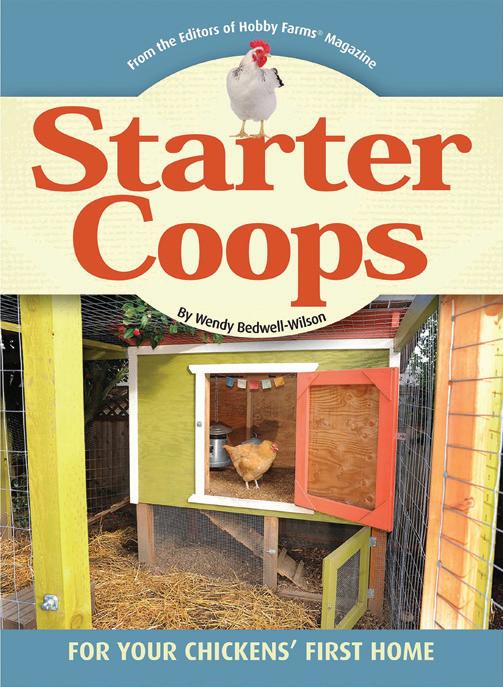
Our son, David, knew he’d have critter problems in the garden, so he and my husband (also David) came up with this plan for the raised beds.


They built 2x4 frames to rest on top of the raised beds and stained them the same color as the rest of the bed. They bent lengths of EMT conduit pipe into a 3-foot-high arch, and secured the ends of the pipe in holes drilled into the edges of the lumber. Then, they zip-tied chicken wire over the outside of the pipes. (Plastic sheeting can also be put over the top as a season extender.) The frames are hinged to the top of the raised beds at the back so they swivel up for weeding and harvesting. And, finally, the frame fronts are fitted with metal handles to make lifting easier.

They also built in a safety feature for the hinged frame, with a short piece of 2x4 attached to the top and a small piece of angled wood attached at the base for the long piece to rest on when the frame is open.
They called their plot Aaron Jacob’s Memorial Garden in memory of my youngest grandson. The garden was lovingly created by David and Jennifer Bianco and their sons, David, Solomon, and Jericho.








Helps ensure deep, steady breathing throughout the night, improving the efficiency of the lungs and relaxing muscles to address sleep apnea.
Ankle sprains, bruises, painful elbows and shoulders all need help during repair. Rehab Remedy clears the bruising and keeps the healing process going for as long as you apply it. Get a complete repair naturally.


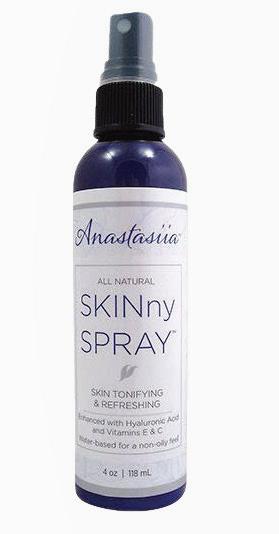

Some skin gets too dry and some gets too oily. Anastasiia SKINny Spray is designed to balance your skin so that it’s moist but not oily. It provides very necessary vitamins and herbs to support healthy tissue development.
When used regularly, Hot Flash Relief has been shown to reduce the occurrence and severity of hot flashes and other symptoms associated with the hormonal fluctuations.


The truth is, sometimes otherwise healthy chickens stop laying eggs. In some cases, there are things you can do to help bring your ladies back into egg production; in others, not so much. If your hens have gone from hero to zero in the egg-laying department, read on for some possible reasons and solutions.
During winter, many hens slow down or stop laying altogether. Your hen’s egg production is partially dependent on nature’s light cycles. This means when the short days of winter come, your hen’s body says it’s time to take a break.
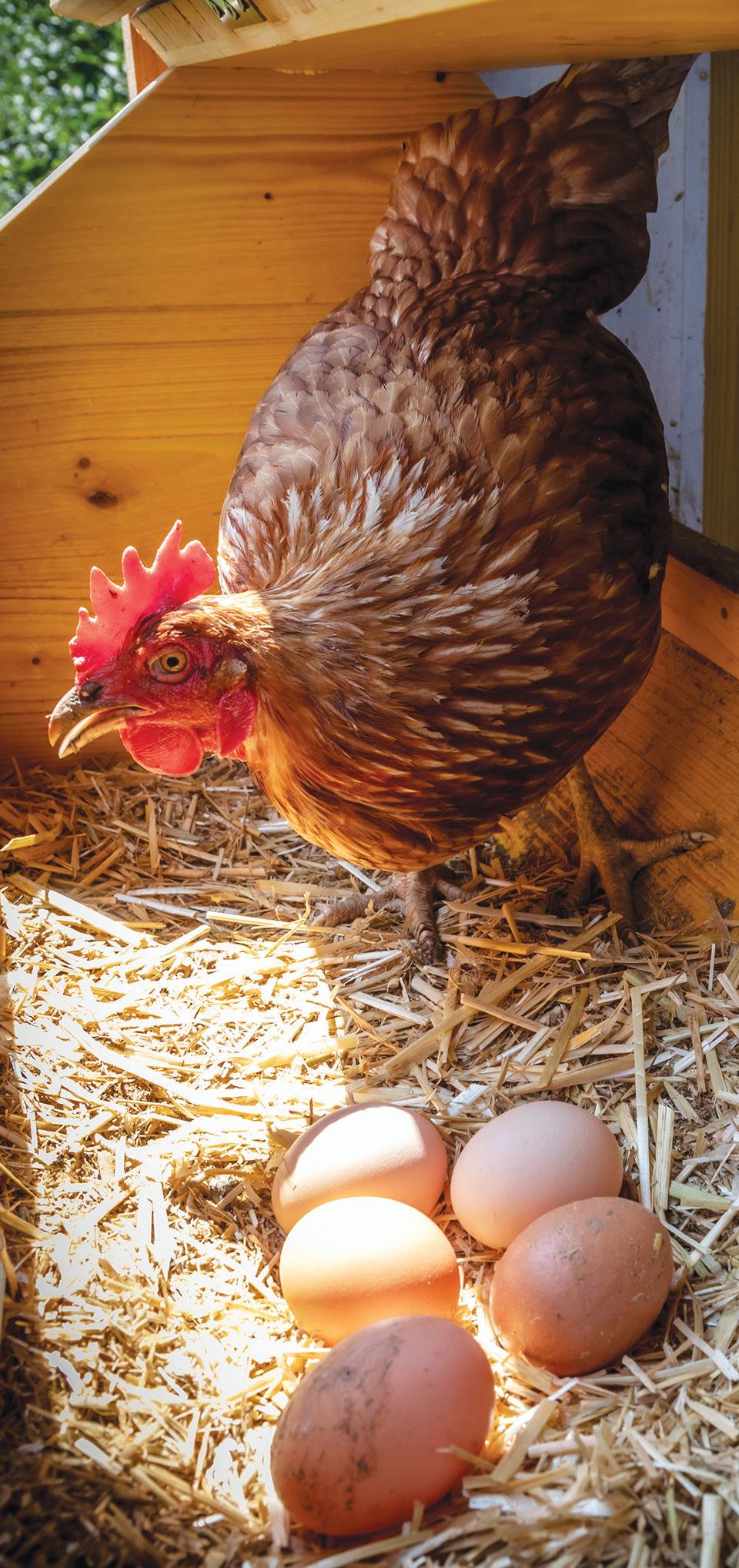
If your hens stop laying around December, this is likely the culprit. The good news is they’ll probably start laying again in spring.
If you can’t wait for spring, a timed coop light will trick your girls into thinking it’s spring. Hang the light in a top corner of your coop and set the timer to stretch the daylight for about 12 hours. If you have a large coop, you may need more than one light for this method to be effective.
Do your birds look a little raggedy? Chances are they’re molting. Molting is the process of chickens shedding old feathers and replacing them with new ones, and they can look simply awful during this process. Many chickens also stop laying during this time. Your chickens’ bodies will transfer calcium and nutrients away from the egg-laying process and into the feather-producing process. Molting usually occurs in spring or fall but can happen at any time of year.
The good news is that the process only lasts a month or two. The even better news is that you can help your chickens through this time and bring them back into egg production.
• Use a high protein feed, at least 16%; you might even see it labeled as a “feather fixer.”
• Keep your coop clean of chicken feathers. This will keep other chickens from thinking they’re toys when feathers grow back.
• Feed high-protein snacks.
• To prevent sunburn, provide shade for your chickens if they’re molting during warm months.
• Provide a warm, draft-free coop if they start molting during winter.

This is one of the ones we can’t control. As chickens age, their production falls off and eventually stops. For some breeds, that might be as early as 2 years old, while others may lay well into their fourth year. Most breeds will start slowing down by age 4 and quit laying by age 5. This might not seem like a very long time, but when you consider the number of eggs a chicken might’ve laid by age 4, it’s quite a lot. A good laying breed might lay 800 or more eggs by the time they quit laying. That’s a lot of omelets! If your ladies are a bit more on the mature side, this is likely the reason for the lack of egg production.
Stressed-out chickens don’t lay eggs. It’s really that simple. So, what stresses out a chicken? Predators, new coop mates, and aggressive roosters are at the top of the list. Overcrowding can also add stress.
If you notice a sudden drop in egg production, ask yourself what’s changed recently. Have you added new birds? Has a young rooster suddenly started feeling his oats? If the answer to both of these questions is “no,” take a walk around your coop and look for signs of predators. Check for chicken wire that’s pushed in, tracks, or scratch marks around the coop. These can all be signs you have a hungry critter trying to get themselves a chicken dinner.
Once you figure out what’s stressing out your chickens, you can fix the problem. If there’s an aggressive rooster, pen him up separately or with just one or two tough hens. If you’ve recently introduced new coop mates, give them separate runs next to each other so they can see each other but don’t have to sleep in the same bed.
If you have a predator problem, you might need to set up a trap or lay in wait to dispatch the offender. Both of these options require knowledge of local laws. If you live in a neighborhood, firing a rifle is a bad idea and likely illegal. If you use a live trap to trap an animal, it may be illegal to relocate it. Check with your local wildlife office to get the best advice for your area.
If your otherwise healthy chickens aren’t laying, look at what they’re eating. Chickens are omnivores and thrive on a balanced diet. Most quality layer feeds will provide something close to a balanced diet, but
for good egg production, you might need to supplement extra calcium and protein. A good source of calcium can be provided through oyster shells or crushed eggshells. Bagged oyster shell is available at most farm stores, and eggshells can be crushed up and left out to dry for a few days before putting them out for chickens. To supplement protein, give mealworms or scrambled eggs.
One other thing chickens need is grit. You can buy this commercially or provide your chickens with coarse sand with small pebbles. Chickens accumulate grit in their gizzards, and this helps them digest food properly. You can offer this on its own in a separate feed container, or mix it with their daily pellets.
What if your chickens haven’t stopped laying? What if there’s a sneaky little broody hen tucking those eggs up under her wings and
carrying them off to her secret spot? It happens. Some broody hens think they need to hatch 20 or so babies instead of just their one little egg, and since they can’t produce eggs fast enough, they turn to a life of crime.
This is most common in small flocks of free-range birds. The freerange part of the equation means they can find lots of places to hide their eggs, and the small number of hens means they need to steal every egg they can to get to a number worth sitting on.
If you notice one of your free-range girls hanging around the nesting box more than usual, she’s not there for fun, she’s casing the joint. If you suspect an egg thief in your flock, you’ll need a little patience. Keep an eye on your chickens, and if you spot one wandering away from the flock, follow cautiously. She’ll lead you to her egg booty and you can retrieve your lost eggs.
Michele Cook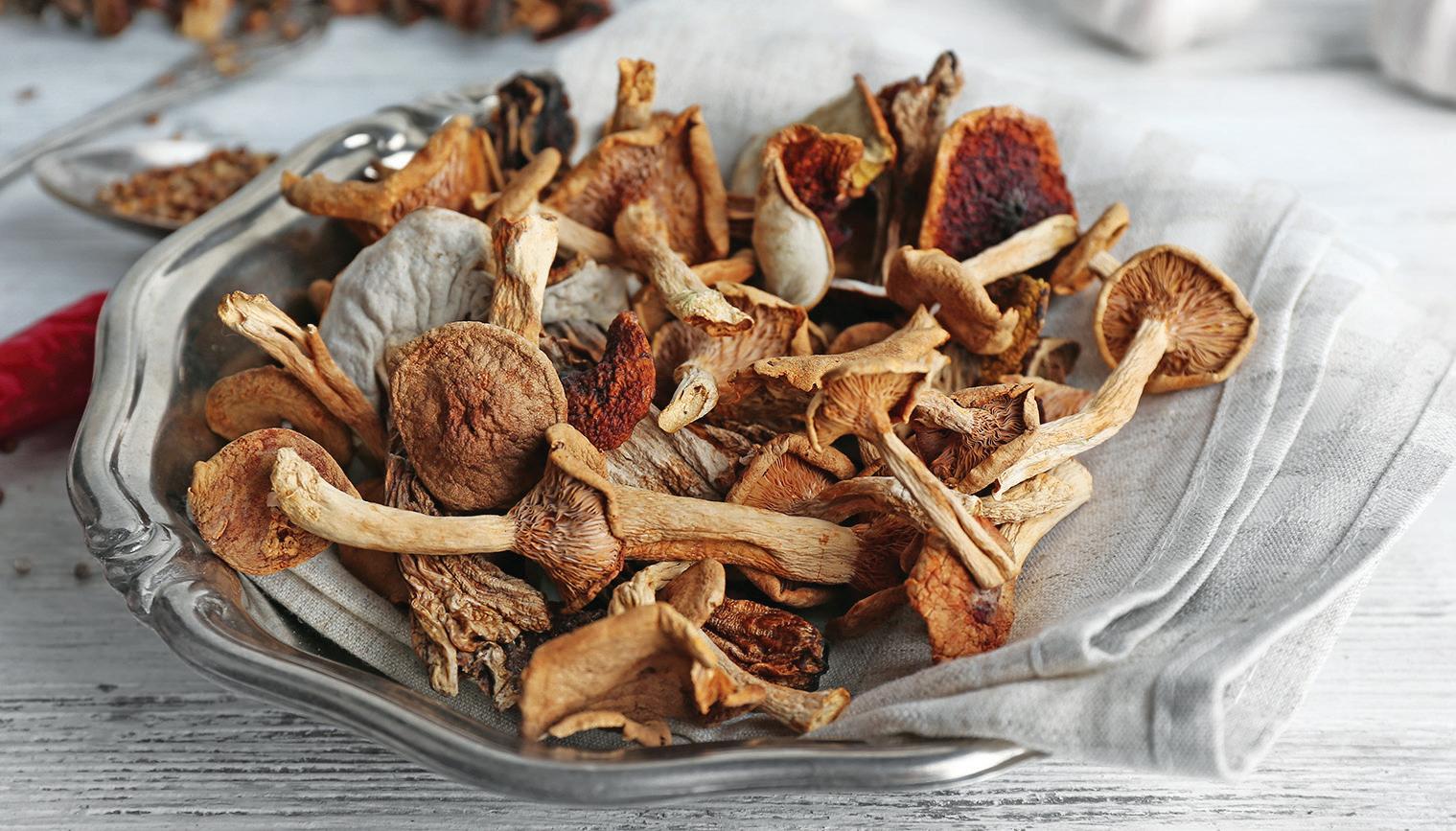
I’m finally trying my hand at growing my own mushrooms. What’s the safest way to preserve them for future use?
Fresh mushrooms have a short shelf life, usually 1 to 3 days at room temperature, so drying them either commercially or at home is an attractive alternative, because it lowers the water activity to below 0.85, thereby restricting the growth of harmful bacteria.
To ensure the safety of home-dried mushrooms, understand the following:
• If fresh mushrooms are contaminated with pathogens, this risk is carried forward if the dehydration process doesn’t lower the water activity to below 0.85.
• A water activity above 0.85 allows pathogens to grow and, in some cases, produce toxins that lead to foodborne illness.
• If rehydration is done at room temperature, this creates another opportunity for any pathogens that might be present in the dried mushrooms to resume growth.
• If the rehydrated mushrooms aren’t properly cooked, foodborne illness can result.
• Research shows that the bacteria Listeria monocytogenes is commonly associated with fresh mushrooms. This bacterium is especially dangerous during pregnancy.
• Research also shows that many pathogens, including L. monocytogenes, Salmonella spp., and Bacillus cereus can survive on low-moisture foods (like dried mushrooms) for months during storage.
• These “survivors” generally have a higher tolerance to heat during the cooking process, which increases the chance that they’d survive and make the consumer sick. Furthermore, when the bacteria present produce toxins (as in the case of B. cereus), cooking won’t destroy the toxins. With this understanding, the best practices when drying mushrooms at home are:
• Purchase small batches of fresh mushrooms to avoid the need for dehydration and long-term storage.
• Select good-quality mushrooms, to have a better shelf life. Older mushrooms deteriorate much faster at room temperature.
• If dehydrating, wash the mushrooms thoroughly by tossing them in, or spraying
them with, water before slicing to reduce the number of microorganisms. Arrange the slices in a single layer on a tray and dehydrate them until dry in a dehydrator or oven at 110 to 125 degrees Fahrenheit.
• Store the mushrooms in vacuum-sealed packaging in a cool, dry place.
• Rehydrate in the fridge to reduce the risk of pathogens growing rapidly.
• When cooking rehydrated mushrooms, consider methods that require high heat and longer cooking times, like soups rather than sautéed vegetables, for example.
Morrine Omolo; excerpt from the University of Missouri Extension publication
“Preserve It Fresh, Preserve It Safe” 2023 No. 3, www.Extension.Missouri.edu
Since comfrey contains pyrrolizidine alkaloids (PAs), which can be toxic to humans and animals, is it safe to grow near fruits and vegetables, or will the PAs transfer from plant to plant?


Comfrey rejuvenates soil and can prevent fungal and pest problems among your crops. The same alkaloids have antibacterial, antifungal, and antiviral properties when placed on wounds. But don’t eat it! The dangers of PAs are well-documented, as is their potential to persist in animal-based products from livestock that have eaten them. So does the same danger exist within our vegetables?
Thankfully, no. A study conducted in 2021 and published in the journal Foods asked exactly this: Is horizontal transfer of toxic plant constituents a concern for food safety? Researchers conducted different tests. One involved growing food plants in soil one year after high-PA plants were grown there. Another tested food crops fertilized with compost made from high-PA plants. And a third tested PAs in food crops grown directly adjacent to high-PA plants. The studies showed that growing these high-PA crops only raised the PA content in the soils by a tiny bit, and not in every plot. The third study examined a “worst-case scenario,” where the amount of high-PA plants in the plot far outnumbered the receptor plants. Even then, the transfer rate was 0% to 0.23% negligible, even though the researchers attempted to simulate the highest concentration possible of high-PA plants. Together, these studies confirmed a few facts that gardeners and farmers can use:

1 You can suffer from PA toxicity and liver damage from eating plants that contain it, such as comfrey, heliotrope, houndstooth, eupatorium, and purple Joe-Pye weed.


2 If livestock eat plants with high PA levels, those PAs could transfer to you through honey, meat, milk, eggs, and offal.



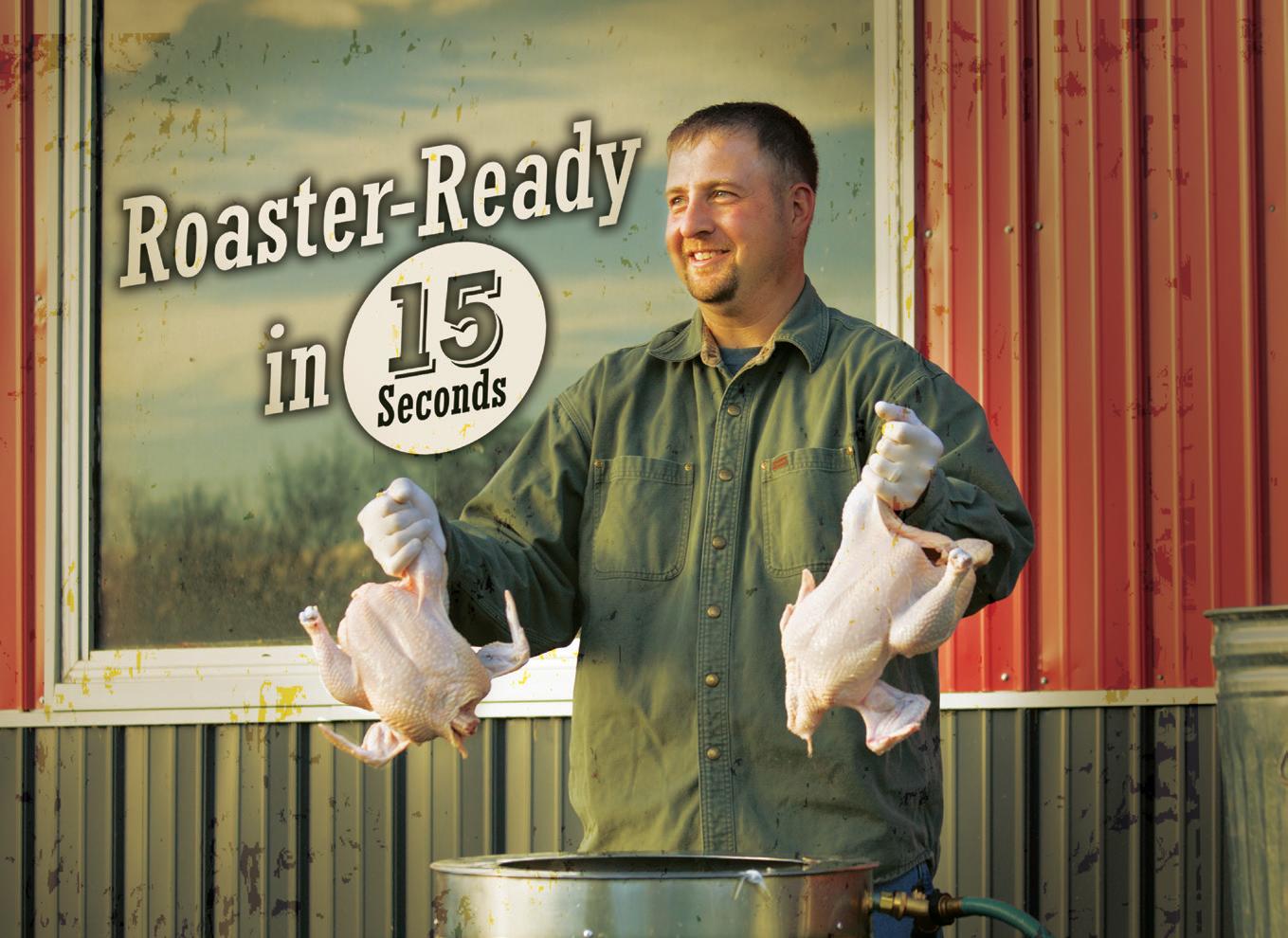
3 The danger of PA transfer from soil, compost, or cultivation adjacent to a high-PA crop is negligible.


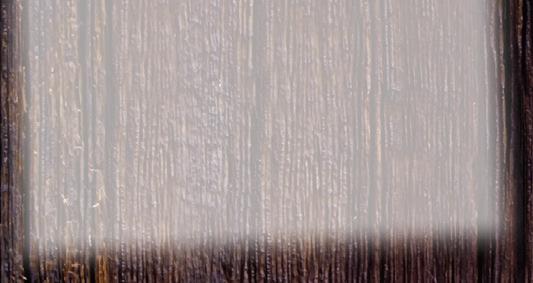













So, using comfrey to support soil health and prevent pests within your food garden is a good move. Just don’t eat the plant.
Marissa Ames



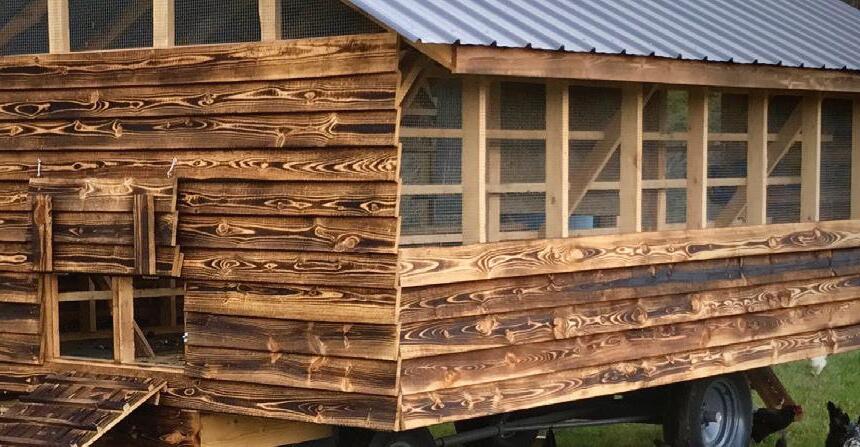






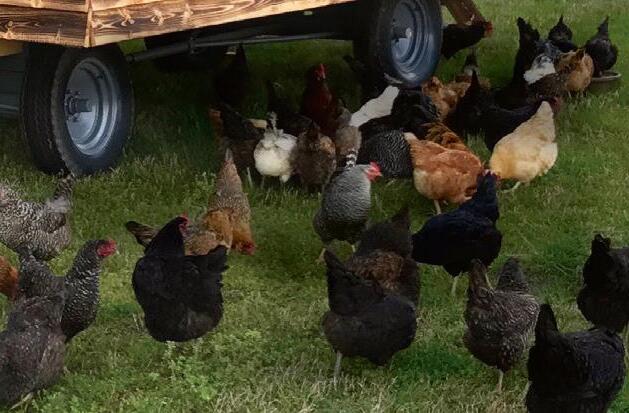


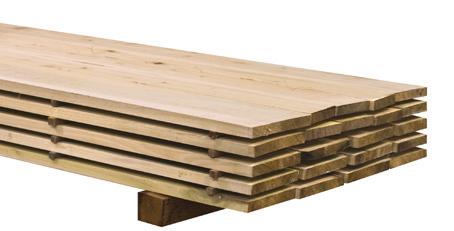

























These stainless steel, needle nose long tipped straight blades are the perfect tool for harvesting your vegetables and cutting flowers. At 7.5 inches long, and featuring a black band to secure shears in a closed position when not in use, this is a tool no home gardener should be without.
#12017 $16.95 Member: $14.95

Garden in style with this widebrimmed bucket hat. Choose between three exclusive prints, cottage rose, heirloom garden and garden of paradise, and display your inner gardener for all to see. A tie inside of the hat allows you to adjust the fit, making this a comfortable wear for any head size. This one-of-a-kind Womanswork hat is fully lined and hand washable cotton, meaning you can easily roll it up and pack away for wherever your gardening adventures take you.







A #12014 Cottage Rose $34.00 Member: $29.99





B #12015 Garden of Paradise $34.00 Member: $29.99

C #12016 Heirloom Garden $34.00 Member: $29.99


Bug-Free Organic Gardening will show you how to bring your garden ecosystem into balance so that beneficial insects and larger animals do the work of pest control for you. Author Anna Hess has more than a decade’s experience growing all of her family’s vegetables. Here, she sums up all of her knowledge and expertise, teaching you many hands-on pest-control techniques, such as succession planting, shielding plants with row covers, timing plantings to bypass bugs, and so much more.
#11946 $14.99 Member: $12.99


Ditch the itch and protect yourself from mosquitos without using chemicals. This 100% Organic Mosquito Repellent has a fresh lemon scent and comes in four 2 ounce bottles, perfect for your purse, bag, or car so you have it whenever you need it!


#8467 $16.99
The Creative Vegetable Gardener encourages readers to widen their focus, be playful, and imagine a vegetable garden that reflects their own unique aesthetic and offers a meditative sanctuary as well as a source of fresh, homegrown food. Learn about seed selection, garden layout, and beyond!
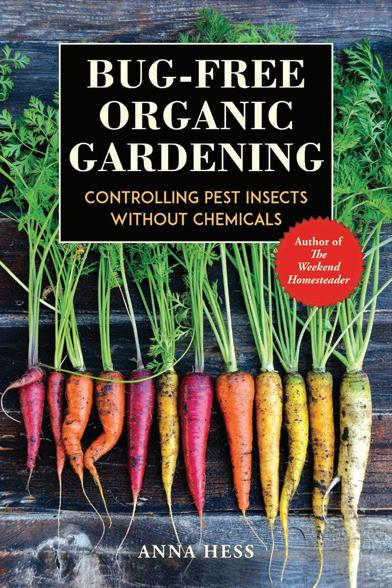



#11952 $19.99 Member: $16.99





Whether you need to cultivate, scalp, edge, dig, furrow, plant, or harvest, the Cobrahead Weeder & Cultivator can help you do it all! Made in the USA, this tool comes with a 1-year warranty and weighs less than a pound!

#6551 $29.95

That’s not mold, its mycelium! Our collection of oyster plug spawns are perfect for the mushroom fanatic looking to grow their own supply on a small-scale basis, although some cultivators enjoy using them for largescale projects as well. With a variety of flavor profiles and options available year-round and in specific months, we have a mushroom for everyone. Recycle an old hardwood log or stump and get cultivating today!


Golden Oyster #10379 $12.00 | Warm Blue #10375 $12.00





Discover planting and care guidance for 100 native plant species that provide food and shelter for birds throughout the year, from winter all the way through breeding and migrating periods. Readers will learn about plants they can add to their gardens and cultivate, as well as wild plants to refrain from weeding out. Plant photographs and range maps provide needed visual guidance for selecting the right plants for any location in North America.
#11948 $16.99 Member: $14.99
Make delicious homemade tomato sauce, marinara, salsa, juice, paste, soup, and more with this unique tomato press! Made of durable, heavy-duty materials, this press includes stainless steel mesh to strain and dispense purees, and features a suction base so you can confidently secure it to your counter or table. Includes tray, pestle, recipes, and instructions. Hopper holds 2.25qt/9c and tray holds 1.25qt/5c.
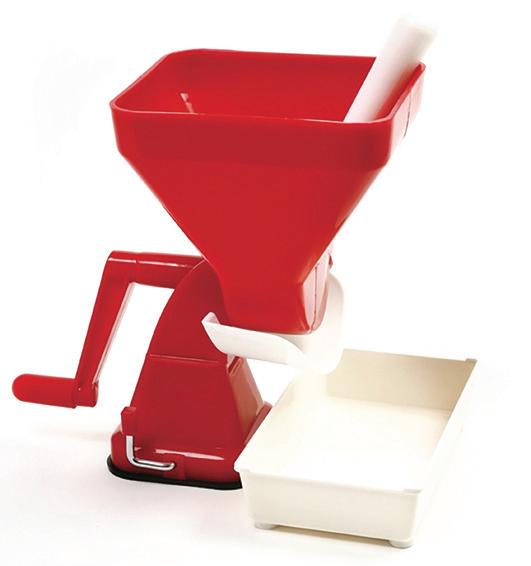
#12044 $49.95 Member: $46.95
STACKED WITH FLAVOR
An anti-inflammatory diet can help you move more easily and enjoy life and activities more, but knowing where to start is the hardest part. In Stacked with Flavor, Shawna Coronado shares her powerful and personal story of what she has learned about eating an antiinflammatory diet. The information found in Stacked with Flavor will help you stay healthy, lose weight, feel better, and have more energy!
An anti-inflammatory diet can help you move more easily and enjoy life and activities more, but knowing where to start is the hardest part. In Stacked with Flavor, Shawna Coronado shares her powerful and personal story of what she has learned about eating an antiinflammatory diet. The information found in Stacked with Flavor will help you stay healthy, lose weight, feel better, and have more energy!
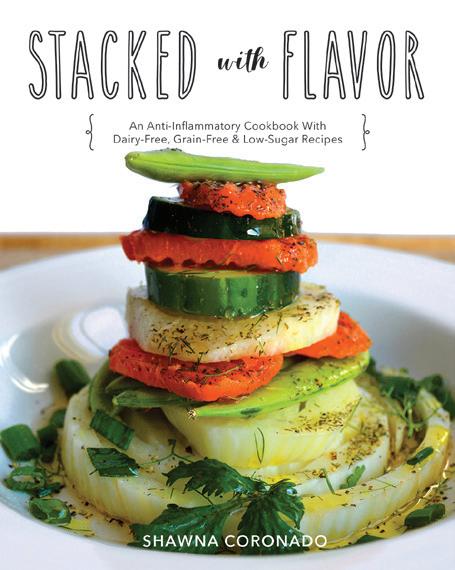
In a cookbook whose results seem like magic but whose recipes and instructions are specific, easy-to-follow and foolproof, Claudia Lucero shows step by step (with every step photographed) how to make 16 fresh cheeses at home, using easily available ingredients and tools, in an hour or less.
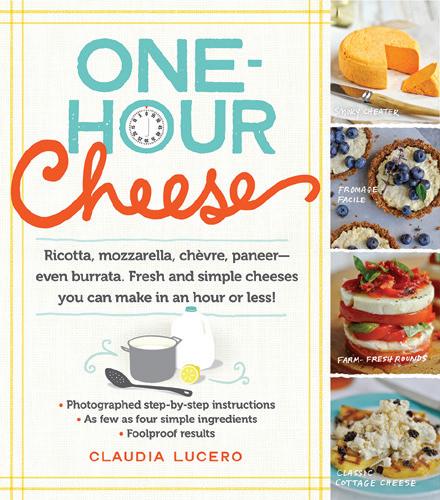
#7407 $16.95 Member: $14.95

This DIY Cheese Kit is complete with instructions, cheesecloth, a glass dairy thermometer, vegetarian rennet tablets, citric acid, and pure flake salt, and it allows for at least eight batches of cheese. Just add a gallon of milk and have some fun!

#7850 $29.00 Member: $26.99



#9490 $24.95 Member: $21.95
#9490 $24.95 Member: $21.95
PICKLED TO PLEASE
Intended for new and experienced home canners, this book covers food preservation methods, safety information, and teaches the “mix and match” approach that demonstrates the easy way to swap out seasonings and spices, vinegars and brines, and fruits and vegetables. With tips and recipes that encourage experimentation with different flavors and combinations to find the perfect pickled fruit and vegetable, you'll have an exciting dish at every meal!
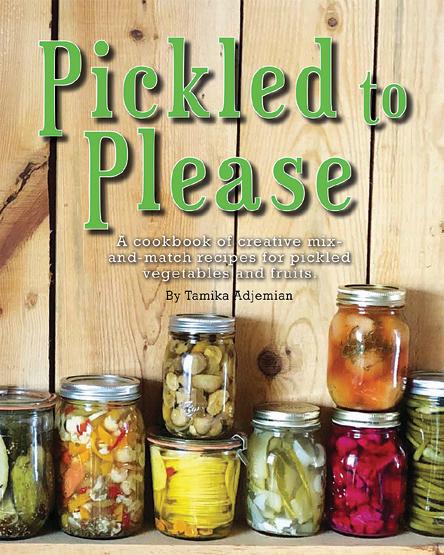
#9505 $24.95 Member: $19.95


Smoke and cure everything from store-bought meats to freshly harvested fish and game. With full-color photographs and clear instructions on how to select meats and avoid contamination, this complete guide will teach you how to choose smokers, use various tools, and prepare recipes for rubs, sauces, bacon, and more.
#11452 $24.95 Member: $21.95

Learn how to make delicious Greek yogurt at home! We’ve put together this exclusive kit to teach you the basics of making yogurt. Included is our traditional flavor yogurt starter culture, a yogurt maker with ten 4oz jars, and Homemade Yogurt & Kefier, the ultimate guide for beginners.

#10331 $95.93 Member: $84.99
Mastering Fermentation is a beautifully illustrated and authoritative guide to the art and science of fermented foods, featuring more than 70 recipes that allow you to progress from simple fermented condiments such as vinegars and mustards to more advanced techniques for using wild yeast starters, fermenting meats, and curing fish.

#9580 $29.99 Member: $26.99
Add a touch of elegance and depth to your dishes with dried mushrooms. These dried mushrooms are sustainably harvested from the wild and handpicked by expert foragers who know how to choose the best mushrooms for customers or are sourced from high-quality, organic farms and carefully processed to preserve their potency and flavor. These 1oz tins of dried mushrooms are perfect for home cooks and professional chefs alike.


Matsutake #11964 $22.00
Oyster #11966 $15.00









The AquaBrick Water Purification System purifies any source of non-salt water and makes it safe, clean, potable drinking water. The water filtration method safely purifies up to 700 gallons of the most contaminated water. Easily attach the tube and filter, spigot, and hand pump to the cap. Fill the container, as designated, with water. Insert the filter and straw down into container. Screw on the lid and squeeze the hand pump a few times to pressurize the container. Press the spigot and pour it into a glass or water bottle. It’s really that simple!

#11133 $174.99 Member: $164.99



This complete stress-free blueprint to building an above-ground, dry rainwater harvesting system in just nine days or less reveals how you can easily collect pure, clean rainwater with minimal time, budget, and hassle.
This complete stress-free blueprint to building an above-ground, dry rainwater harvesting system in just nine days or less reveals how you can easily collect pure, clean rainwater with minimal time, budget, and hassle.
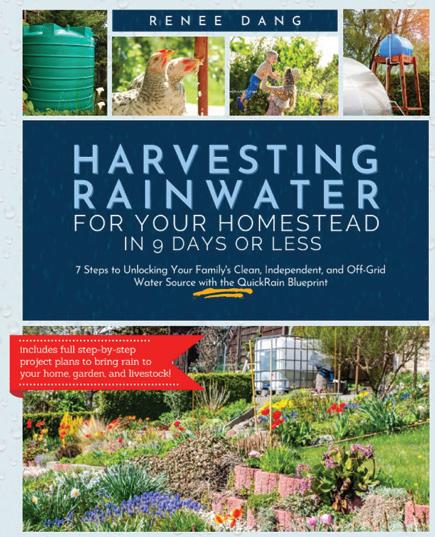
#11945 $21.99
#11945 $21.99
Member: $19.99
Member: $19.99




RANCH

Your equipment is valuable, knowing how to repair and fabricate essential hardware will help make it last. Master the fundamentals of welding, brazing, and soldering so you can repair equipment both big and small, from a garden rake to a mower.
Your equipment is valuable, knowing how to repair and fabricate essential hardware will help make it last. Master the fundamentals of welding, brazing, and soldering so you can repair equipment both big and small, from a garden rake to a mower.

#9562 $24.95
#9562 $24.95
Member: $21.95
Member: $21.95







The Trekker Kit is perfect for the solo camper! Simply fuel the 'Trekker' Kettle with sticks, pine cones, bark, dry grass, etc., and you will have 20 oz of boiling water in about 3 minutes. With just a handful of fuel, you will quickly have hot water for hot drinks, washing up, personal hygiene, and more. The kettle is made from Food Grade 304 Stainless Steel and is laser welded.
The Trekker Kit is perfect for the solo camper! Simply fuel the 'Trekker' Kettle with sticks, pine cones, bark, dry grass, etc., and you will have 20 oz of boiling water in about 3 minutes. With just a handful of fuel, you will quickly have hot water for hot drinks, washing up, personal hygiene, and more. The kettle is made from Food Grade 304 Stainless Steel and is laser welded. #11991 $124.99 Member: $114.99
#11991 $124.99 Member: $114.99
THE COMPLETE GUIDE TO DIY GREENHOUSES, 3RD EDITION






Express your love for our planet with this “Love Your Mother” T-shirt! At Mother Earth News, we’re committed to celebrating our planet and empowering our readers to make smart choices. Perfect for everyday wear, the fabric is made from 100 percent ring-spun cotton.











With its beautiful ceramic white and blue floral design and sturdy stainless steel handle, you won't mind leaving this compost crock on your kitchen counters. Collect up to three quarts of your peelings, egg shells, coffee grounds, and vegetable scraps for your garden compost. Easy to clean and odorless, thanks to a replaceable filter in the lid, it allows you to be environmentally friendly without effort!

#12043 $46.95 Member: $42.95



Unpack the complex science behind effective and efficient composting in layman’s terms. You get detailed information on tried-and-true composting methods and new, innovative techniques. From traditional bin composting to keyhole gardens and trench composting, you’ll close the cover with all the knowledge needed to be an expert composter today. Plus, you’ll learn how to use all that “home-cooked” compost successfully.
#11790 $22.99
Member: $19.99
Design, build, and equip your very own greenhouse with the building plans and photo-illustrated step-by-step instructions in BLACK+DECKER
The Complete Guide to DIY Greenhouses, 3rd Edition

From ornate, Victorian-style greenhouses to basic cold frames and simpler kits, you're sure to find a project that meets your needs and fits your space, so you too can extend your gardening season in style.
#12036 $34.99
Member: $31.99

HAND MADE: THE MODERN GUIDE TO MADE-FROMSCRATCH LIVING
HAND MADE: THE MODERN GUIDE TO MADE-FROMSCRATCH LIVING
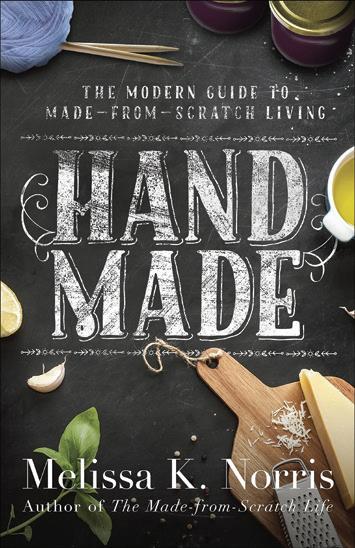
Melissa K. Norris, author and homemade guru, offers downto-earth tips and guidance to help you learn how to bake old-fashioned recipes, grow and harvest your own herbs, make fermented foods at home, declutter your living space, and more. With Norris’ advice, you’ll be able to open your heart to God-given rest and discover practical and tangible ways to craft your home into a refuge for yourself and those you love.
Melissa K. Norris, author and homemade guru, offers downto-earth tips and guidance to help you learn how to bake old-fashioned recipes, grow and harvest your own herbs, make fermented foods at home, declutter your living space, and more. With Norris’ advice, you’ll be able to open your heart to God-given rest and discover practical and tangible ways to craft your home into a refuge for yourself and those you love.
#12024 $15.99
#12024 $15.99
Member: $13.99
Member: $13.99
Veteran homesteader and star of Discovery's Homestead Rescue Marty Raney shares a bigpicture vision of how ordinary families can become radically resilient homesteaders: powering, feeding, and caring for themselves through their own efforts and on their own land. This guide will show you how to buy land with the natural resources you need to build and feed a homestead. Plus, learn how to go off-grid with your own power and water systems and more!
Veteran homesteader and star of Discovery's Homestead Rescue Marty Raney shares a bigpicture vision of how ordinary families can become radically resilient homesteaders: powering, feeding, and caring for themselves through their own efforts and on their own land. This guide will show you how to buy land with the natural resources you need to build and feed a homestead. Plus, learn how to go off-grid with your own power and water systems and more!

#12037 $20.00 Member: $16.99
#12037 $20.00 Member: $16.99








MOTHER EARTH NEWS is pleased to bring you expert advice for self-sufficient living in our exclusive collector’s series issue of Modern Homesteading, 2nd Edition. This special guide brings you more than 40 articles covering self-reliant living, livestock and poultry, DIY projects, gardening, food and recipes, and more!
MOTHER EARTH NEWS is pleased to bring you expert advice for self-sufficient living in our exclusive collector’s series issue of Modern Homesteading, 2nd Edition. This special guide brings you more than 40 articles covering self-reliant living, livestock and poultry, DIY projects, gardening, food and recipes, and more!
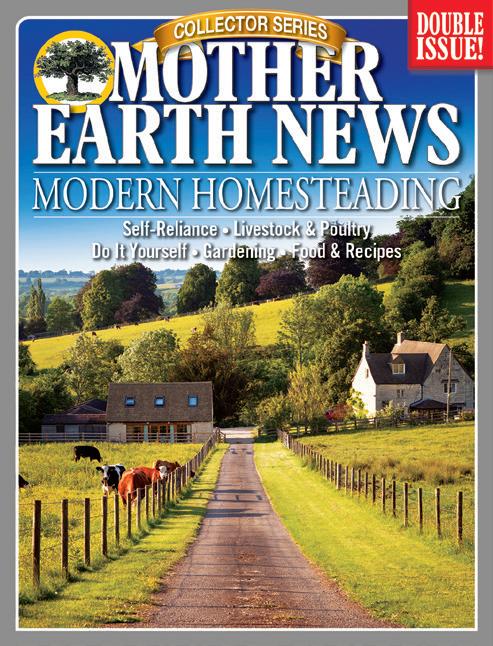
#8856 $14.99 Member: $12.99
#8856 $14.99 Member: $12.99
Dalia Monterroso brings a fresh, inclusive voice to the community of backyard chicken keeping with this entry-level guide designed to empower anyone who's always wanted to keep chickens but may have thought it required special knowledge and a large investment in equipment. Asserting that the backyard chicken community welcomes everyone, she addresses a broad audience, including those in urban and suburban locations. Readers will learn how to plan their flock, how to raise baby chicks, what to look for in a chicken coop, how to keep chickens healthy naturally, and more.

#11950 $16.99 Member: $14.99

In this unique guide, twenty-five plants common to the United States are described and illustrated with notations for their common usage. Each plant in this book comes with one recipe for food and detailed instructions for at least one alternative use. Additional instructions for the preparation of standard medicinal items like tinctures, creams, and infusions are included, as well as botanical guides to help identify other plants.

#11643 $17.99 Member: $15.99

Wondering if an off-grid lifestyle is right for you? Scared that it’ll be too challenging for you and your family to handle? Living Off the Grid is a comprehensive shakedown of what this unique lifestyle looks like in practice and will help ease your mind about transitioning to an off-grid life. With practical instruction, time-saving tips, and hard-earned wisdom, you’ll learn all the ins and outs of a simplified off-grid existence.

#9357 $14.95 Member: $12.95
Survival Wisdom is a practical guide, jam-packed with information on every aspect of outdoor life and adventure, from orienteering to campfire cooking to ice climbing and beyond. Culled from dozens of respected books from Stackpole, an industry leader in outdoor adventure, this massive collection of wilderness know-how leaves absolutely nothing to chance when it comes to surviving and thriving in the wilderness … and appreciating every minute of it.
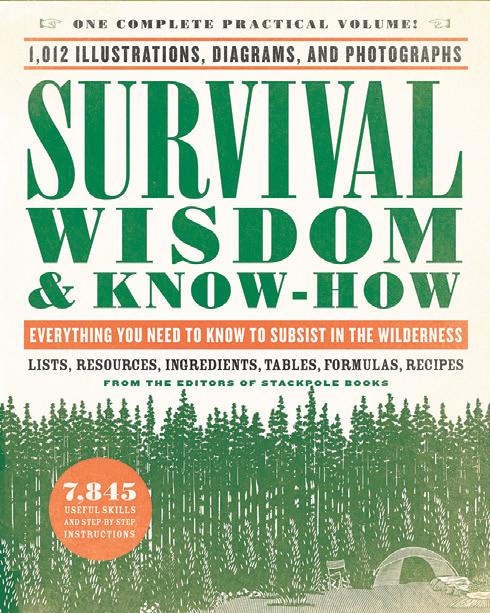
#8220 $24.99 Member: $21.99

THE HEALING GARDEN
This is the ultimate reference for anyone looking to bring the beauty and therapeutic properties of plants into their garden, kitchen, and home apothecary. Filled with stunning photographs and accessible information, you will gain knowledge on how to plan your healing garden, the foundational principles of herbalism, the profiles of mustknow plants, and more!

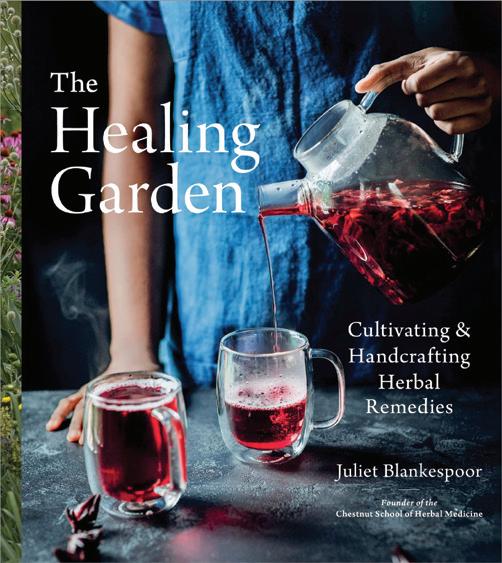
#11738 $35.00 Member: $29.95
A HEALTHIER HOME
A Healthier Home provides an accessible, room-byroom roadmap for improving the quality of your home’s indoor environment. From tackling toxins and revamping your kitchen to making a greener garden and ensuring cleaner laundry, A Healthier Home will aid you in creating a sustainable, safe lifestyle that benefits both your mind and body. Every corner of your home can be made to better serve you and your family—it’s just a matter of getting started!

#11935 $24.99 Member: $21.99






(CONTINUED FROM PAGE 4)
made and continue to make. I find the articles as rich as the soil into which these farmers and gardeners plant to yield bountiful harvests.
Here are a few of my favorite articles that highlight Black history through the contributors’ information on self-sufficiency, sustainability, organic gardening, and taking care of the land:
• “Planted in History” (December 2021/January 2022)
• “Dunbar Garden: A Big Success in Little Rock” (October/November 2022)







• “Soulfull Simone Farm” (December 2022/January 2023)




Anything that’s enjoyable has a personal, relatable aspect. These articles bring back some of the fondest memories of my life alongside my grandfather, as well as the connection I have with gardening, canning, and working on outdoor tasks and projects.

I’ve been enjoying this magazine immensely for many years. Please keep bringing great articles like these and more for your readers who love to learn and enjoy the experience of a personal connection.
 Kane G. Harper
Kane G. Harper

I’m wondering what solutions you may have for substitutions for newspaper as garden mulch. Newspapers are no longer available to us, and there seem to be no commercial replacements.
 Pat Guzzo Via email
Pat Guzzo Via email
Pat, great question! Many things can be used for mulch, including rocks, plastic, and rubber pieces. Of course, we recommend materials that decompose and build your soil rather than just cover it. Newspaper is a great way to “recycle,” but if you don’t have access to it, you can use brown cardboard boxes after removing any plastic tape. Cardboard is rigid and won’t immediately conform to the right shapes, but you can cut or tear it so it fits where needed, and then set a sprinkler
Lithonia, Georgiaover it and water it until the cardboard collapses to where you want it to be. And if you use drip systems or weeper hoses, place the cardboard over the hoses so every drop of water stays exactly where you want it to go. The cardboard may dry out and blow away in arid or windy locations. To prevent this, pile leaves or straw on top of the cardboard to keep it damp and assist in decomposition.
Another option is wood chips, which you can often get free from tree-trimming and landscape companies. Just spread the chips in walkways and under your plants. But keep in mind that fresh wood chips shouldn’t be worked into the soil, because they’ll absorb nitrogen as they break down. Once they decompose, they’ll release that nitrogen, but it can take up to two years. Avoid this nitrogen “robbing” by raking the wood chips into a pile before digging into the soil, and then pushing them back where they need to be after you’re done. After a year or so, you’ll find that the wood creates richer soil underneath the mulch layer by shielding subterranean life and decomposing in the same way a forest floor does. Happy gardening! — MOTHER


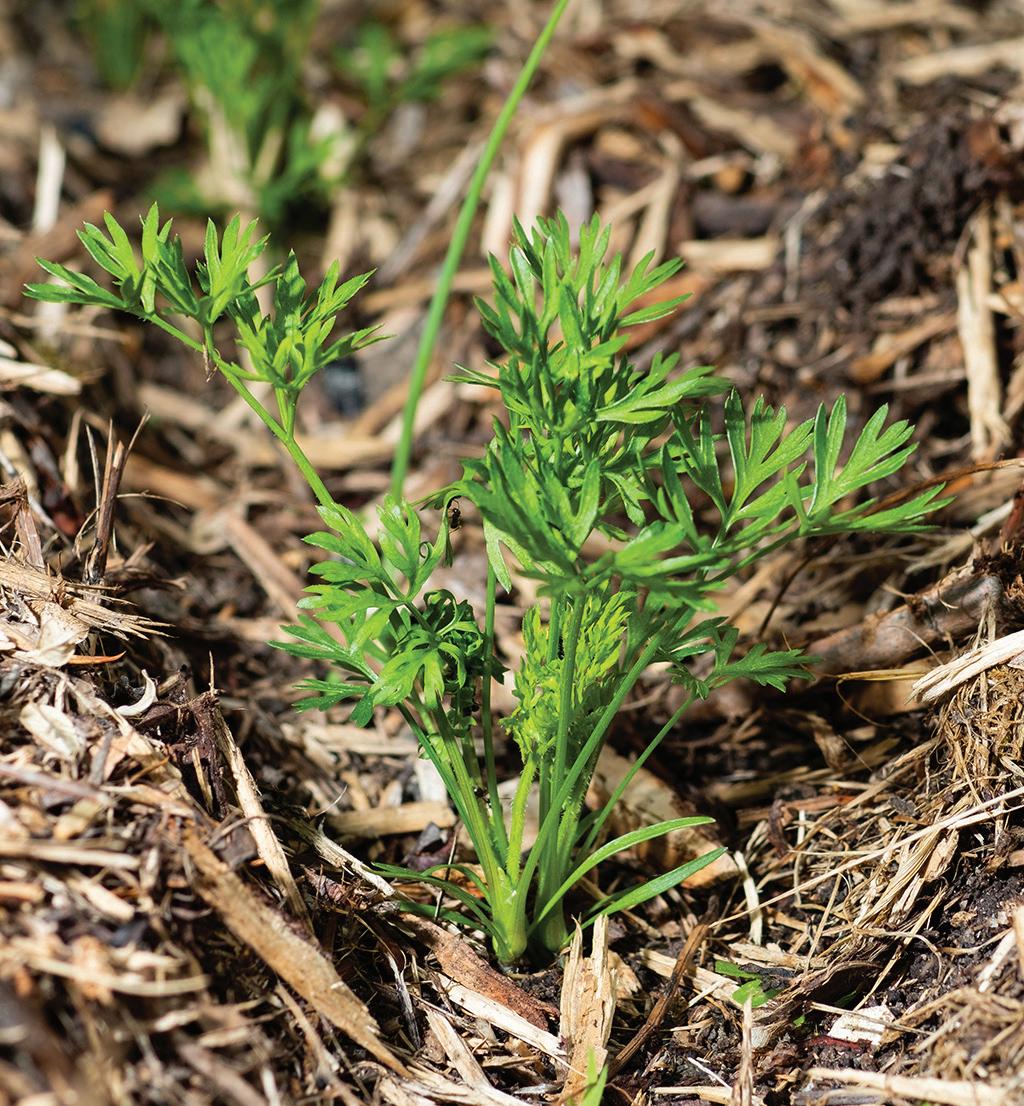

Thank you for highlighting an issue that’s critical to the survival of the food web, from the smallest fungi and insects to the top predators, including humans (“Non-Native Invaders,” October/ November 2022). You quoted University of Delaware Professor Doug Tallamy, who asserts that roughly one-third of



the vegetation in natural areas in our country isn’t native. This includes many introduced and escaped non-native ornamental plants that are wreaking havoc on our native ecology, contributing to the precipitous decline of native insects and the resulting threat to habitat and our food supply.
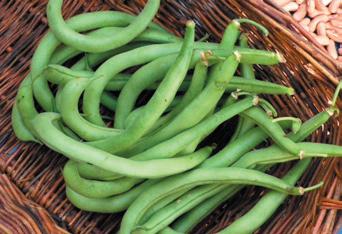

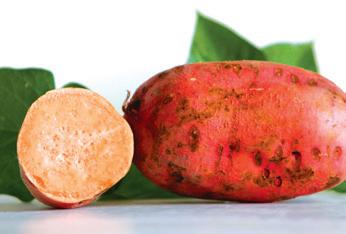

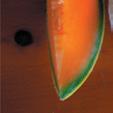



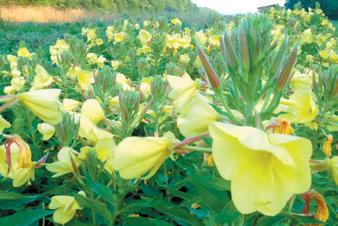




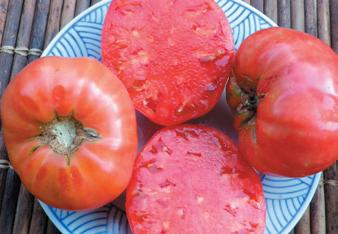
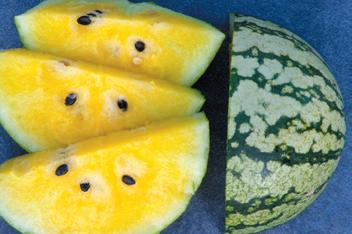
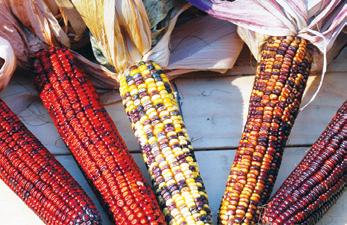


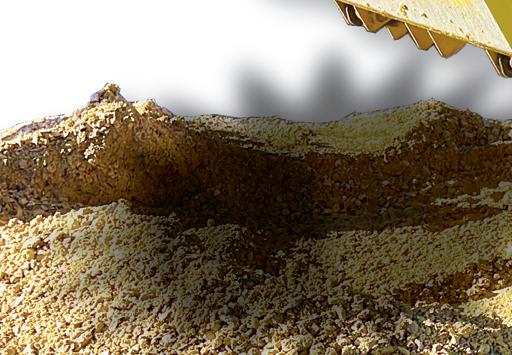

Recent laws banning the propagation and sale of invasive non-native ornamental plants are a step in the right direction. However, some in the nursery industry apparently view these laws as a challenge to surmount rather than an opportunity to develop new products. The demand for native trees, shrubs, flowers, and vines has exploded in recent years, and supply is still limited. Instead of focusing on developing supposedly sterile cultivars of non-native ornamentals, why not seize the opportunity to grow and sell more natives? Supposedly sterile cultivars may still have the ability to cross-pollinate with other varieties of the same plant, which can then produce viable seeds. Creating a “seedless” plant does nothing to inhibit that plant’s ability to spread by root shoots think bamboo! But for me, the most important reason to avoid them is that these non-natives don’t do anything to feed the birds.
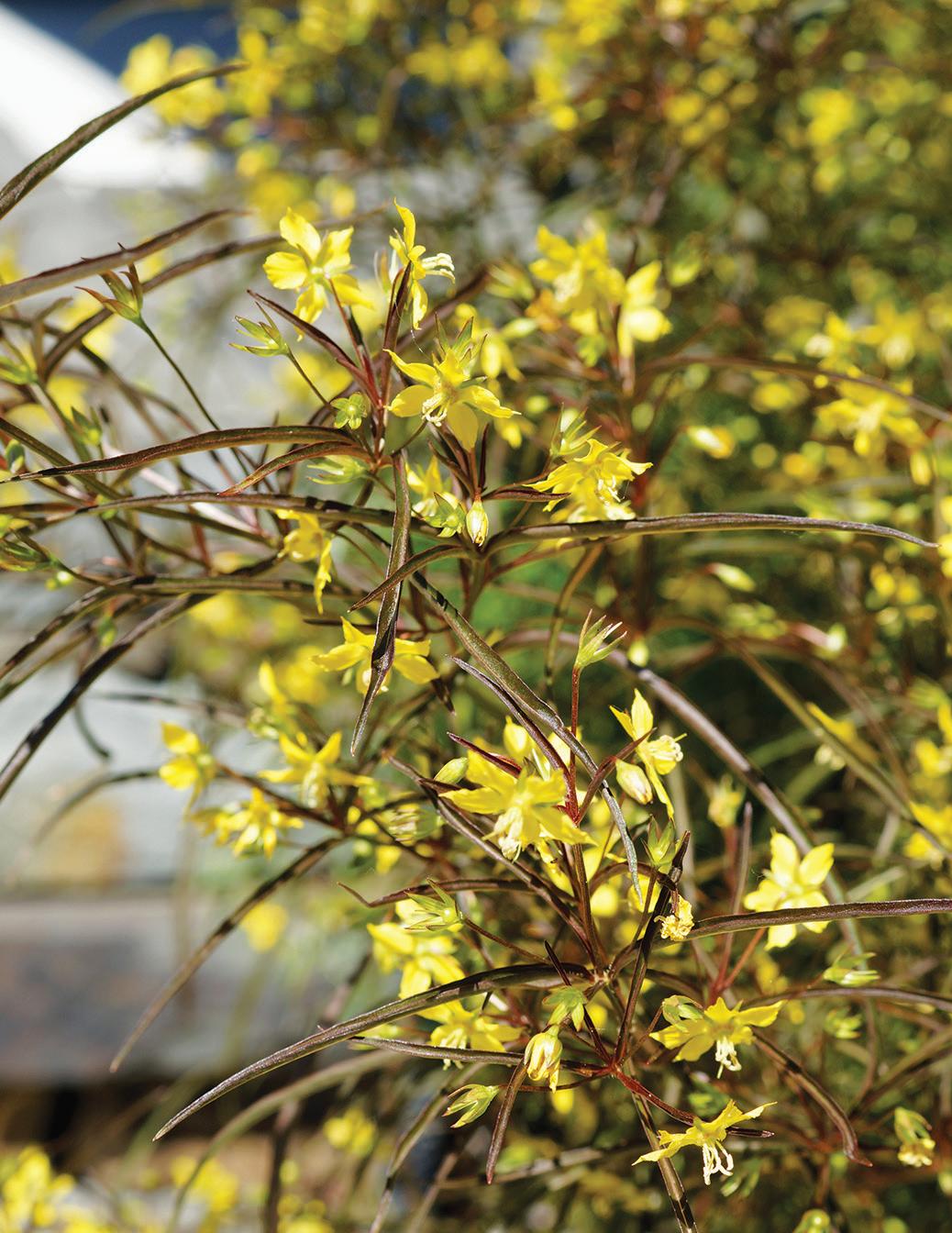

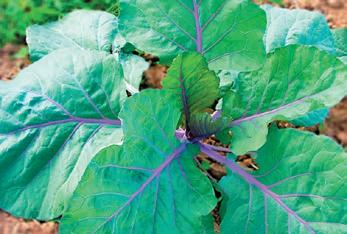
I’m sure the nursery industry is creative enough to find native alternatives for



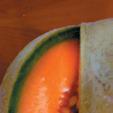


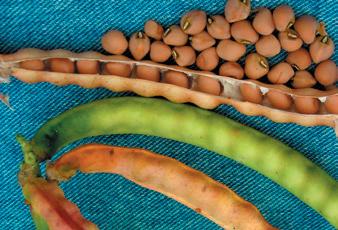
















popular non-native invasives. For example, instead of creeping Jenny, which is touted in the article as a popular yellow container plant, use Lysimachia lanceolata var. purpurea, a native relative of creeping Jenny with delicate red-tinged leaves and clouds of bright-yellow flowers. This plant is still hard to find; why doesn’t the industry focus on growing and promoting this native instead of the non-native?
When you consider that every nonnative shrub is taking the place of a native plant that could be hosting native



I noticed in Marissa’s bio that she makes her own bacon. I do too. I made a few batches of salt pork fit only for soups in the beginning; and really, I’m always game to try and improve on what I’ve learned. How would you feel about an article collaboration, a Q&A roundtable? I regularly take pictures of my bacon- and hammaking adventures, as well as the pigs they come from.
LeeAnne Zwinkel Donnelly, Idaho
LeeAnne, great idea! Let’s open it up to MOTHER EARTH NEWS readers. If you have any questions about home-cured pork, such as bacon, ham, salt pork, or other meats, send them to Letters@ MotherEarthNews.com. We’ll answer your questions promptly and include them in a future article for all readers to learn from. —
Marissa Ames, Editorial Director



caterpillars that feed native birds, being able to grow the various color varieties of Japanese barberry just doesn’t seem as important. As Professor Tallamy notes, in the past, the only thing we asked of our landscape plants was that they look pretty. As we come to understand the critical role of plants in our ecosystem, we realize they’re important sources of food and habitat for wildlife while also preventing erosion and purifying our water and air. Native plants are specifically adapted to do this, so why plant anything else?
I’m a board member of the southeastern Pennsylvania chapter of Wild Ones Natural Landscapers. Our website, https://SePa.WildOnes.org, includes a list of local nurseries that sell native plants. We’re also working on suggestion lists for natives plants to use instead of nonnative ornamental plants. The lists can be accessed on our website. Each month, we add a new category from our monthly newsletter, which is also available on our website.


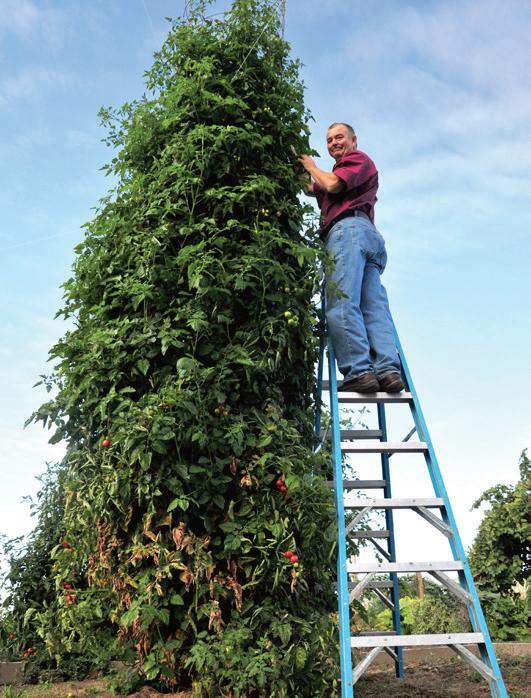

Wild Ones is a national organization with chapters in 29 states. I expect the chapters could help in locating nurseries in their areas. Each chapter has its own website, which should enable you to contact them. The national website, www. WildOnes.org, also has a nationwide list of nurseries.





Susan, we’re delighted to see so many yards embracing native plants that help native birds and pollinators. Thank you for sending along so many great resources!

Readers, in addition to the resources listed above, here are a few websites you



may find helpful in your quest to promote pollinator-friendly yards and properties:



• Region-specific native plants that help native birds: www.Audubon.org/ Native-Plants
• Region-specific native plants that help native pollinators: www.Wildflower.org/ Collections.
• And to find nurseries that sell these plants: www.PlantNative.org/National_ Nursery_dir_main.htm — MOTHER
I live in a small house on a small lot. Your stories are good; however, they’re not that useful for me and many others. The stories about self-sufficiency are all from large properties and farms, or from people who are more wealthy than myself. What can a person do to raise as much food as possible in a smaller area without grow lights, pumps, and smells that offend?
I’m in my 60s, and my income is minimal. I would like to be able to raise enough food to can, dry, and use for my wife and myself. Please provide more articles that offer solutions for small places.
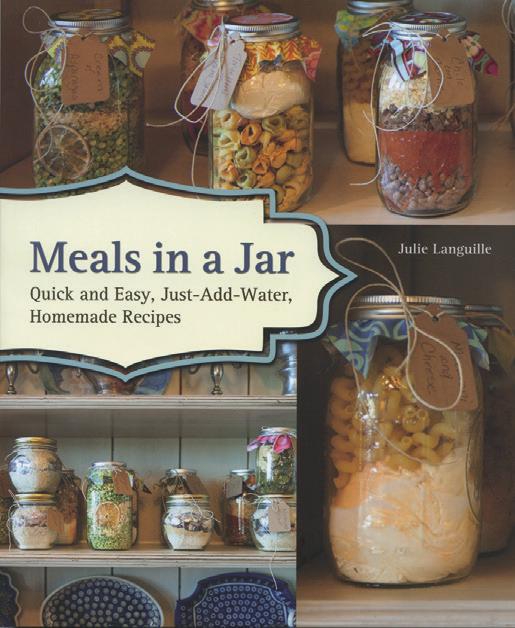




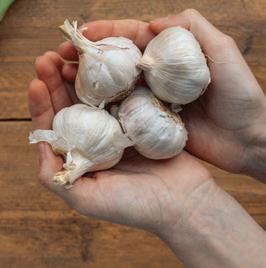


MOTHER EARTH NEWS Reader

Via email


Started in 1970 to raise awareness of environmental concerns and to provide information and support for a simpler lifestyle, MOTHER EARTH NEWS has made it this far because of continuous interest from you, the readers. Your dedication to living more sustainable lives has kept this magazine afloat through five decades and an increasingly digital world, and we’d love to hear from you. Send photos of your farm, your garden, and any projects you’ve undertaken over the past five decades to Letters@ MotherEarthNews.com. Or, mail a letter to Dear MOTHER, 1503 SW 42nd St., Topeka, KS 66609. Please send your full name, address, and phone number. We may edit for clarity and length.

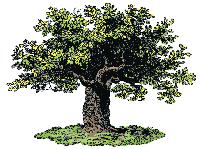
As a reader of Mother Earth News, you qualify to receive a free $39 bottle of rare, fresh-pressed extra virgin olive oil direct from the new harvest at one of the world’s top artisanal farms. Pay $1 shipping and it’s yours free as your introduction to the FreshPressed Olive Oil Club, with no commitment to buy anything, now or ever.
As the culinary experts at America’s Test Kitchen have said, when it comes to olive oil, “the fresher, the better.”
Freshness endows olive oil with extraordinary flavor because the olive is a fruit and olive oil is a fruit juice. Just like other fruit juices such as orange juice, olive oil is at its zenith of robust flavor and nutritional goodness when fresh-pressed.
Your first taste of fresh-pressed olive oil will be a revelation. Just born of earth and tree, farm-fresh olive oil is bright, vivid, and grassy, like a garden in a bottle.
Problem is, you can’t find farm-fresh olive oil in supermarkets. That’s because most olive oils are sent here by slow cargo ships, perhaps months or even a year after the harvest in their native country. Then these oils sit on store shelves for more months, even years, growing dull, lifeless, stale, and finally rancid.
Never again tolerate stale oil! Of course, we all insist on fresh milk, fresh eggs, fresh fish, fresh meat, fresh fruit, and fresh vegetables. In every case, freshness makes a big difference in flavor and nutrition, right?
Don’t we deserve fresh olive oil? Of course! But you’ll never find it in supermarkets. However, now you can have it delivered to your door direct from the latest harvests at top-rated, gold medal-winning artisanal farms. At last, a farmto-table solution
My name is T. J. Robinson. As a food writer and former chef,
I’ve launched an exclusive club for those who, like me, demand nothing less than the freshest, most flavorful, and purest artisanal olive oils in the world. Our group is called the Fresh-Pressed Olive Oil Club.

Four times a year, I travel to the latest olive harvests around the world. From scores of the finest extra virgin olive oils at awardwinning artisanal farms, I choose the three best oils of the harvest. Then I rush a three-bottle set to each of my eagerly awaiting club members. Conveniently, this works out to one bottle per month.
Members can choose either the larger set (three 16.9 oz. bottles) for $139 per quarter… or the smaller set (three 8.45 oz. bottles) for $99 per quarter. These prices include all shipping and handling.
For this reasonably modest sum, you’ll enjoy three months of outrageously flavorful farmfresh olive oil rushed to you direct from the harvest. Members say these best-of-the-best fresh oils are well worth the cost, since each bottle elevates dozens of meals to new heights of dining pleasure.
Every oil is independently lab certified to be 100% extra virgin olive oil. Every oil also comes with a 100% money-back guarantee. You don’t even have to return the oil to receive your 100% refund.
Every oil arrives with a Pressing Report that helps you cultivate your palate, quickly turning you into a connoisseur of the finest extra virgin olive oils in the world. I also include lots of delicious kitchen-tested recipes from each oil’s native land, plus
profiles of the proud artisans who produced each oil.
The club is truly an adventure in olive oil appreciation. Your family and guests will love these oils.
Available nowhere else in America, these oils have caused quite a sensation in the food world.
TV Chef Chris Kimball says: “When we tasted T. J.’s harvestfresh olive oils here at Milk Street, we fell in love with their vibrant, grassy flavors.”

Food journalist Larry Olmsted writes in his best-selling book Real Food/Fake Food, “I now get most of my oil from T. J. Robinson’s Fresh-Pressed Olive Oil Club, and every time I open a bottle, my kitchen literally fills up with the smell of fresh-crushed olives—the scent explodes out of the bottle. Just breaking the seal transports me to Italy or Spain or Chile.”
“I have died and gone to Italy!!!”
Jennifer of Newport, RI, says in her review, “I have died and gone to Italy!!! I love these oils.”
Joy of Salem, OR, writes, “Words cannot describe this! Pssst—since no one else was around, I even licked my plate clean—yummy!”
Try a free full-size bottle and then decide
All I ask is that you try one of my full-size bottles—on the house— and then decide. There’s no commitment to buy anything, ever.
The only reason we can make such a generous free-sample offer is because the vast majority of those who try our olive oil want more of it. I believe you will, too, once you try this divine harvest-fresh olive oil on your crisp salads, delicate fish, grilled steaks, fresh veggies, or luscious pastas, or simply on a hunk of warm, crusty bread or with a slice of tangy cheese. Mmm—so delish!
Happy drizzling!
T. J. Robinson, aka The Olive Oil Hunter®, is one of the world’s most respected authorities on all matters of olive oil. Known for his “platinum palate,” he is one of the few Americans invited to serve as a judge in Italian olive oil tasting competitions.If you’ve never tasted extra virgin olive oil fresh from the farm, get ready for a revelation...
WARNING: This product is not a safe alternative to cigarettes.

For more information on these ads see page 86.

These cosmetics increase your attractiveness. Created by the co-discoverer of human pheromones. Dr. Winnifred Cutler has authored 8 books on wellness and 50 scientific papers.

for women for men tm unscented fragrance additives
♥ Sybil (NY) “Following my divorce, I began dating again at age 50. Began using your products and am currently juggling 3 attractive men. I haven’t had this kind of attention in decades.”

♥ Joseph (MI) “Fabulous product. You did the research, the double blind studies! I am married and am with my wife only. Well within 5 days it was amazing. The affection level went up 20 fold. I am so grateful to you Dr. Cutler.”
athenainstitute.com
Vial of 1/6 oz. added to 2-4 oz. of your fragrance lasts 4 to 6 mos., or use straight Contains human synthesized pheromones.

Works for most, but not all. Cosmetic products; not aphrodisiacs. No animal testing.

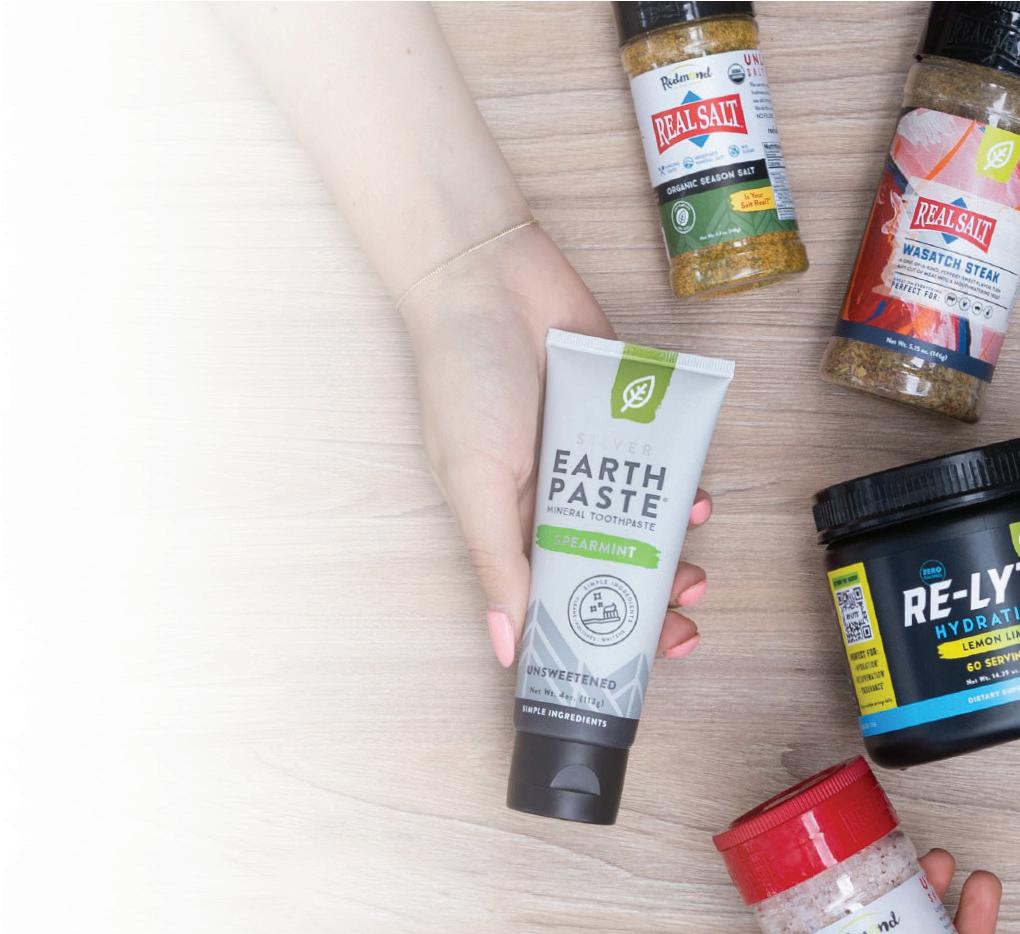
NOT SOLD IN STORES. F ree US Shipping
Call (610) 827-2200 – Order online or send to: Athena Institute, Dept MEN, 1211 Braefield Rd. Chester Springs, PA 19425
Please send me__vials of 10:13 for women@$98.50 and/or___ vials of 10X for men @$99.50 for a *total _____ by: ❑ money order, ❑ check

❑ Visa,M/C,Disc.______-_______-_______-_______
Exp._____ CVV:____ Sign:__________________ to: Name______________________________
Address_______________________________
City/State_________________zip__________
Tel:______________ email___________________
(*PA add 6% tax, We ship abroad—See website) MEN



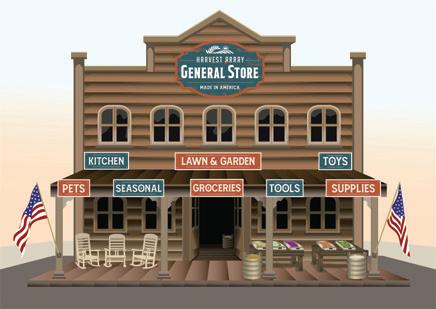







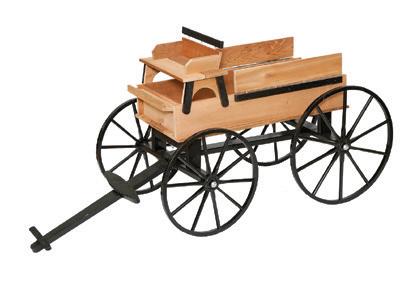

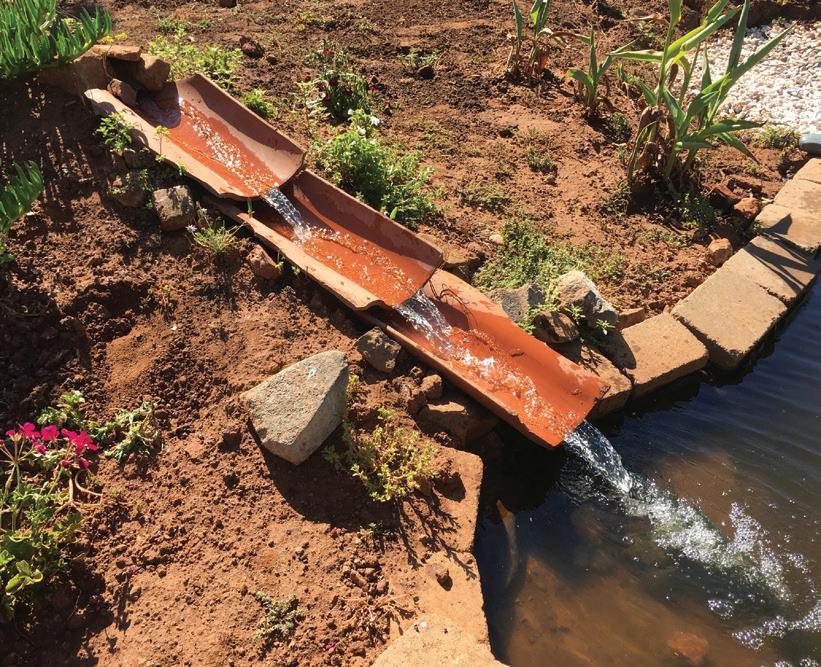



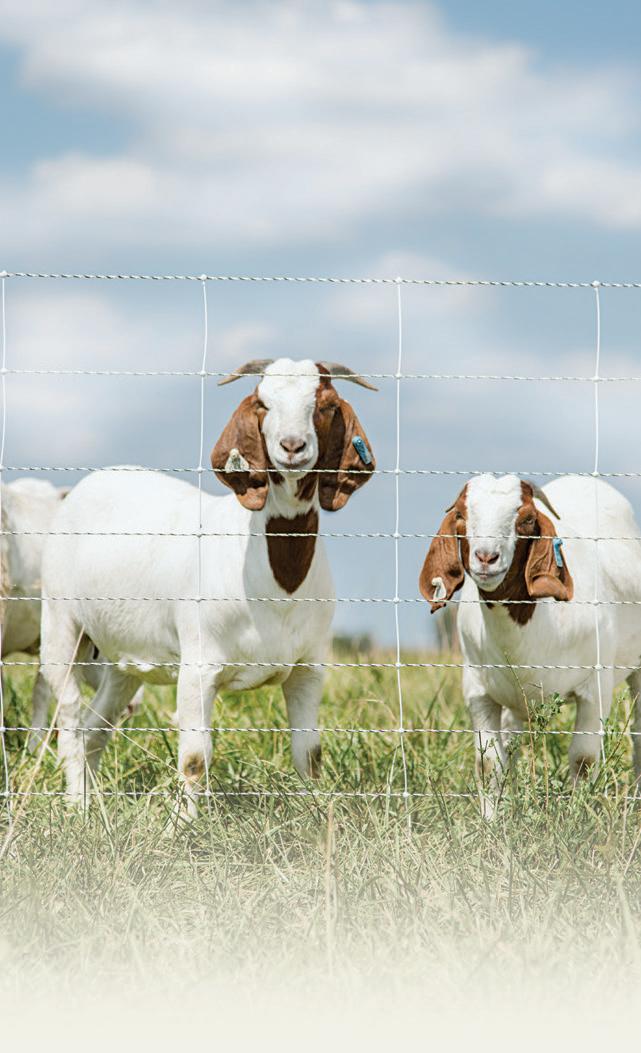






















































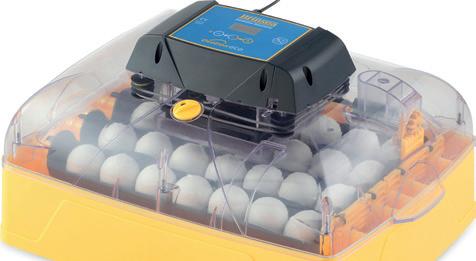






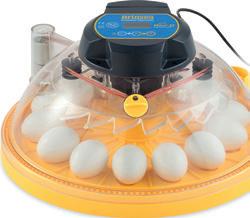





















































Classified ad information, contact Connie: 866-848-5416; email classifieds@MotherEarthNews.com; fax 785-274-4316
ALTERNATIVE BUILDING
Fully illustrated DIY manual, detailed step-by-step instructions for building an off-grid, completely solar cabin. Can be owner-built for a few $K. $20. 828-371-6086 or email ldfranklinxx@yahoo.com
PUMP WATER UPHILL. No gas or electricity with Ram or Solar Pump. Free Energy-Sun or Gravity. 800-227-8511. www.theramcompany.com

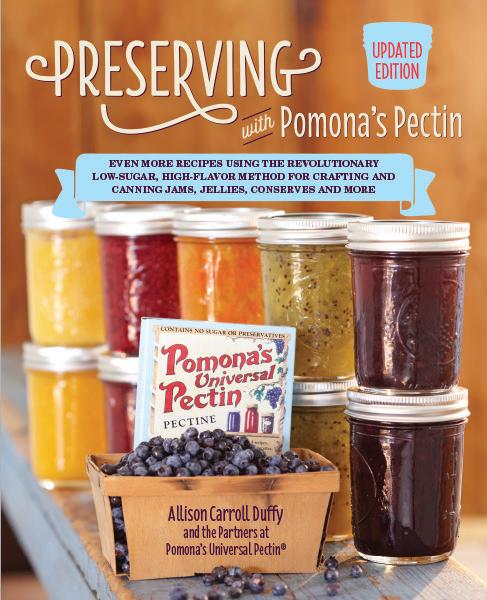
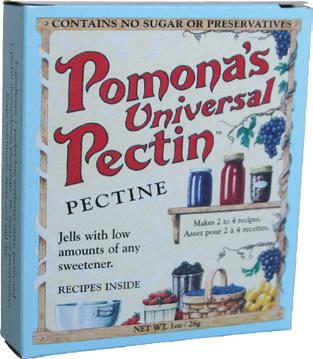
Make jam & jelly with low amounts of any sweetener. No Sugar, Preservatives, or GMOs
BUILD UNDERGROUND houses/shelters/greenhouses dirtcheap! Live protected. Slash energy costs. Featured on HDTV. “Radical and innovated“ Mother Earth News 800-328-8790 www.undergroundhousing.com

The MIDNIGHT CRY has sounded. The angel of REVELATION 14:6 has come. Free literature. 800752-1507; www.ccem1929.com
Do you love to write or wish you could? Scribbly is a gentle and whimsical writing program for women. Each issue is beautifully illustrated with easy-to-follow writing prompts. We mail Scribbly to your home – you’ll love it! 1-month/3-month/6-month subscriptions. www.kimdukewrites.com/Scribbly


OUTDOOR WOOD FURNACE
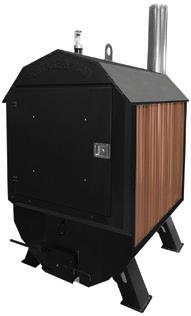
The industry leader in proven clean burn technology

• All Fire no smoke.
• Combustion efficiency 99.5%
• Burns up to 60% less wood
• 7 industry firsts
• Carbon neutral



• Oldest renewable energy.

• Compatible with off-grid use
GREEN HOME BUSINESS Make a living while making a difference working from home. P/T or F/T. Flexible hours. No large investment. www.EcoTeamUnited.com
Seatweaving Supplies
Chair cane, reed splint, Shaker Tape, fiber & natural rush. Complete line of basketmaking suplies. Waxed linen cord. Royalwood Ltd., 517-MEL Woodville Rd., Mansfield, Ohio 44907. 800-526-1630.
www.RoyalwoodLtd.com

VITAZYME - OMRI approved biostimulant helps plants utilize nutrients allowing them to grow to their genetic potential. Sold world-wide. PlantDesigns.com/ vitzayme. 800-728-2716 for pricing, information & ordering.
For sale: Personal collection of 198+ rare heirloom varieties + catalogs/more from Baker Creek Seeds, SSE, others. Contact vincent.todd@myyahoo.com
SOON Church/Government uniting, suppressing RELIGIOUS LIBERTY enforcing NATIONAL SUNDAY LAW. Be informed!
TBSM, BOX 374, Ellijay, GA 30540 tbsmads@yahoo.com
1-888-211-1715.
CONTACT
Ultimate Outdoor Furnace LLC Les Radcliffe 507-254-0622
Polar Furnace Factory Rep Dealer/Agent opportunities www.ultimateoutdoorfurnace.com

Place a classified ad in MOTHER EARTH NEWS
Call 866-848-5416 or email croberts@ogdenpubs.com


ONE SCYTHE REVOLUTION Selling Europe’s best scythe blades, adjustable wooden snaths, accessories, and permaculture hand tools. onescytherevolution.com
507-454-4121

SCYTHESUPPLY.COM European scythes. Mow where your tractor can’t go. Custom-made handles(snaths). 496 Shore Road Perry, Maine 04667 207-853-4750 Free Catalog. www.scythesupply. com, FREE hat with scythe outfit: use code MEN at checkout.
BUILD WITH PVC
-Specialized Fittings-Free Plans-Snap Clamps & PVC KitsCirco Innovations, Inc. 877-762-7782

www.circoinnovations.com

FREE SHIPPING on Drip Irrigation Kits for Small or Large Gardens and Hobby Farmers! Growing Accessories, Mulch, Twine and more! Fast Shipping. Free Catalog. www.berryhilldrip.com


AMAZING GARDEN TOOLS!
Broadforks for deep soil prep. Wheel Hoes for fast weeding. We make THE BEST. See videos online: valleyoaktool.com Call 530-342-6188
Surgical augmentation is needlessly desecrating in light of dramatic, perennial enlargement organically achieved w/unprecedented, holistic proprietary formula. Brochure: 1-800-967-2177 www.BeautyVantage.com


Your Product Source for Homesteading, and More! All Farm, Ranch and Dairy Supply! Gift Certificates! (928)583-0254. www.HomesteaderSupply.com
Highland Cattle Registry Heartland Highland Cattle Association & Registry Open Registry for Foundation Highlands

For more info and a free information packet 417.345.0575 or text 417.733.3201 heartlandhighlandcattle@gmail.com www.heartlandhighlandcattleassociation.org highlandauction.com hhcaregistry@gmail.com
MACHINERY/TOOLS/ SUPPLIES
LUNATEC Hydration Spray Bottles combine a garden hose, shower, kitchen faucet and water bottle in one. Cool off, clean off and drink. They’re perfect for gardening, camping, sports and more. www.lunatecgear.com

NEPTUNE HARVEST ORGANIC FERTILIZERS: Liquid Fish, Seaweed, Blends, Dry Kelp Meal and Crab Shell also repellents and more. 800-259-4769. FREE CATALOGS. Wholesale/Retail/ Farm. www.neptunesharvest.com

Greenhouse Kits, Super Strong Greenhouse Plastic, Containers, Pots and Containers Garden
Drip Irrigation, Jiffy Peat Pots, Sprinklers, Greenhouse supplies 866-928-3390.
www.growerssolution.com
We make hanging Laundry a Breeze!

High quality pulley clotheslines crafted in the USA, delivered to your door. 330-403-3010
www.skylineclotheslines.com
LUNATEC Odor-Free Dishcloths and Self-Cleaning Washcloths stay odor-free, dry in minutes, rinse clean and have less bacteria than sponges or cotton cloths. Try them today. www.lunatecgear.com
CROSSCUT SAWS: Saw tools, knives, firewood-cutting, people-powered tools. Catalog $1.00. ($3.00 Canada/ Overseas). Crosscut Saw Company, PO Box 7875, Seneca Falls, NY 13148; 315-568-5755; CrossCutSaw.com

GREENSINGLES.COM Ready for a meaningful, conscious relationship? Meet someone who loves Mother Earth as much as you! It’s time, you’re next!
Christian Singles Catalog. Personal ads. Photos. Pen pals. Sample $1. Singles, Box 310-MN, Allardt, TN 38504. 931-879-4625. www.nicesingles.com


Yeeooowwwww ! - Is the World’s Hottest Pepper growing in your garden? Find out with “Dremann’s Heat Search” -- the alternative to Guinness World Records. See ecoseeds.com/heat-search.html
Our Chocolate Champion® is 1.662 million Scovilles - beating the Reaper! www.ecoseeds.com
Redwood City Seed Company Box 361, Redwood City, CA 94064 Since 1972 Phone 650-325-7333
Southern Exposure Seed Exchange
Open-pollinated, Heirloom & Organic Seeds & Garlic selected for flavor and local adaptability. Free Catalog 540-894-9480. www.southernexposure.com

American Elderberry Juice Products and Plants. Farmer Grown & Farmer Owned Right Here In The Midwest. SEE YOU AT THE NEXT FAIR! 573.999.3034.
www.RiverHillsHarvest.com

Go to www.chickendoors.com for the best automated door on the market or call 512-995-0058.
Myers Poultry Farm - FREE CATALOG. Chicks (9 meat varieties), Ducklings, Goslings, Turkeys, Guineas, more. 966 Ragers Hill Road, South Fork, PA 15956; 814539-7026 www.myerspoultry.com
FREE COLOR CATALOG 203 varieties shipped to your local post office, chickens, rare breeds, bantams, ducks, geese, turkeys, guineas, pheasants, quail, supplies and videos. Since “1936” Cackle Hatchery PO Box 529, Lebanon, MO 65536, 417-5324581. cacklehatchery.com

Customizable Amish-built coops that last a lifetime. Commercial, small farm, and backyard sizes available.
www.HappyFarmer.store

Daniel Kauffman
717-224-6827
Keeping your flock safe has never been easier or more reliable. With only one moving part, no mechanical switches and no calibration ChickSafe are the ultimate rugged, fuss-free automatic coop door openers with 3 year warranty.

www.Brinsea.com
Hatching your own chicks is fun, easy and affordable with Brinsea Forget Styrofoam incubators andwatch your eggs hatch every time. Quality incubators since 1976 - durable, easy to clean, user friendly digital controls and 3-year warranty. Free color catalog. www.Brinsea.com

1-888-667-7009.
Nature’s Best provides premium ingredients and customer service manufacturing organic, nonGMO feed across North America. Nature’s Best knows what is important to their customers and continually strives to provide trusted products and healthy, innovative options from poultry to livestock feeds.

Stromberg’s Chicks & Game Birds
Unlimited is your one-stop shop for all things poultry! We carry a full line of incubators, brooders, feeders & waterers, feeds, coops & pen supplies, egg supplies, and processing equipment. Check out our great selection of chicks & birds! Request a free catalog today! 800-720-1134, www.strombergschickens.com
The Egg Carton Store Best Prices, selection, high quality. 40 years of egg packaging and marketing expertise! Egg Cartons, Filler Flats, Stamps, Egg Cases, Nesting Boxes, Supplies, Poultry Care, Custom Cartons and Labels. Call for GREAT wholesale/pallet quantity pricing! 866-333-1132. FREE SHIPPING on all cartons and filler flats.
WWW.EGGCARTONSTORE.COM

1-888-667-7009. CHECK OUT OUR AD IN THE GENERAL STORE!!

Local Hens Find Good Stuff Grown nearby. Join more than 3,000 other farms and connect directly with consumers by listing your farm. Your FREE farm profile can showcase products with farm photos, your farm story, and google map locations where you sell. Made for ALL farms and food types. WWW.LOCALHENS.COM

11750 Hillcrest Road, Medford, Oregon. Harnessing the power of the creek and sun with hydro and solar, this 100 acre off-grid retreat offers a unique sustainable living experience with 2 main cabins, Loveshack building, Creek cabin, and bunkhouse, and is adorned with fruit trees, 6 ponds, koi ponds, and includes a sauna, greenhouse, and inground root cellar. 541-292-3333.
Ideal Poultry Breeding Farms, Inc. Supplying quality backyard poultry since 1937. www.idealpoultry.com 1-800-243-3257.

80 acre prepared homestead. Earth sheltered, bullet proof off grid home, solar electricity. Easy access. Ponds. Marketable timber. $488,000.00 or gold. Republic, Washington. (509) 207-0736


Shop McMurray
Hatchery for the highest quality and guaranteed rare and Heritage breed poultry, low minimums, and all the supplies you need to raise your flock. Offering day-old standard and bantam baby chicks, ducks, geese, turkeys, guineas, pheasants, quail, and more! Request a FREE CATALOG at McMurrayHatchery.com or by calling 800.456.3280.

Aluminum chicken tractors, great for mobile pasture raised chickens. Call 785-289-3807.

www.naturalgramma.com
Come see us at the Ozarks Homesteading Expo, August 25-26, Marshfield, MO.
1890 Victorian brick farmhouse, 9 rooms 30 miles from Plattsburgh and Montreal. 50 acres, sugarbush, riding trails. 175K Photos & Video available. minervasowl2@earthlink.net
NRR Hatchery has been a family owned and operated farm in Northeast Oklahoma since 2013.

1 Day Old Chicks, Hatching Eggs, Fresh Eggs, Mealworms and Farm Goods. Local Pickup and Shipping Available. For more information visit our webiste at www.nrrhatchery.com
3 cabins, large shop with studio apartment on 5 partially wooden flat acres, 5 miles from the highway to Mt. St. Helens and 10 miles from 1-5 and the town of Castle Rock. $495.000. Caroline Wood (360) 751-1363 email. reallysweetcaroline@gmail.com


Want to enjoy cooking, canning, and preserving food? Want to learn from the Stoltzfus’s Alaskan homesteading stories and advice? Join thousands of other self-reliant users of the Alaskan Housewife Cookbook and be glad you did. www. AlaskanHousewifeCookbook.com
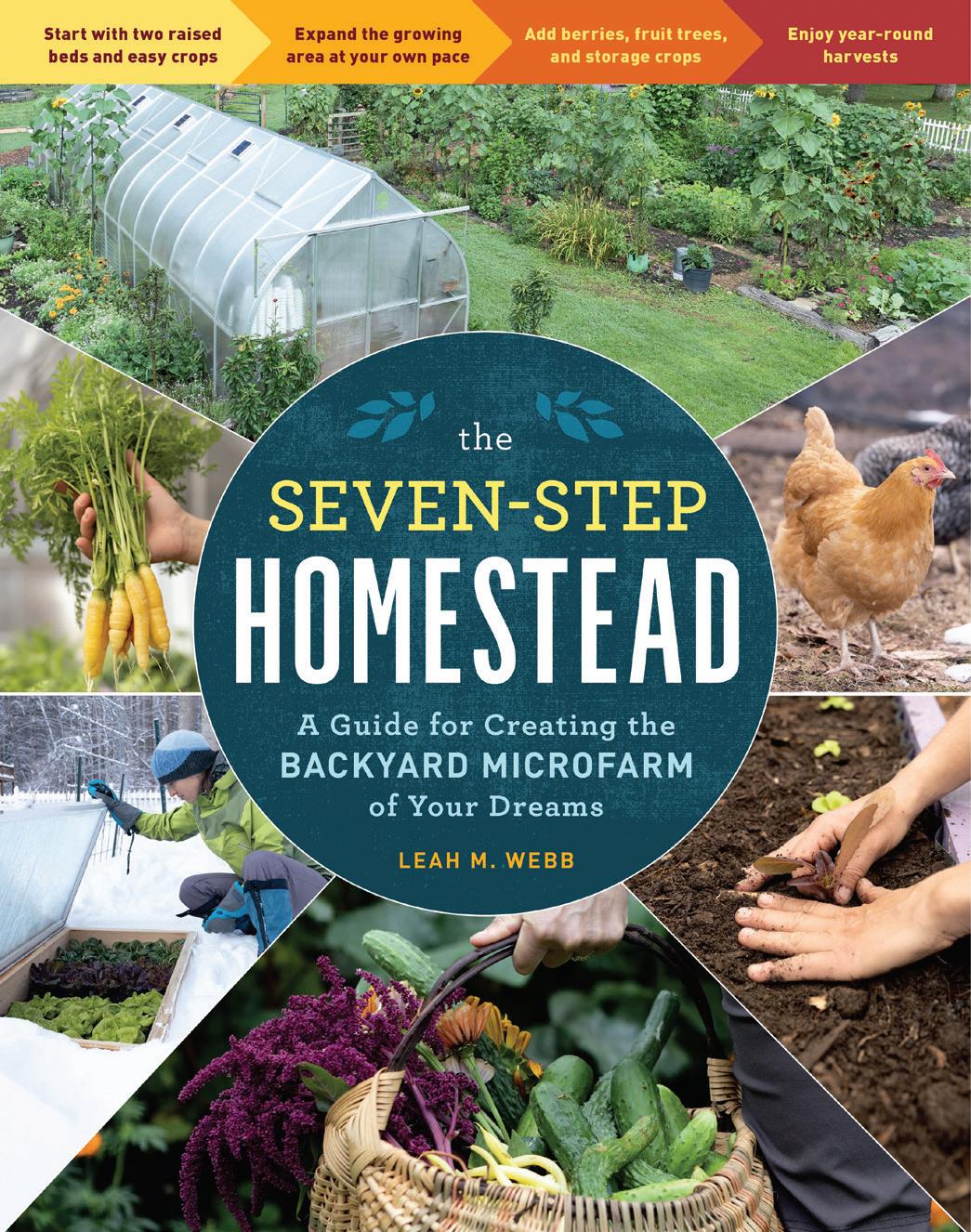





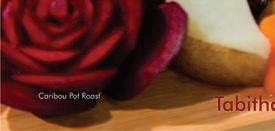
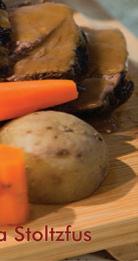

BANDSAW SAWMILL KITS
Available Complete or Buy Part/ Build Part. Free brochure. Call 1-541367-6900 Web: www.linnlumber.com


DON’T WASTE THOSE LOGS!

Cut lumber, slabs beams. The Alaskan® Chainsaw Mill. Made in the USA. Portable, affordable, accurate. 800-233-6499; www.granberg.com






TRY THIS BEFORE PUMPING your septic system or replacing your drain field!




Accelerator by Dr. Pooper
Drain Field Cleaner is a revolutionary non-toxic commercial-strength septic treatment that clears organic solids from septic tanks and drain fields.



Money-back-guarantee! Order at DoctorPooper.com
Blitz two-wheel tractors. Heavy-duty workshorse for your farm/hometsead. Dailey’s Farm & walk Behind Tractors. 931.796.3197www.daileysbcssales.com
Today’s gardeners want a bit of everything—vegetables, fruit, medicinal herbs, flowers for pollinators, and even chickens for eggs. The dream is to build a diverse landscape that serves mul�ple func�ons, but achieving that goal can be in�mida�ng and overwhelming. Homesteader Leah M. Webb shares her strategy for implemen�ng a homestead plan in seven stages by star�ng small and gradually adding more features each year.
Item #11944 · $24.99


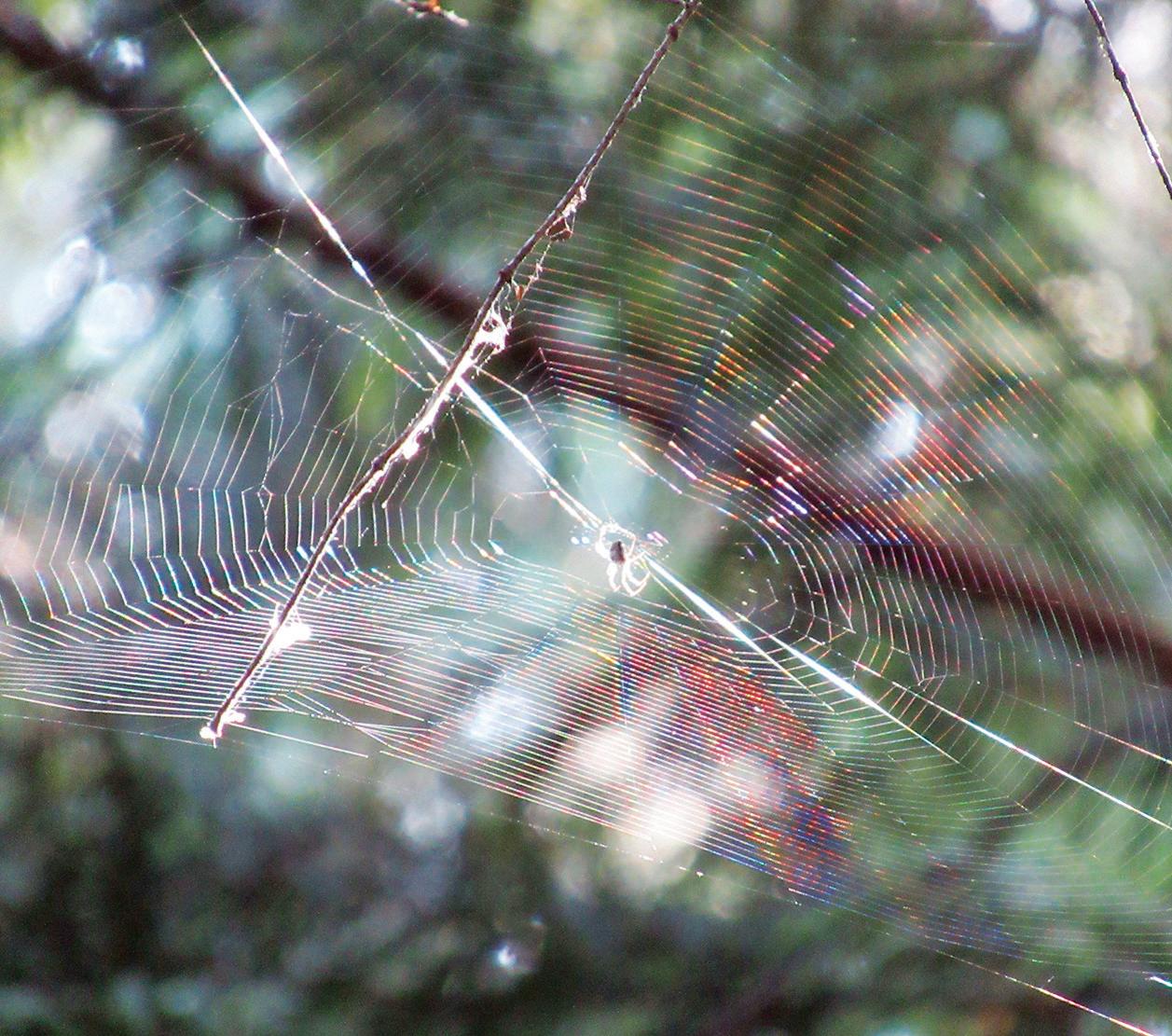


As a reader of Mother Earth News, you qualify to receive a free bottle of fresh-pressed extra virgin olive oil (valued at $39). It comes to you direct from the new harvest at one of the world’s top artisanal farms, courtesy of T. J. Robinson, the Olive Oil Hunter. Pay just $1 to help cover shipping, and it’s yours. Please see announcement on page 87 of this issue.












